|
Lord
Shiva
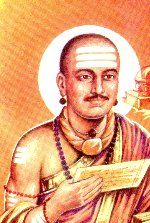 Basavanna
(1106 - 1167) was
the leader and saint of the medieval religious Bhakti
movement. Basavanna
(1106 - 1167) was
the leader and saint of the medieval religious Bhakti
movement.
The rich
Will make temple for Shiva
What shall I
a poor man,
do?
My legs
are pillars
the body are shrine
the head a cupola
of gold.
Listen, O lord of the meeting rivers,
things, standing shall fall,
but the moving ever shall stay.
(source:
Speaking of Siva - Translated By A K
Ramanujan).
***
Lord
Shiva - By Sir
Alfred Comyn Lyall
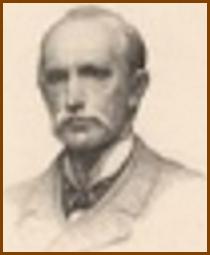 Sir
Alfred Comyn Lyall (1835
– 1911)
was a British civil servant, literary historian and poet. He was
born at Coulsdon in
Surrey
, the second son of Alfred Lyall and Mary Drummond Broadwood,
daughter of James Shudi Broadwood. He died at Freshwater,
Isle of Wight
. Sir
Alfred Comyn Lyall (1835
– 1911)
was a British civil servant, literary historian and poet. He was
born at Coulsdon in
Surrey
, the second son of Alfred Lyall and Mary Drummond Broadwood,
daughter of James Shudi Broadwood. He died at Freshwater,
Isle of Wight
.
Throughout
his life Lyall also worked as a writer. As a biographer his
chosen subjects were Warren Hastings Lord Dufferin. As a
historian he was acclaimed for his imaginative as well as
philosophical insights into the course of Indian history. He
also produced a number of volumes of poetry.
He
has pictured Lord Shiva in
vivid verse:
I
am the God of the sensuous fire
That moulds all Nature in forms divine;
The symbols of death and of man’s desire,
The springs of change in the world, are mine;
The organs of birth and the circlet of bones,
And the light loves carved on the temple stones.
I am the lord of delights and pain,
Of the pest that killeth, of fruitful joys;
I rule the currents of heart and vein;
A touch gives passion, a look destroys;
In the heat and cold of my lightest breath
Is the might incarnate of Lust and Death.
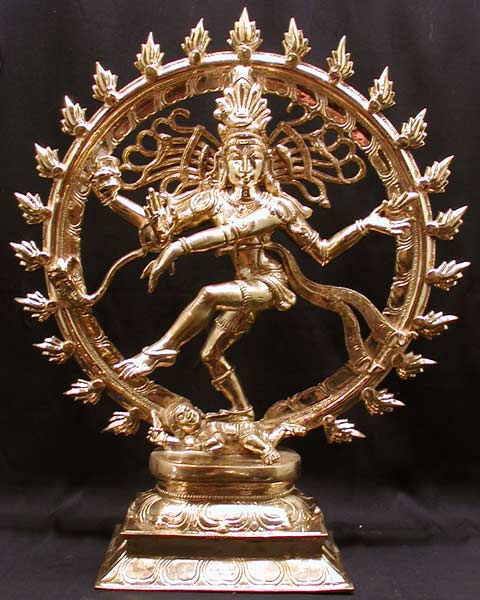
Shiva:
Lord of the Dance of the Universe.
***
If a thousand altars stream with blood
Of the victims slain by the chanting priest,
Is a great God lured by the savoury food?
I reck not of worship, or song, or feast;
But that millions perish, each hour that flies,
Is the mystic sign of my sacrifice.
Ye may plead and pray for the millions born;
They come like dew on the morning grass;
Your vows and vigils I hold in scorn,
The soul stays never, the stages pass;
All life is the play of the power that stirs
In the dance of my wanton worshippers.
And the strong swift river my shrine below
It runs, like man, its unending course
To the boundless sea from eternal snow;
Mine is the Fountain—and mine the Force
That spurs all nature to ceaseless strife;
And my image is Death at the gates of Life.
In many a legend and many a shape,
In the solemn grove and the crowded street,
I am the Slayer, whom none escape;
I am Death trod under a fair girl’s feet;
I govern the tides of the sentient sea
That ebbs and flows to eternity.
And the sum of the thought and the knowledge of man
Is the secret tale that my emblems tell;
Do ye seek God’s purpose, or trace his plan?
Ye may read your doom in my parable:
For the circle of life in its flower and its fall
Is the writing that runs on my temple wall.…
Let my temples fall, they are dark with age,
Let my idols break, they have stood their day;
On their deep hewn stones the primeval sage
Has figured the spells that endure always;
My presence may vanish from river and grove,
But I rule for ever in Death and Love.
(source:
Shiva
- By Sir
Alfred Comyn Lyall).
Pre-Islamic
Arabic Literature on Lord Shiva and Hinduism
Sair-ul-Okul
is an anthology of ancient Arabic poetry available in
the Turkish library Makhtab-e-Sultania in
Istanbul
. In this anthology is included a poem by Prophet Mohammed’s
uncle Omar-bin-e-Hassham.
The poem is in praise of Mahadev
(Shiva), and uses ‘Hind’ for
India
and ‘Hindu’ for Indians. Some verses are quoted below:
Wa
Abaloha ajabu armeeman Mahadevo Manojail ilamuddin minhum wa
sayattaru
If but once one worships Mahadev
with devotion, One will attain the ultimate
salvation.
Wa
sahabi Kay yam feema Kamil Hinda e
Yauman
,
Wa
Yakulam na latabahan foeennak Tawajjaru. (Oh
Lord grant me but one day’s sojourn in Hind, Where one can
attain spiritual bliss.)
(source: Antiquity
and Origin of the Term ‘Hindu’
-
By Dr. Murlidhar H. Pahoja).
Top
of Page
Mahakaleshwar-
the third revered Jyotirlinga
Call it a city of famous
Hindu king Vikramaditya or great poet Kalidas or city of
Tantriks
,
Ujjain
is known for its great cultural and spiritual importance like
Varanasi
or Benaras.
Ujjain
, the erstwhile state capital of Malva region is now also one of the major
cities of Madhya Pradesh. Situated 183 km west of state capital
Bhopal
.
Ujjain
is also known for its Simhastha Kumbha
Parva.
Ujjain
and Mahakal are synonymous with each other. For each Hindu devotee,
Ujjain
means Mahakal.
Yes,Mahakaleshwar is the presiding deity of
Ujjain
and it is the third sacred Jyotirlinga of Hindu Dwadash Jyotirlinga circuit.
Mahakal:
The Lord of the earth and legend

Mahakaleshwar temple
***
According to Hindu
scriptures, the universe is seen as consisting of three regions-the sky, the
earth and the nether. Mahakal is Lord of the earth. Out of the 12 Jyotirlingas,
only Mahakal is known as the Lord of the earth and Lord of the death. The
meaning of Mahakal is taken as Lord of Time and also Lord of death. In
astronomical calculations, Shanku
Yantra is an important instrument. It is believed that at the centre of
earth
Ujjain
at the place of that shanku yantra the Jyotirlinga Mahakala is established.
From this place the astronomical calculations for the entire world was done.
Avantikhand of Skand
Purana narrates that it was a Mahakalvan(forest)
and it was a favoured place for penance for Yaksha,
Rishis Gandharvas etc. There are two stories related to Mahakaleshwar.
According to one story
there was a ruler of
Ujjain
called Chandrasen(some also call as Vrishabhsen), who was a pious devotee of
Lord Shiva and worshipped him all the time. One day, a farmer's boy named
Shrikhar was walking on the grounds of the palace and heard the King chant the
Lord's name and rushed to the temple to pray with him. However, the guards
removed him by force and sent him to the outskirts of the city near the river Shipra.
Meanwhile, kings of the
neighboring kingdoms decided to attack on
Ujjain
. Hearing this, Shrikhar started to pray and the news spread to a priest named
Vridhi. He was shocked to hear this and upon the urgent pleas of his sons, he
prayed to Lord Shiva inside the river Shipra. The Kings chose to attack and were
successful. With the help of the powerful demon Dushan, who was blessed by Lord Brahma to be invisible, they
plundered the city and attacked all the devotees of Lord Shiva.
Upon hearing the pleas of
his helpless devotees, Lord Shiva appeared in his Mahakal form and destroyed the enemies of King Chandrasen. Upon
the request of his devotees Shrikhar and Vridhi, Lord Shiva agreed to reside in
the city and become the chief deity of the Kingdom and take care of it against
its enemies and to protect all his devotees. From that day on, Lord Shiva
resided in his light form as Mahakal in
a linga.
According to Matsyapuran,a
demon called Andhak once tried
to kidnap Goddess Parvati. Lord Shiva thus came into action and there was an
intense fight between Shiva and Andhak.
Lord Shiva created a world of Mahakals
to win over Andhak and finally
he succeeded. Thus Lord Shiva came to be known as Mahakal and
Ujjain
was also known as Mahakalpur.
The third story is about a
Brahmin. According to this
story, a Brahmin called Devvrata
was a devotee of Lord Shiva and he was staying with his four sons. Once the
family was performing Shiva pujan, a demon called Madandh dushan
attacked the family. To protect the Brahmin,
Lord Shiva emerged in the form of Bhutanath
and destroyed the demon. Lord Shiva stays in this place and hence it is
known as Mahakaleshwar.
Mahakaleshwar
Temple
Ved Vyas sang glory of
Mahakala in Mahabharat and so did poets like Kalidas, Banbhatt and Bhoja.In 11th
century, the temple was renovated during Parmar regime. In 1234,Sultan Iltutmish
of Delhi attacked on
Ujjain
and demolished Mahakal temple. From the Shivapuran
reference, it appears that the temple was built eight generations before Nanda,
the guardian of Lord Krishna. Perhaps at that time the Jyotirlinga was
established. The Shikhar of the temple has been high and the premises been large
from ancient times.
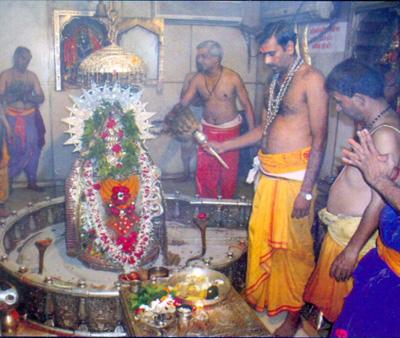
Mahakaleshwar Jyotirlinga is
situated below ground level in the main temple. The idol of Mahakaleshwar is
known to be dakshinamurti,
facing the south.
To
attend Bhasma Arti in
Mahakaleshwar is desire for every Hindu devotee.
***
The present
temple
of
Mahakaleshwar
located near a lake is set upon a spacious courtyard and surrounded by massive
walls. It has five levels, one of which is underground. The Shikhar is
sculptural finery. Brass lamps light the way to the underground sanctum. The
present beautiful temple was constructed by Sukhtankar Ramchandra Baba Shenavi,
a divan of Ranoji Shinde during Bajirao
Peshwa regime in 18th century.
Mahakaleshwar
Sanctum
Mahakaleshwar Jyotirlinga
is situated below ground level in the main temple. The idol of Mahakaleshwar is
known to be dakshinamurti,
facing the south. This is a unique feature upheld by tantric traditions to be
found only in Mahakaleshwar among the 12 Jyotirlingas. Due to these
considerations, worship of Shri Mahakal with vedic mantras proves fruitful for
the devotee.
The idol of Omkareshwar
Shiva is consecrated in the sanctum above the Mahakal shrine. The images of
Ganesh, Parvati and Kartikeya are installed in the west, north and east of the
sanctum. To the south is the image of Nandi. The idol of Nagchandreshwar on the
third storey is open for darshan only on the day of Nagpanchmi.
Mahakal
and Bhasma Arti
To attend Bhasma
Arti in Mahakaleshwar is desire for every Hindu devotee. Mahakal and Bhasma
Arti are synonymous with each other. Bhasma
means ash. Mahakaleshwar is the only Jyotirlinga temple,where the Bhasma Arti is performed. Amidst vedic chants and strotras and
sounds of cymbals, conchs and damru, the Bhasma
arti is performed every morning (Except the second day of Mahashivaratri)
(source: Mahakaleshwar-
the third revered Jyotirlinga - By Vipul K Shukla - gujaratglobal.com).
Top
of Page
Vedanta and
Shakara Shankara
(5th century BC) is a
prominent source of Hindu Wisdom. His literary output was
enormous. He not only made commentaries on the Vedanta Sutras,
the principal Upanishads and the Bhagavad Gita, but produced two
major philosophical works, the Upadeshasahasri and the
Vivek-chudamani (the Crest-Jewel of Discrimination). He was the
author of many poems, hymns, prayers, and minor works on
Vedanta. 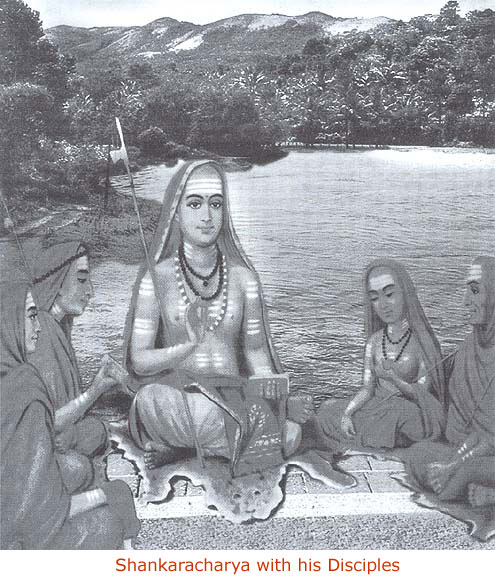
O
Lord, dweller within;
You are the light
In the heart's lotus.
Om is your very self,
Om, holiest word,
Seed and source of the scriptures.
Logic cannot discover
You, Lord, but the yogis
Know you in meditation.
In you are all God's faces,
His forms and aspects,
In you also
We find the guru.
In every heart you are
And if but once, only,
A man will open
His mind to receive you
Truly that man
Is free forever. (source:
Sankara's Crest-Jewel of Discrimination
- Vivek Chudamani - Translated by Swami Prabhavananda and
Christopher Isherwood p. 1).
Top
of Page
Konark - The
Black Pagoda (Sun Temple) 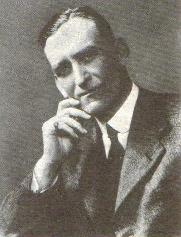 Sir
John Marshall
(1876 -
1958)
Director General of Archaeology of India said:
Sir
John Marshall
(1876 -
1958)
Director General of Archaeology of India said:
"There
is no monument of Hinduism....that is at once so stupendous and
so perfectly proportional as the Black Pagoda (Konark), and none
which leaves so deep an impression on the memory."
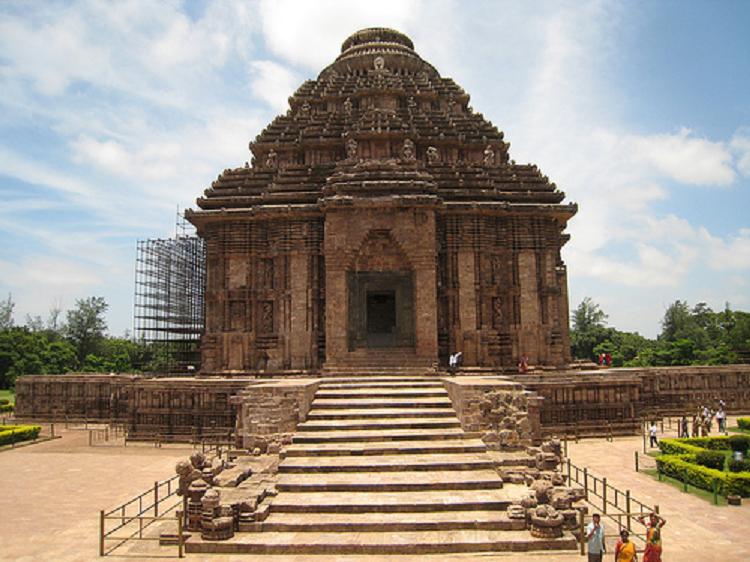
Konark
Sun Temple, Orissa. India "There
is no monument of Hinduism....that is at once so stupendous and
so perfectly proportional as the Black Pagoda (Konark), and none
which leaves so deep an impression on the memory."
***
Centuries
ago Abu Fasl, wrote of this
singular architecture:
“Its
cost was defrayed by twelve years’ revenue of the province.
Even those whose judgment is critical, and who are difficult to
please, stand astonished at its sight.”
We
stand astonished. We saw a great, ornate pile of the general
form common to Hindu architecture, in which the pyramid seems to
be the general origin of design. It was a species of flattened
pyramid, with lines and proportions exquisite and perfect.
As
we approached, an extraordinary wealth of sculptured decoration
made itself manifest, for the sloping faces of the Black Pagoda
were carved, inch by inch over all their huge expanse, with
countless figures in deep and delicate relief. I recalled the
telling phrase of the renowned Bishop
Heber, that the Hindus “build
like Titans, and finish like jewelers.”
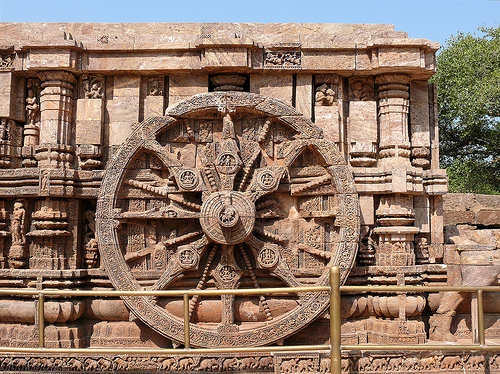
Delicately
carved fragment - Great
wheels are carved in the lower exterior walls to represent the
proper appendages of a chariot.
***
We
sauntered among broken masses of sculptured stone, where
accessories of the giant structure have fallen. We walked with
eyes now lowered to some delicately carved fragment, now lifted
to the majestic proportions of the temple. We trod the ancient
floors of lofty inner rooms and sanctuaries. The sculptures were
exquisite, some of them in a green stone almost as lovely as
jade.
The
temple has the symbolical design of a chariot, appropriately
symbolizing the sun god. Great wheels are carved in the lower
exterior walls to represent the proper appendages of a chariot.
Dominant among the human figures is the splendid presence of
Vishnu in his solar guise.

Lord
Surya (Sun God)
***
He
is seen in perfectly sculptured effigies of stone that are
models of proportion and of strength and delicacy.

(source:
India
Land
of the Black Pagoda - By
Lowell
Thomas p.
326 - 329).
Top
of Page
Tribal Jagannath as a Hindu deity
A
24-feet-tall Hanuman statue, installed at Sunset Point,
Kanyakumari, on September 21, 2008, was surreptitiously removed
by the Tamil Nadu administration in the wee hours of September
30 after alleged complaints from local fishermen.
The task was directed by Kanyakumari district collector Jyothi
Nirmala, who claimed, “The trust which installed the statue
had only obtained the permission of the panchayat and this was
insufficient.” The panchayat had permitted Chaitanya
Mahaprabhu Nama Bhiksha Kendra to create a ‘Hanuman Park,’
but, said vice-president S Pushparaj, “My wife Felicity,
elected head of the panchayat, did not understand the difference
between a simple park and the installation of a large statue in
a public place, and allowed the installation. She wrote to the
collector and withdrew her permission.”
There cannot be a greater example of religious intolerance than
this peremptory removal of an image of India’s most popular deity. The incident is also indicative of the
extent to which the country’s sensitive coastline has been
turned anti-Hindu through evangelisation. This raises the
question:
Why
are monotheistic traditions unable to live in peace in pluralist
societies?
It is precisely this kind of de-nationalisation that tribals are
doggedly contesting in the remote jungles of Orissa, where
Christian missionaries are trying to tell them that they (tribals)
are not Hindus!
Orissa is a State whose spiritual-cultural
landscape explicitly reveals the deep symbiotic relationship
between tribals and non-tribals from ancient times. Tribal gods
have always dominated the Hindu pantheon and in Orissa this has
coalesced into a regional tradition centred around Jagannath,
one of the foremost deities of the all-India Hindu pantheon.
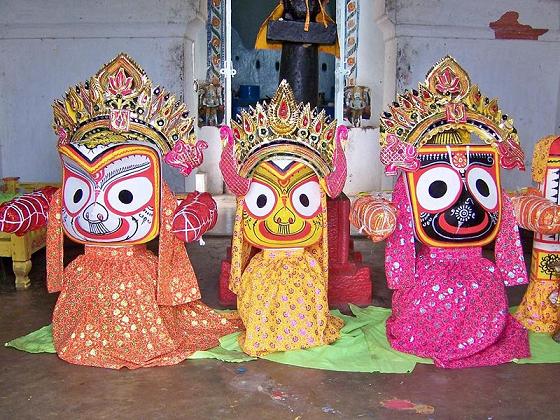
Till
today, Daita (Daitya) priests, descendants of the
original tribal worshippers, alone have the right to dress the
god, move him, and regularly renovate his wooden image.
Similarly at the
Lingaraj
Temple
in
Bhubaneswar
, tribal Badu priests alone are allowed to bathe and adorn the
deity.
If, as missionaries allege, classical Hindu tradition was
different from the tribal, why would tribal deities rise to
become the dominant figures in the Hindu pantheon?
It is precisely this kind of de-nationalisation that tribals are
doggedly contesting in the remote jungles of Orissa, where
Christian missionaries are trying to tell them that they (tribals)
are not Hindus!
***
Jagannath was first worshipped by the Sabara (Savara, Saora)
tribe, and ‘miraculously’ appeared in Puri much later. Till
today, Daita (Daitya) priests, descendants of the
original tribal worshippers, alone have the right to dress the
god, move him, and regularly renovate his wooden image.
Similarly at the
Lingaraj
Temple
in Bhubaneswar, tribal Badu priests alone are allowed to bathe and adorn the
deity.
Orissa is equally famous for the legend of Narasimha, the Vishnu
avatar who burst out of a pillar to kill the asur Hiranyakasipu.
The pillar is a uniconical image worshipped in tribal areas and
to this day Orissa abounds with Narasimha images on wooden
pillars symbolising Khambheshvari (Goddess of the
Pillar). Narasimha is believed to derive his power from the shakti
residing in the pillar. The pillar motif became so popular in
Hindu tradition that Shiv as Bhairav was said to have
emerged from a pillar.
The girija or hill-born aspect of Narasimha reinforces
the tribal roots of Hindu dharma. An aboriginal god in
the form of the head of a lion or tiger was worshipped in the
caves and mountains of Orissa and Andhra Pradesh. Orissa has
instances of Narasimha being worshipped as a saligram
stone.
Jagannath, Vishnu as ‘Lord of the World’, shows the
metamorphosis of a tribal god into a pre-eminent deity of the
classical Hindu pantheon. The god’s icon is even today carved
out of wood (not stone or metal), and the tribes whose rituals
and traditions were woven into his worship are still living as
tribal and semi-tribal communities in the region. This tribal
god took a fairly circuitous route to his present pinnacle, via
absorption of local shakti traditions and merger with the
growing popularity of the Narasimha and Purushottam forms of
Vishnu in the region in the medieval era.
Queen Vasata in the eighth century built the famous Lakshman
temple in brick at Sripur. The temple plaque opens with a
salutation to Purushottam, also titled Narasimha, suggesting a
trend in Vaishnav tradition to stress the ugra aspect of
Vishnu. This culminates in Puri where Jagannath, widely revered
as Purushottam until the end of the 13th century, had close
connections with Narasimha who became popular in Orissa in the
post-Gupta period.
But who exactly was this wooden god? After the death of
Anantavarman Chodagangadev, who reputedly commissioned the Puri
temple, his chief queen, Kasturikamodini, built a temple in his
homeland in Tekkali (present Andhra Pradesh), east of his first
capital Kalinganagar, in 1150 AD. The temple was dedicated to
the god Dadhivaman, and the inscription reveals that the image
installed was of the ‘Wooden God’, and not the famous Puri
Trinity of Jagannath-Balabhadra-Subhadra. Scholars say this
means that Chodagangadev was a devotee of this god, and as the
god’s name is preserved in Tekkali in this early period, it
seems likely that Dadhivaman (or the tribal form of this
Sanskritised name) was the original name of the ‘Wooden
God’.
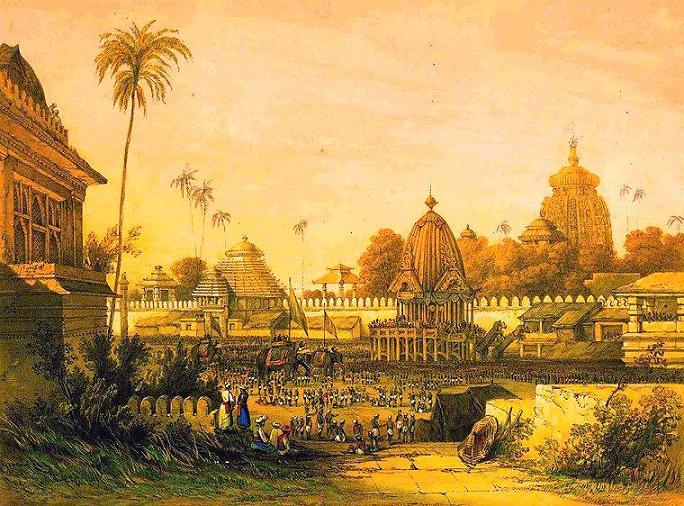
Ratha Yatra
in Puri
Jagannath, Vishnu as ‘Lord of the World’, shows the
metamorphosis of a tribal god into a pre-eminent deity of the
classical Hindu pantheon.
(Image
source: Painting
by James Fergusson (1808 - 1886).
***
As the original ‘Wooden God’ was a unitary figure, temples
for the single deity continued to be built even after a
Trinitarian image emerged at Puri. Even today there are 344
Dadhivaman temples in Orissa, which perpetuate the original
state of the god. The Kondh continue to practice a ritual
renewal of wooden posts.
There is also something striking about the figures comprising
the Jagannath triad. Subhadra’s image consists of only a trunk
and a head, but Jagannath and Balabhadra are larger, with a
trunk, over-dimensional head, and arm stumps. But while the
heads of Subhadra and Balabhadra are oval with almond-shaped
eyes, Jagannath’s head is curiously flat on top and is
dominated by enormous round eyes.
Scholars explain this in terms of Narasimha’s association with
wooden posts representing tribal deities. In the Andhra village
Jambulapadu (Anantapur), Narasimhasvami is worshipped as
a pillar to which a sheet shaped in the form of a lion’s head
is attached. This lion-head explains Jagannath’s large round
eyes, typical of Narasimha on account of his fury (krodh).
The head of the Jagannath image makes sense when perceived as a
lion’s head, where the emphasis is on the jaws, rather than as
a human head.
If, as missionaries allege, classical Hindu tradition was
different from the tribal, why would tribal deities rise to
become the dominant figures in the Hindu pantheon? As this has
been a regular pan-India phenomenon, it seems reasonable to
deduce that tribals were never culturally subordinate in their
interaction with non-tribal (caste Hindu) communities, but were
rather the fountainhead of the Hindu cultural evolution.
(source:
Tribal
Jagannath as a Hindu deity - By Sandhya Jain - dailypioneer.com
Edit
Tues/Oct 14 2008). Refer
to It
happens only in India - By S L Byrappa. Watch
video Hindus
Under Siege and
India
under attack and Congress
: A Merchent of Death for Hindus in
India
/
Delhi
Blast and Secularism
in
India
exposed
Top
of Page
Obama’s
Indian fans face burning cross
Police promise action as acts of racism
pop up after Obama win
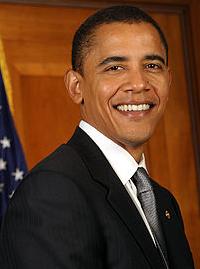 Arianna
Grewal kept waking up frightened after racists
burned a six-foot cross in the dead of night on the
little Indian girl’s front lawn in their home in northern
Warren County in New Jersey. “It
is shocking that we are living in the 21st century, and we have
to deal with this — in
America
,” said 8-year-old Arianna’s father Gary Grewal, a
management consultant who emigrated from
India
and now lives in
Warren
County
. Arianna
Grewal kept waking up frightened after racists
burned a six-foot cross in the dead of night on the
little Indian girl’s front lawn in their home in northern
Warren County in New Jersey. “It
is shocking that we are living in the 21st century, and we have
to deal with this — in
America
,” said 8-year-old Arianna’s father Gary Grewal, a
management consultant who emigrated from
India
and now lives in
Warren
County
.
Cross-burning
is a practice widely associated with the white supremacist Ku
Klux Klan as a reminder of faith. In the early 20th century, the
Klan burnt Christian crosses near the homes of those they wished
to intimidate, usually African-Americans and Jews.
Ariana
helped her mother Alina Grewal hand-paint a bed-sheet banner
reading “President Obama — Victory ‘08,” which had been
stolen from their yard. Racists returned with the banner and
torched it along with a burning cross on Thursday. “I
don’t want anybody to think they can intimidate us or dictate
to our family how to live and how to think,” said Alina Grewal.
The blatantly racist crime received significant attention on
Friday on
New York
television stations.
Before
Obama’s historic win, almost no African Americans expected a
black man to become president of the
United States
.
(source: Obama’s
Indian fans face burning cross - samachar.com).
For more refer to chapter on Glimpses
XX and Racism
at JP Morgan
***
Comrade
Vijay Prashad attacks NRI in Obama's Team
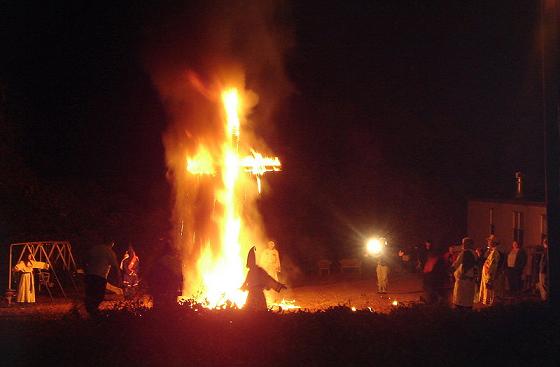
Cross-burning
is a practice widely associated with the white supremacist Ku
Klux Klan as a reminder of faith. In the early 20th century, the
Klan burnt Christian crosses near the homes of those they wished
to intimidate, usually African-Americans and Jews.
Racism
in America: Obama’s
Indian fans face burning cross in New Jersey.
***
The
attack by Vijay Prashad of
Trinity
College, CT in (The
Many Faces of Sonal Shah: Obama's Indian) is an
interesting attempt to demonize an NRI
and undermine her appointment by Obama. The motives are
interesting. The Old South Asianism's power base in US politics
has eroded, with the
American pragmatism seeing
India
as opportunity and solution provider, rather than as basket case
of human rights abuses. So the Old South Asianists feel left out
and abandoned in this new discourse on
India
, because their training on "caste,
cows, dowry" seems obsolete. As more westerners
experience
India
directly, there is less dependence on the old middlemen sitting
in academic cocoons, dishing out weird exotica to feed the white
folks' fear of dangerous savages and wild places. It is
interesting how very indirect links in her background get
highlighted by Prashad, and sensationalized to produce the classical
guilt-by-association profile. Indian so-called
"tribal" religions get described by him as
"Christian and animism" with Hinduism as the alien
oppression - good for Prashad's Christian support base. Obama is
trying to create a new liberalism, and it remains to be seen to
what extent he will be allowed to break loose from past shakles
of the ideologues. It will be Old
Liberalism vs. New Liberalism.
(source:
Vijay
Prashad attacks NRI in Obama's Team).
Refer
to Bobby
Jindal: An
Exorcist?
Top
of Page
Religious conflict: Tracing the roots
Biblical creeds and Indic/Vedic Traditions
If
all religions preach love, amity and peace, why are there so
much hatred, strife and violence in the name of religion? This
question has often baffled not just atheists and agnostics, but
also quite a few devout souls. The short answer is that every
religion wants unity of mankind under its own banner
- the operative word here is ‘banner’
and not ‘unity.’
What is worded as a call for
brotherhood of mankind is very often a call for the conquest of
the world by the faithful.
When Hindus come face to face with the behaviour pattern
patented by followers of Islam and Christianity, some of them
are often puzzled. “We respect their
religious traditions, sacred books, prophets, messiahs and holy
places as much as our own. We do not convert anyone. But they
hold our traditions in contempt, indulge in senseless violence,
destroy our sacred places and convert our people with force,
fraud and allurement. Why should it be so?” Most
people end up by concluding, mostly unconsciously, that people
of other faiths are as a rule wicked, untrustworthy and prone to
violence. This only deepens prejudices on either side. Since
this is a sensitive matter, it is necessary to clear the ground
by tracing the conflict to its roots. To put the matter
brusquely, there are two types of religious traditions. One may
be called the Biblical
or Abrahamic tradition and the other, Vedic
or Indic tradition.
Biblical
creeds
The Bible-derived creeds are founded on a central figure (Jehovah,
God, Allah or History) who commands the exclusive
and overriding allegiance of the believers. He is jealous, cruel
and brooks no rival. To equate or identify Him (e.g.
Allah) with gods worshipped by people of other faiths (e.g. Rama
or God of the Bible) is to insult him by denying his supremacy.
He (e.g. Allah) is the only true god. All other godheads are
usurpers, pretenders and impostors, and their worship, being a
denial of the only true God, deserves to be stopped. This
only true god is not accessible to ordinary human beings. He
deals with his people through an intermediary messenger, prophet
or Sole Saviour. His teachings are contained in the Book. The
Book is sole repository of Ultimate Truth.

The
Bible-derived creeds are founded on a central figure (Jehovah,
God, Allah or History) who commands the exclusive and overriding
allegiance of the believers.
He
is jealous, cruel and brooks no rival. To
equate or identify Him (e.g. Allah) with gods worshipped by
people of other faiths (e.g. Rama or God of the Bible) is to
insult him by denying his supremacy.
(image
source: toomanytribbles.blogspot.com).
***
Thus
in these creeds, there is only one Truth; there is only one way
to it; the God has given it to the chosen people, and them
alone; it is contained in ‘our’ Book and in ‘our’ Book
alone. Since the Book is authored by God Himself, every word in
it is true, excellent, immutable, and binding. The Book, al-kitab,
is beyond the comprehension of most of even the believers, and
certainly the non-believers. They must therefore heed the
Church, the Priest. Faith in the Book
is the overriding duty, as is the duty of making
others ‘see the light.’ Since this is the absolute Truth,
since it alone can lead to Heaven or permanent bliss, mankind
must be awakened to it for its own good, at any cost, in
whatever way. No sacrifice is too great for holding on to it; no
means impermissible for converting others to it.
The exclusivist claims about the only
true god, the prophet, the Saviour etc. are to be accepted on
faith, on authority. A believer is not permitted to
ask for proof or confirmation of the claims or contents of the
book. Asking for proof which cannot be supplied is to show
one’s lack of faith, a great disqualification.
Since their entire
edifice rests on unquestioning acceptance of the dogma
or belief system, the Abrahamic religions - Judaism,
Christianity, Islam as well as
their secular variants like Nazism
and Marxism - have always despised
doubt, suspected reason and viewed science as a rival if not
enemy. For them, testimony of the book is stronger than the
proof of logic or testimony of experience.
The very idea of an absolute monopoly
of ultimate truth contains within itself seeds of intolerance,
aggression, strife and authoritarianism. It is a charter of
killing, destruction and subversion with a clean conscience.
Within the Church or the Party, there will always be more than
one claimant to this monopoly of truth. Outside, there are bound
to be others who refuse to acknowledge the authority of the
Church or the Party.
Vedic
tradition
The Vedic tradition, on the other hand, is founded on very
different premises. The starting point of this tradition is human
consciousness, which can be explored,
which can be purified progressively, and which can be
transcended till it attains the loftiest
heights of knowledge and creativity. At this summit,
the Self becomes one with the Universe and sees all things,
animate and inanimate, in Himself and Himself in everything. In
this vast vision, sanctity attaches not only to human life, but
to the whole of creation. This is the sumum
bonum of spiritual humanism, which has always
been
India
’s message to mankind.
The
Indic tradition teaches us that Man is the child of Light, that
he grows from within, responding to what he secretly is. The
quest for spiritual truths is innately ingrained in Man, just
like hunger or thirst. These truths are not contained in or
confined to a Book. On the contrary, they lie secretly in every
human heart and have always been accessible to those who seek
them. These truths never need any Jihad
or Crusade for their spread and propagation. On the
contrary, these truths are self-propagating due to their own
inner strength. All they need is the dedication they inspire
spontaneously in all those who invoke them.
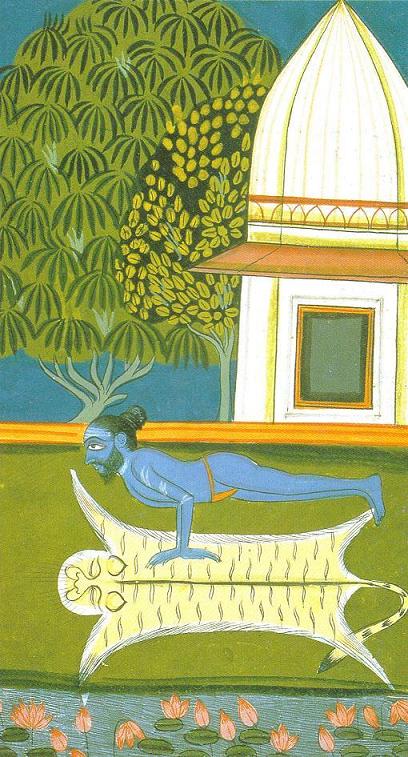
Yoga
The
Vedic tradition advises people to be busy with themselves, that
is, their own moral and spiritual improvement. No single
individual, book or sect has a monopoly of a vision of or path
to the Ultimate Reality. Several sages all over the world, in
all ages, have attained it. They have put down approximate
descriptions of that reality as well as hints of how to attain
it in some books. These books are like travel guides. What
matters is not the adherence to the travel guide, but to arrive
at the Truth, to perceive and be one with the Reality.
These
truths never need any Jihad or Crusade for their spread and
propagation.
Watch
Introduction
to Hinduism video - By Hinduism Today
***
The
Vedic tradition advises people to be busy with themselves, that
is, their own moral and spiritual improvement. Several
disciplines have been evolved for this purpose: tapas
(austerity), yoga
(meditation), jnana
(reflection), bhakti
(devotion), etc. A seeker can take to any path or discipline
that suits his adhara
(stage of moral-spiritual preparation). There is no uniform
prescription for everybody, no coercion or allurement into a
belief system, and no claim of merit for aggression against
others. No single individual, book or sect has a monopoly of a
vision of or path to the Ultimate Reality. Several sages all
over the world, in all ages, have attained it. They have put
down approximate descriptions of that reality as well as hints
of how to attain it in some books. These
books are like travel guides. What matters is not the adherence
to the travel guide, but to arrive at the Truth, to perceive and
be one with the Reality. Buddha cautioned his
followers that they should not mistake his finger (his
teachings) pointing at the moon for the moon itself.
The
Message and the Means
The essential points are three: First,
it is the individual who has to strive for himself; second,
different ways will suit different persons; and third, the
striving, the search is directed inwards. The
Biblical tradition, on the other hand, teaches people to be busy
with others. One is supposed to have become a
superior human being as soon as one confesses the ‘only true
faith.’ Thenceforward one stands qualified to ‘save’
others. The only training one needs thereafter is how to man a
mission or military expedition, how to convert others, and how
to kill or ruin or blacken those who refuse to come around. As
the Message is the ‘Truth,
the whole Truth and nothing but the Truth,’ as
there is no truth beside it, those who do not accept the Message
are cussed. Worse, they are thwarting the Will of God/Allah or
the march of History (Marxism-Leninism). The believers,
therefore, have a right as well as a duty to make them accept
the Message, and if they refuse, to vanquish them altogether.
Abrahamic
religions therefore, are closer to ideologies of power than
pathways to spiritual truth. They use the language of theology,
but their objectives are political.
They aim at conquest of the world by decimating other
traditions, capturing territories, and converting people.
The Indic tradition has given to the world many schools of Sanatana
Dharma, which have practiced peace among their own
followers as well as towards the followers of other paths. On
the other hand, the Biblical tradition
has spawned intolerant, aggressive and violent cults such as
Christianity, Islam, Communism and Nazism, which have always
produced brutal conflicts with the rest of the mankind, with one
another, and even within their own ranks.
The syrupy slogan of sarva-dharma-samabhava
glosses over the basic differences between these two
traditions. This has caused an enormous amount of confusion.
(source:
Religious conflict: Tracing the roots
- By Virendra
Parekh - vijayvaani.com).
Top
of Page
The
disaster of ‘me, me’
The rise
of unfettered individualism
and erosion of family
As
India
attempts to copy the West, it clearly misses the serious
economic issues that confront West, thanks to its obsession with
unfettered individual and human rights. Many in the West now
seem to realise that continuously undermining the moral and
social order has led to the present economic crisis. The
West did not slide overnight. Beginning from the late
19th century, the Anglo-American West gradually moved away from
a relation- based lifestyle to a contract-based lifestyle.
While culture and tradition govern relation, law and rights
inhere in contracts.
And this move from relation to contracts became almost complete
in the second half of the 20th century. With law overriding
relations, even parents could not curb the rights of their wards
once they legally matured.
Unbridled
Human Rights And Unrestrained Personal Freedom
It
is the other way. If they acted against their wards, the law
would punish the parents for child abuse. So contracts replaced
relations, and rule of law substituted for moral order. To what
effect? The rise of unfettered individualism and undefined feminism have led to
the erosion of families and a rise in divorces, singleparent
families, unwed mothers, lesbians, gays and almost the collapse
of traditional families. Over
50 per cent of the first marriages, 67 per cent of the second
marriages, and 74 per cent of the third marriages end in divorce
in the
US
. Over 40 per cent of births are outside wedlock. Almost half of
the families are headed by a single parent.
The number is more in most of
Europe
. It was seen as cultural erosion first. But slowly it has
turned into an economic disaster.
The contract-based model undermined families and led to low or
no household savings, high personal debt, credit card based
living, outsourcing of household functions including kitchen
work. The erosion in relation-based lifestyle soon imposed a
huge social security burden on the state because the family
mechanism that supported the unemployed, infirm, aged and the
rest and the state had to step in to aid them. Thus the family
functions were taken over by the state. The families were
nationalised. The overburdened state consequently had to shed
its traditional functions, like public works, and privatise
itself.
The socialisation of family functions obviated the need to save
for a rainy day and led to even lower savings. With the growth
of individualism to the exclusion of kinship and relations,
corporates and the state alike promoted unrestrained
consumerism. Result, some 110 millions
US
households have some 1.2 billion credit cards, almost a dozen
cards per household.
Are
the West’s current financial problems due to excessive
emphasis on them?
As the people saved less and spent more, they got into trillions
of dollars of private debt; and as the government spent more, it
also ran into tens of trillions of dollars of public debt. The
result is that the government is bankrupt and so households are
insolvent. More, the
US
, the largest creditor nation of the world three decades ago, is
today the number one debtor of the world, with $12.5
trillion of debt. A quick survey shows this: all
individual- centric economies are deep in debt; but nations more
family-oriented and less individual-
centric, like Japan, China, India, and generally Asian nations,
account for over three-fourths of global savings; the
individualist West lives off the savings of family-centric Asia.
Today the West says that, in the present crisis only
Asia
, which has huge savings thanks to family orientation, can save
the West, which has almost lost its
traditional family lifestyle.
So the idea of unbridled human rights and unrestrained personal
freedom that have led to social and cultural degeneration are
increasingly seen as the cause of the present economic crisis.
Weeks ago, Thomas L Friedman, a leading economic journalist,
wrote in the New York Times that he had told those eating in a
restaurant that they could no more afford to eat out and they
had better cook and eat at home. But how will they cook and eat
at home unless families are re-created? If they do, how would
the
US
compensate for loss of employment if restaurants, which exist
because households have closed their kitchens, shut down? There
seems to be no solution within economic laws to the present
crisis of the West. Amoral economics once yielded higher
returns. It now yields negative returns.
Here Renukas and Arundhatis advocate unbridled individualism
that has undermined families and morals and dynamited the
economies of the West. Renuka Chaudhary
questions the idea public morals. Arundhati
Roy advocates amoral living. Both seem unaware that
an economy built at the cost of family and social morals, too
collapses on the ruins of the morals it has brought down. QED:
morality supports economics; lack of it ruins economies
(source: The
disaster of ‘me, me’ - By S Gurumurthy New
Indian Express, 26 Feb 2009).
Top
of Page
Gitmo
(Guantanamo Bay) for guilty liberals
Poverty
Porn
***
Slumdog
movie is about
defaming Hindus
In
keeping with American politics of the times, Slumdog
Millionaire has been nominated for as many as 10
Oscars and our deracinated media,
which constantly looks for inspirational ‘good news’ stories
that invariably revolve around Western appreciation of
‘truthful’ portrayal of the Indian ‘reality’, has gone
into a tizzy.
Presenting
a distorted and perverted shape of
India
How
to sell your soul for a few 'Pee
on Pagan' awards from the West
***
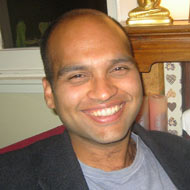
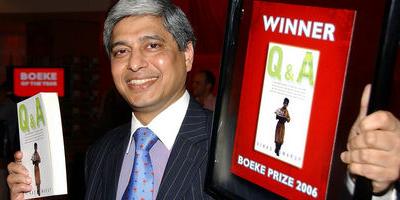
Aravind Adiga
and Vikas Swarup
Aravind
Adiga crafted his novel in a manner that it could not but
impress the Man Booker judges who see India as a seething mass
of unwashed hordes which worship pagan gods, are trapped in
caste-based prejudices, indulge in abominable practices like
untouchability, and are not worthy of being considered as an
emerging power, never mind economic growth and knowledge
excellence.
Refer to The
Waffle of the Toffs: A Socio Cultural Critique of Indian Writing
in English - By M Prabha.
Today, the
reality is that anti-Hinduism has become the world's new
anti-Semitism and will have similar disastrous consequences.
***
The
larger point is not really about going gaga over an American
award or a British prize, but how they are seen as
India
being admitted into the charmed circle whose membership is
strictly controlled and is by invitation only. Aravind
Adiga crafted his novel in a manner that it could not
but impress the Man Booker judges
who see India as a seething mass of
unwashed hordes which worship pagan gods, are trapped in
caste-based prejudices, indulge in abominable practices like
untouchability, and are not worthy of being considered as an
emerging power, never mind economic growth and knowledge
excellence. Similarly,
Danny Boyle has made a film that portrays every possible bias
against
India
and structured it within the matrix of Western lib-left
perceptions of the Indian ‘reality’ which have little or
nothing in common with the real
India
in which we live.


Roland Joffe
and Dominique Lapierre, author of City of Joy
The
last time depravity was portrayed as the Indian ‘reality’
was when Roland Joffé did a cinematic version of Dominique
Lapierre’s City of Joy. In that film, the Missionaries
of Charity were shown as the saviours of an India
trapped in filth, squalor, poverty and Hindu superstition. Some
two decades later, Boyle has rediscovered Joffé’s
India
and made appropriate changes to fit his film into the
Hindu-bad-Muslim-good mould so that it has a resonance in
today’s America. Islamic
terrorism has almost wiped out the Hindu population in Kashmir.
Hollywood
should now turn the camera
towards the joys of Muslims experiencing democracy (sic) in
Afghanistan,
Iraq, and other parts of the Muslim world.
***
Therefore,
it is not surprising that Boyle’s film is about a slum where
extreme social exclusion, political suppression and economic
deprivation define the lives of its inhabitants. He has made
every effort to shock and awe the film’s audience by taking
recourse to graphic and gory portrayal of bloodthirsty Hindu
mobs on the rampage — the idiom that defines India as it is
imagined by the lib-left Western mind — laying to waste Muslim
lives (a Hindu is shown slitting a Muslim woman’s throat in an
almost frame-by-frame remake of the videotape that was released
by the killers of Daniel Pearl) and property. There’s more
that makes you want to throw up the last meal you had: Hindu
policemen torturing Muslims by giving them ‘electric shock
therapy’, street children being physically disfigured and then
forced to beg, and such other scenes of a medieval society where
rule of law does not exist and every Hindu is a rapacious
monster eager to make a feast of helpless Muslims.
The last time depravity was portrayed as the Indian
‘reality’ was when Roland Joffé did
a cinematic version of Dominique
Lapierre’s City of Joy. In that film, the Missionaries
of Charity were shown as the
saviours of an
India
trapped in filth, squalor, poverty and Hindu superstition. Some
two decades later, Boyle has rediscovered Joffé’s
India
and made appropriate changes to fit his film into the
Hindu-bad-Muslim-good mould so that it has a resonance in
today’s
America
.
(source:
Slumdog
is about defaming Hindus - By Kanchan Gupta -
dailypioneer.com). Refer
to India
:
Poverty, and clichés slumdog millionaire – By Francois
Gautier. Refer
to They've
started calling Indians 'slumdogs' and Islamic
terror and Massacre
in Mumbai. Refer
to Bengal
Genocide and Muglistan and The
Missionary Position: The Ideology of Mother Teresa and
Survivors
Network of those Abused by Christian Priests.
Watch
And
the world remained silent – By Ashok Pandit and Islamic
terror and Massacre
in Mumbai
Christian
Evangelist Producer Using Islam to Batter Hinduism
 Danny Boyle, maker of the film Slumdog Millionaire,
is evidently a committed Christian,
the kind who is usually keen to advance the interests of his
faith. The agenda of his Catholic Church is to convert Hindu
India into a Christian enclave like the
Republic
of
Korea
, which is apparently what Slumdog Millionaire wishes
to further by portraying the grimly violent nature of Hindus.
Danny Boyle, maker of the film Slumdog Millionaire,
is evidently a committed Christian,
the kind who is usually keen to advance the interests of his
faith. The agenda of his Catholic Church is to convert Hindu
India into a Christian enclave like the
Republic
of
Korea
, which is apparently what Slumdog Millionaire wishes
to further by portraying the grimly violent nature of Hindus.
And of course the West and their lowly scum politicians (from Lord
Morley and Lord Wavell ro whippersnapper Miliband)
have long used Islam as the battering ram with which to
undermine Hindus.
This explains Boyle's espousal of the Teesta
Setalvad version of the fate of Muslims in
India
in the film, also the excuse of Pakistanis terrorists for
killing Hindus. I am glad Vikas Swarup
made more than the standard thirty pieces of silver for selling
India
down the river since I remember him pretending to be
a militant patriot when he was a diplomat in
London
. But, hey, the money, was too good to turn down and he got to
become friends with the pucca, gora
sahib and Hindu-baiter, extraordinaire William Dalrymple!
And of course the fierce evangelical NDTV and the execrable
Barkha were all over Boyle earlier this evening.
(source:
Christian
Evangelist Producer Using Islam to Batter Hinduism
). Refer
to Slumdog
Millionaire director Danny Boyle almost became a Catholic priest
and Survivors
Network of those Abused by Christian Priests
Gutter
Inspectors
***
Selective
manipulation of Third World squalor
"When the British
ruled
India
, they called Indians 'dogs'. Why do we want to call these poor
children 'dogs' 60 years after we got independence?"
- Nicholas Almeida
activist.
Danny
Boyle's film is sweeping up awards, but it's wrong to
revel in the misery of India's children.
A few hours later I was wincing in my seat. The film opens
with a scene of horrible violence: a man hanging from the
ceiling of a police station, being tortured to unconsciousness,
a trickle of blood running from his mouth. It moves swiftly into
scenes of utter misery and depravity, in which small starving
children are beaten, mutilated and perverted. Mothers
die horribly in front of their sons, small girls are turned into
prostitutes, small boys into beggars. I hope it won't spoil the
feel-good surprise if I tell you that one particularly sadistic
scene shows a young boy having his eyes burnt out with acid to
maximise the profits of street begging.
White
Man's Burden and Manifest Destiny
The
movie is nothing but endorsement of an erstwhile imperial mindset of the West

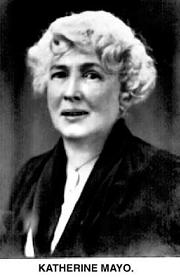
Gutter
Inspectors: Danny
Boyle and Katherine Mayo,
author of Mother India. The
book was felt as an outrage, there was an around public
condemnation of it in India, and perhaps elsewhere too, and Mahatma
Gandhi called it “Drain
Inspector’s Report.”
Slumdog
absolves the white man’s burden
with game-show
flash and shrillness.
In
one incident, our child-hero is beaten by the Indian (naturally)
driver of a White American tourist. He weeps – “this is real
India
,” and immediately his saviour peels off a US $ 10 bill, with
the mantra: “this is real America, son.” (In real life, as the police in any Indian state will
tell, paedophiles
are made out of this Good Samaritan stuff; only
Hollywood
doesn’t know it).
To
make sure his point about Hindu devilry is not missed, director
Boyle has a shot of a child dressed as
Lord Rama, one of Hinduism’s
most cherished gods. Imagine the outcry that would
have resulted if Boyle had reversed the above: i.e., had a shot
of a child dressed as prophet Mohammed or Jesus as
Muslims/Christians hurried off to persecute members of another
faith! But since Hindus seem oblivious to any and every insult,
Boyle has not only gotten away with his blasphemies, but seems
well on his way to awards and accolades.
Therefore
— as was in the days before the age of electronic media, when
Katherine Mayo pioneered this whole process by her “Mother
India,” followed by a truckload of works to the same ultimate
aim and purpose was to defame India and Hinduism. The
essential ‘masalas,’ the great Indian feast of
cow-caste-curry is served before the
champagne-caviar-and-red-carpet circuit at
Cannes
film festival. For
an
America
that is experiencing what is possibly the worst recession in its
history since the Great Depression, Slumdog Millionaire offers
some relief from its own lethal cocktail of unemployment,
unaffordable food, homelessness and increasing debt.
Would
Danny Boyle make a movie on this - Refer
to Amen
- an autobiography of a nun.
***
As the film revels in the violence, degradation and
horror, it invites you, the Westerner, to enjoy it, too. Like
the bestselling novel by the Americanised Afghan Khaled Hosseini,
A Thousand Splendid Suns, Slumdog Millionaire is not a million
miles away from a form of pornographic voyeurism. A Thousand
Splendid Suns is obsessed with rape and violence against women,
the reader asked to pore over every last horrible detail.
Slumdog Millionaire is poverty porn.
The BBFC (British
Board of Film Classification) has placed
this work in the COMEDY genre.” Comedy?
So maybe that's it: I just didn't get the joke.
An editorial in dnaindia.com,
a Mumbai-based online newspaper, read:
“The miserable existence of the
average slum dweller, which we in India know so well, is novel
to the Western viewer... The awarding of the Booker
Prize to The
White Tiger shows that the seamier
side of the Indian dream continues to have a resonance in
Western sensibilities. The White Tiger's victory left many
Indians underwhelmed; who is to say that when Indian audiences
finally see Slumdog they will not be equally put off?”
As a review on the same website by Vrinda
Nabar, an Indian professor at a US university, put
it: “Slumdog's eventual victory comes at a price. When
the selective manipulation of Third World squalor can make for a
feel-good movie in a dismal year, the global village has a long
way to go.”
Quite. The Mumbai Mirror dubbed it “Slum Chic”, and
notes that the term “slumdog” is not widely recognised in
India: “It appears to be a British invention to describe a
poor Dharavi kid in a derogatory way.” Boyle describes the film as “very subversive”. He
has forestalled potential criticism about plundering another
country's horror as entertainment by employing many Indian
actors, including Bollywood stars and an Indian composer. Much
of the dialogue is in Hindi.
When we are suckered into enjoying
scenes of absolute horror among children in slums on the other
side of the world, even dubbing them comedy, we ought to
question where our moral compass is pointing. Boyle's most
subversive achievement may lie not in revealing the dark
underbelly of India - but in revealing ours.
(source:
Shocked
by Slumdog's poverty porn - By
Alice Miles
- timesonline.co.uk). Refer
to Survivors
Network of those Abused by Christian Priests.
Refer
to British
paedophiles make mockery of 'crackdown' -
British paedophiles are defying a Government crackdown on sex
tourism by travelling to Cambodia and sexually abusing children.
Refer
to The
Guantánamo Bay Detention Camp
and Abu
Ghraib torture and prisoner abuse and Islamic
terror and Massacre
in Mumbai.
Refer
to Slumdog
Poverty in
America - Diane Sawyer - abcnews.com
The
Mis-Education of a Millionaire
Don’t expect the real India: Danny Boyle gives guilty
liberals absolution through game-show gimmickry.
Danny
Boyle's Slumdog
Milllionaire is a stylized, excessively edited
rags-to-riches goof about a little boy from the slums of Mumbai
(formerly Bombay) who grows up to win 20 million rupees on the
TV game show Who Wants to Be a Millionaire? Uniquely
British in its TV-influenced ostentation, Slumdog is directed
with attention-deficit compulsiveness like so much product from
England’s advertising mills
Also
uniquely British is the film’s blithe condescension about the
dehumanizing conditions of the former colony. Slumdog
absolves the white man’s burden with game-show
flash and shrillness.
Boyle’s response to poverty and degradation is to go pop:
Dogme videographer Anthony Dod Mantle uses a festive range of
colors that gives false vitality to the soul-deadening action.
Teeming crowds, hustling con artists, smiley/treacherous
child-abusers, ethnic rioters, outhouse jokes, chase scenes and
gunplay are used for excitation and shock. There hasn’t been a
social drama this decadently over-hyped since City of God. Boyle
plays the same game of pandering to liberal sensibilities while
entertaining safe, middle-class distance.
Over-stimulation crushes feeling; Boyle only evokes
sentimentality. His cast of child actors is overly cute—for
easy sympathy and for automatic horror when they’re shown
being mutilated by adults who run a beggar/prostitution
underground. This parallels the game-show interval where Jamal
is tortured—beaten, waterboarded, hung-up, electrocuted—by
the show’s host. A little Gitmo for
guilty liberals. Boyle’s
patronizing pattern is revealed when survival-minded
Jamal swindles white tourists. “You wanted to see a bit of the
real India? You’re in it!” he says. And the bleeding hearts
respond, “Well here’s a bit of the real America” giving
Jamal a hundred-dollar bill—his first taste of unexamined
extortion. That
ugly exchange typifies this anti-Darjeeling Limited. Boyle
trades exploitation for schmaltz. Slumdog proves British cinema has a knack for producing
TV-slick frauds: Boyle, Michael Winterbottom, Adrian Lyne, Tony
and Ridley Scott. Their fancy misrepresentations disgrace
Britain’s narrative legacy.
Boyle is a poverty pimp with an
Avid.
(source:
The
Mis-Education of a Millionaire - By Armond White -
nypress.com).
Sign
Petition - Protest
movie 'Slumdog Millionaire'
26
November 2008 and Slumdog
Millionaire are the two most recent events
that have put Mumbai on the map of world consciousness. There
are striking similarities between both. Terrorist Ajmal
Kasab grabbed the limelight when captured on CCTV,
walking through parked trains at Chhatrapati Shivaji Railway
Terminal, shooting innocents. Slumdog
hero Jamal Malik, by coincidence, is seen in the last shot at
Chhatrapati Shivaji Terminal, passing through one parked train
after another to reach girlfriend Latika. Were
Ajmal Kasab to see Slumdog,
he would feel vindicated about his Mumbai killing spree. All
propaganda elements used to lure Muslim youth towards terrorism
are strangely present in the film. A riot by Hindus and
exploitation by the rich and famous create hurdles in the way of
Slumdog’s young hero.
Both
events have conned the Indian people and left them to their
fate. After 26 November, a false assumption that the world
supports India
in the war on terror has reassured the Indian people. After Slumdog’s
Golden Globe, Indians
similarly feel that world have recognized Indian creativity. Few
understand the poor light in which Indian culture and poverty
have been projected, and India
denuded of self-respect.
The
backdrop is Dharavi,
Asia
’ largest slum, its street urchins, crime, abused and
exploited children and child beggars, not to mention the
ubiquitous underworld, its signature tune.
But we also know that these slums are home to millions of
dignified people fighting poverty, working hard and breaking
through into the outside world. The slums are places of
enterprise, small scale industry and innovative business that
keep millions of families going. They have wonderful volunteers
and social workers who may not be as richly funded as Mother
Teresa, but provide genuine health care, education and
opportunities. We are winning the war against misery and poverty
because we keep hope alive.
Slumdog’s
focus on the slums and the exploitation is unduly harsh and
hopeless, missing the dignity of the poor and the checks and
balances of Indian culture. The script seems to cater to a
particular international mindset; hence the sinister plot to
murder Mumbai a la 26 November. Danny Boyle shows us a very
hellish Mumbai and does no justice to the unconquerable spirit
of Mumbai. Indians are actually used to appreciating people
rising from the ranks of the weak or under- privileged. Slumdog
denied Indian society this credit, and in fact paints Indians as
intolerant and anti-poor. An
alien attitude, compatible to a Western audience, is projected
upon India, to win accolades for a British director.
Escaping
the gangster, our hero jumps into a running train and manages to
reach the Taj Mahal. This is equated with arrival in heaven. In
backdrop of the Taj Mahal, children are shown earning huge sums
of money – actually the big dollar tips that generous White
tourists mythically shower upon
India
’s poor. In one incident, our child-hero is beaten by the
Indian (naturally) driver of a White American tourist. He weeps
– “this is real
India
,” and immediately his saviour peels off a US $ 10
bill, with the mantra: “this
is real
America
, son.” (In real life, as the police in any Indian
state will tell, paedophiles are
made out of this Good Samaritan stuff; only
Hollywood
doesn’t know it).
Nowhere
does the film showcase the tradition and modernity of a unique
country where the two do not clash, as in many other societies. It prefers a
slanted stress on poverty and exploitation, robbing in the
process the dignity and commitment of poor Indians who are
heroes in the real sense of the word.
Slumdog has a sinister agenda; it is tailored
to the prejudices of a western audience, to
reinforce bias about
India
and particularly the so-called plight of its Muslim citizens.
Hollywood
should now turn the
camera towards the joys of Muslims experiencing democracy (sic)
in
Afghanistan
,
Iraq
, and other parts of the Muslim
world.
(source:
Slumdog
Millionaire: Another Husain? -
By Himanshu
Jain - vijayvaani.com).
Refer to
Bengal
Genocide and Muglistan
Big B slams 'Slumdog Millionaire' on blog
 Bollywood megastar Amitabh Bachchan has slammed
Danny
Boyle's Golden Globe award winning underdog drama
"Slumdog Millionaire" for showing India in poor light.
Bollywood megastar Amitabh Bachchan has slammed
Danny
Boyle's Golden Globe award winning underdog drama
"Slumdog Millionaire" for showing India in poor light.
"If
'Slumdog Millionaire' projects India as Third World dirty
underbelly developing nation and causes pain and disgust among
nationalists and patriots, let it be known that a murky
underbelly exists and thrives even in the most developed
nations," Amitabh said in a posting on his blog
on Wednesday from Paris, France.
"It's just that the 'Slumdog Millioanire' idea authored by
an Indian and conceived and cinematically put together by a
westerner, gets creative global recognition," he added.
"The commercial escapist world of Indian cinema had
vociferously battled for years, on the attention paid and the
adulation given to the legendary Satyajit
Ray... and not a word of appreciation for the
entertaining mass-oriented box office blockbusters that were
being churned out from Mumbai. "Ray
portrayed reality. While, the other — escapism, fantasy and
incredulous posturing. Unimpressive for Cannes and Berlin and
Venice (film festivals)," he explained. He further wrote:
"But look how rapidly all that is changing. Dedicated TV
channels running Hindi cinema on prime timings. Premieres at
Leicester Square (referring to 'Chandni Chowk To China'), the
home of all Hollywood royalty, thronged by hundreds on the
street in cold biting weather."
(source: Big
B slams 'Slumdog Millionaire' on blog).
Where
Would Danny Boyle Be Without The Slums Of Mumbai!
It seems that the British are still
longing for their lost colonial glory, the prestige, the wealth,
the power, and above all, the right to claim ownership for more
than one-fifth of the world’s population. That is what they
miss the most when a Brit says, “we
lost
India
.”
India was and is a hierarchical
society, and so is the old and new Britain, with its
aristocracy, and class-conscious citizens.
India
was more than a colony; it was the “crown
Jewel” of the
British Empire
.
India
was the symbol of British colonial hegemony over millions of
natives across the globe.
India
’s
cheap labor was the backbone of the British colonial
expansionist project in the 18th and 19th centuries. It was
cheap Indian labor, along with British capital, which built the
overseas wealth of
Britain
.
As the
African slaves were the source of labor in the British colonies
in
America
and the Caribbean, Indian indentured laborers were recruited for
other colonies in Asia and
Africa
, where British Mercantile capitalists had large plantation and
mining industries. After 60 years of independence from
Britain
, entrepreneurial Englishmen still keep coming to
India
looking for their fortunes!
As
far as the English gentlemen are concerned, the fortune is
hidden in the miseries of the millions of impoverished Indians,
as it was in the days of the British Raj. The success of the
British filmmaker Danny Boyle, whose latest film “Slumdog
Millionaire” is a case in point.
This
may also set an example for future filmmakers who want to
produce movies about poverty, natural and man-made
disasters around the world, for the consumption of curious
western eyes.
(source:
Where
Would Danny Boyle Be Without The Slums Of Mumbai! - By
By
S. Hewage - indianrealist.wordpress.com).
The
Legendary wealth of India
To Shake the Pagoda Tree
Arnold
Hermann Ludwig
Heeran (1760-1842)
German historian and Egyptologist has observed:
“India
has been celebrated even in the earliest times for her
riches.”
The
wealth, splendor and prosperity of India had made a strong
impression on the mind of Alexander the Great, and that when he
left Persia for India, he told his army that they were starting
for that “Golden India” where there was endless wealth, and
that what they had seen in Persia was as nothing compared to the
riches of India. Chamber’s
Encyclopedia says” “India has been celebrated
during many ages for its wealth.” The writer of the article
“Hindustan” in the Encyclopedia
Britannica remarks that India “was
naturally reputed to be the seat of immense riches.”
Milton
voiced the popular belief when he sang of the wealth of India:
“High
on a throne of royal state which far
Outshone the wealth of Ormuz and of Ind (India)
Or where the gorgeous East with richest hand
Showers on her kings barbaric, pearl and gold.”
 According
to Economist Angus
Maddison (1926 - ) in The
World Economy: A Millennial Perspective, the region
that today comprises the Indian
subcontinent held the largest share of the world's gross
domestic product until the beginning of the 16th century, when
it was rivaled by China, and then again throughout most of the
18th century.
At the end of the 16th century,
India's great wealth sustained a population of more than one
hundred million people. According
to Economist Angus
Maddison (1926 - ) in The
World Economy: A Millennial Perspective, the region
that today comprises the Indian
subcontinent held the largest share of the world's gross
domestic product until the beginning of the 16th century, when
it was rivaled by China, and then again throughout most of the
18th century.
At the end of the 16th century,
India's great wealth sustained a population of more than one
hundred million people.
In
"India, the Silicon Jewel of the East" (Digital
Journal, May 13, 2004), Paul William
Roberts states, "There was an abundance of
arable land, and the state of Indian agriculture compared
favorably with any of the Western European countries. Right down
to the subsistence-oriented peasant, everyone saw a good return
on land and labor. There was a large and vigorous skilled
workforce turning out not just cotton but luxury items for the
barons, courts and ruling classes. Consequently,
the economy produced a fabulous financial surplus."
Refer
to chapter on Hindu
Culture and Glimpses
XII and European
Imperialism
Rev.
Jabez T. Sunderland
(1842-1936) American born, former President of the
India Information Bureau of America and Editor of Young India
(New York). Author of India,
America and World Brotherhood, and Causes
of Famine in India. He has written glowingly about
India's culture:
 "Another
cause of
India
's impoverishment is the destruction of her manufactures, as the
result of British rule. When the British first appeared on the
scene,
India
was one of the richest countries of the world; indeed
it was her great riches that attracted
the British to her shores. " "Another
cause of
India
's impoverishment is the destruction of her manufactures, as the
result of British rule. When the British first appeared on the
scene,
India
was one of the richest countries of the world; indeed
it was her great riches that attracted
the British to her shores. "
"The
source of her wealth was largely her splendid manufactures. Her
cotton goods, silk goods, shawls, muslins of Dacca, brocades of
Ahmedabad, rugs, pottery of Scind, jewelry, metal work, lapidary
work, were famed not only all over Asia but in all the leading
markets of Northern Africa and of Europe. What has become of
those manufactures? For the most part they are gone, destroyed.
Hundreds of villages and towns of
India
in which they were carried on are now largely or wholly
depopulated, and millions of the people who were supported by
them have been scattered and driven back on the land, to share
the already too scanty living of the poor ryot. What is the
explanation?
Great Britain
wanted
India
's markets. She could not find entrance for British manufactures
so long as
India
was supplied with manufactures of her own. So those of
India
must be sacrificed.
England
had all power in her hands, and so she proceeded to pass tariff
and excise laws that ruined the manufactures of
India
and secured the market for her own goods.
India
would have protected herself if she had been able, by enacting
tariff laws favorable to Indian interests, but she had no power,
she was at the mercy of her conqueror."
(source: The
New Nationalist Movement in
India - By Jabez T Sutherland
- theatlantic.com). Refer to European
Imperialism
***
“Great
Insights” of P. Chidambaram
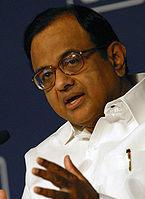 P. Chidambaram (1945 - ) has liked “Slumdog
Millionaire” and now is asking all Indians to feel
“inspired” by it. He has seen nothing wrong with the movie, its
racial prejudice and its stereotyping of
India
as a land of unspeakable poverty, horrors, oppression, squalor and
crime. The movie shows this as the “reality” of
India
. And to rub salt into our wounds, Chidambaram is asking us to
feel “inspired” with this image of our country that has been
projected to the whole world!
P. Chidambaram (1945 - ) has liked “Slumdog
Millionaire” and now is asking all Indians to feel
“inspired” by it. He has seen nothing wrong with the movie, its
racial prejudice and its stereotyping of
India
as a land of unspeakable poverty, horrors, oppression, squalor and
crime. The movie shows this as the “reality” of
India
. And to rub salt into our wounds, Chidambaram is asking us to
feel “inspired” with this image of our country that has been
projected to the whole world!
But then,
Chidambaram is the same “leader” who had said that India
was never a rich country !
"India
was a
country where rivers of milk and honey used to flow, is a great
historical myth, believes Union Finance Minister P Chidambaram. “The
poverty has always been there in
India
and whoever propounded the myth about
India
being a rich country is wrong,” he said. The old teaching
that
India
was a country of milk and honey about five centuries ago was
factually incorrect, Chidamabaram said. “Poverty was there and
is still there in
India
, though prosperous pockets existed here and there,” he said.
The
finance minister said the books that propounded the glorious
past of
India
were liable to be burnt.
Perhaps
he needs to be reminded that Babar,
who called India Sone ki Chidiya.
(source:
“Great
Insights” of P. Chidambaram - indianrealist.com).
Congress
counts 8 Oscars as part of UPA `achievements'
India
has been governed by Congress governments (or
Congress led governments) for most of its existence.
Keen to be
part of the euphoric `Slumdog’ bandwagon, Congress has counted
the eight Oscars as part of the UPA’s `achievements’. The
party lost no time in claiming credit for the `Indian triumph’
and hinted that good times had come with the UPA
government.
Slumdog
just reinforces all the old Negative stereotypes

Congress
chairperson Sonia Gandhi and PM Manmohan Singh.
India
has been
governed by Congress governments (or Congress led governments)
for most of its existence. The
governments of
India
are really slumlord billionaires. They did create slums and made billions.
So,
when we are celebrating the laurels of our achievers, we should
also ponder the
negativity of the film. Those
who saw the film would think of
India
as a country of dirt and filth, ridden with poverty, where
violence and deceit are the key to success and where girls are
often taken to brothels.
Today,
the reality is that anti-Hinduism has become the world's new
anti-Semitism and will have similar disastrous consequences.
***
Danny
Boyle is not Indian though the slums most certainly are. So I
suppose anyone claiming credit for the Oscars won by a movie set
in the Mumbai slums is proudly displaying their role in creating
the slums that made the movie possible.
Slums are one of the many visible consequence of extreme urban
poverty. Poverty is one of the most predictable consequence of
failed economic policies. Economic policies are dictated by
governments.
India
has been governed by Congress
governments (or Congress led
governments) for most of its existence. People at the helm of
the various governments of
India
have over the decades made tens of billions of dollars and
created the conditions for over half a billion people to have to
survive in less than a dollar a day. The governments of
India
are really slumlord billionaires.
They
did create slums and made billions.
(source: Slumlord
Billionaire and Congress
counts 8 Oscars as part of UPA `achievements').
Mock
India for the viewing pleasure of the First World
***
Don’t
see “Slumdog Millionaire”. It sucks!
A
phony poseur that has been made only to mock
India
for the viewing pleasure of the
First World
!!
 The
emperor’s new clothes! That’s “Slumdog
Millionaire” for you… Five minutes into this celebrated
patchwork of illogical clichés and you are struck by the
jarring dialogues. The cumbersome delivery in a language which
doesn’t come naturally to most of the actors sounds like
someone scratching on walls with one’s finger nails; it ruins
the possibility of a connection… Had this film been made by an
Indian director, it would’ve been trashed as a rotting old
hat, which literally stands out only because of its stench, but
since the man making it happens to be from the West, we’re all
left celebrating the emperor’s new clothes. The film borrows
an undoubtedly interesting narrative style – from films like
“City of
God
” – but then uses it to weave in a collection of clichés
from the Third World’s underbelly for the viewing pleasure of
a
First World
audience. The real slumdog in the movie is not the main
protagonist but
India
as a whole… The makers and those celebrating this movie’s
hard-to-spot brilliance are actually serving up
India
as the accidental millionaire, which in fact happens to be a
slumdog… and like shameless fools we are gloating over its
success without realising that it makes a caricature out of
India
. The
emperor’s new clothes! That’s “Slumdog
Millionaire” for you… Five minutes into this celebrated
patchwork of illogical clichés and you are struck by the
jarring dialogues. The cumbersome delivery in a language which
doesn’t come naturally to most of the actors sounds like
someone scratching on walls with one’s finger nails; it ruins
the possibility of a connection… Had this film been made by an
Indian director, it would’ve been trashed as a rotting old
hat, which literally stands out only because of its stench, but
since the man making it happens to be from the West, we’re all
left celebrating the emperor’s new clothes. The film borrows
an undoubtedly interesting narrative style – from films like
“City of
God
” – but then uses it to weave in a collection of clichés
from the Third World’s underbelly for the viewing pleasure of
a
First World
audience. The real slumdog in the movie is not the main
protagonist but
India
as a whole… The makers and those celebrating this movie’s
hard-to-spot brilliance are actually serving up
India
as the accidental millionaire, which in fact happens to be a
slumdog… and like shameless fools we are gloating over its
success without realising that it makes a caricature out of
India
.
The
real slumdogs who’ve hit the jackpot after wallowing in acres
of human waste are the makers of this film who are now raking in
millions while those court jesters who’ve critiqued the film
and showered tributes and awards need to ask themselves why, scores
of years after our independence, they still feel the need to
suck up to the gora sahibs.
The rest of the film is just a modern version of
the West’s view of
India
where slums, slumdogs and Bollywoodian clichés have replaced
the elephants and snake charmers. But the
fact is that the film’s entire narration seems like the
germination of a terribly sadistic and complex mind with the
sole aim of satisfying the western idea of India.
And the awards almost seem
like a sadistic effort to show the world – look we knew that
this was
India
, and these are the slumdogs we are outsourcing our jobs to. It
stinks of racial arrogance and it’s such a shame now on second
thought to see the Indian faces – including that of the
undoubted master, AR Rahman - celebrating its success.
When
the West wanted Indians to embrace them and their companies to
come to India and capture the lucrative markets, suddenly we had
all the Indian women, some very beautiful and some not
necessarily so, winning all the Miss Universe and Miss Worlds.
Today, they are in a crisis and
India
is looking unstoppable despite its slums and poverty, and they
are losing their businesses to us. Isn’t it the best time to
paint
India
as the Slumdog Millionaire?? All in all, the film is nothing but
an
endorsement of an erstwhile imperial mindset of the West
and
its blinkered vision of
India
. An English master has made an Indian slumdog. Don’t even
waste your time watching this film in the theatres. It sucks and
there is nothing great in it as a film too. Amitabh Bachchan was
spot on when he said that Bollywood has made far better
mainstream films. Take out a DVD of one of his old films
instead…
(source: Don’t
see “Slumdog Millionaire”. It sucks! - By Arindam
Chaudhuri).
Damn the
Hindus to win global awards
With
everyone singing hosannas to Danny Boyle’s Slumdog
Millionaire, let me offer an alternative perspective.
This
film targets the easiest of targets: the average placid Hindu.
The hero is, of course, a Muslim in India, whose mother is
burned to death by an attack on Muslims by barbaric, fanatical
Hindu mobs. No need for subtlety in either dialogue or depiction
here; the Hindu mob says: “They are Muslims. Let us hit
them,” and the hapless Muslims cry as they flee in terror:
“The Hindus are coming! The Hindus are coming.”
Refer
to Lord
Vitthal Temple of Pandharpur under threat from terrorists!
and
Exodus
of Kashmiri Pandits -
By Aditya
Raj Kaul.
Refer
to
Bengal
Genocide and Muglistan
To
make sure his point about Hindu devilry is not missed, director
Boyle has a shot of a child dressed as Rama, one of Hinduism’s
most cherished gods. Imagine the outcry that would
have resulted if Boyle had reversed the above: i.e., had a shot
of a child dressed as prophet Mohammed or Jesus as
Muslims/Christians hurried off to persecute members of another
faith! But since Hindus seem oblivious to any and every insult,
Boyle has not only gotten away with his blasphemies, but seems
well on his way to awards and accolades.
The
sledgehammer hits against Hindus and Hinduism does not end
there. On the TV show Who Wants to Be a Millionaire,
the Muslim hero is asked a question by the TV host: “What
weapons does Lord Rama bear in his hands?” Our Muslim hero
answers: “If there was no Rama, my mother would have been
alive.” Again, imagine the outcry that would have resulted if
the hero was a Hindu from Kashmir (Islamic
terrorism has almost wiped out the Hindu population in Kashmir)
and he had said: “If there was no Allah, my mother would be
alive.”
Watch
And
the world remained silent – By Ashok Pandit
and Islamic
terror and Massacre
in Mumbai
Today
Hindus are hounded and ridiculed in their country thanks to a
perverted form of Secularism
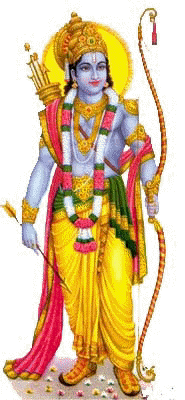
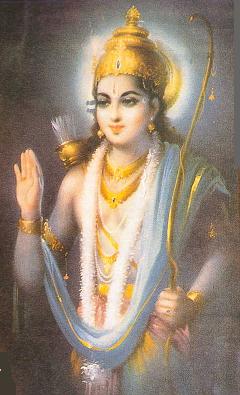
Lord Ram
Boyle
is
being feted and felicitated, because most Hindus have
been too cowed by hundreds of years of Mogul invasions and
British rule and subsequent Christian conversions to feel any
sense of pride in their faith or outrage when their beliefs and
Gods are blasphemed. And
since the average Hindu is without pride—or a clue, for that
matter—we have become the easiest of targets. There will be no
“fatwas” against Boyle and his cast and crew, no protests or
organized expression of outrage by Hindus against his producers
and distributors. Indeed, most Hindus would be delighted that a
white man has made a film about their country. After
all, any attention from whites and the Western media—even of
the most viciously negative sort—must be good!
Few
understand the poor light in which Indian culture and poverty
have been projected, and
India
denuded of self-respect.
Today, the
reality is that anti-Hinduism has become the world's new
anti-Semitism and will have similar disastrous consequences.
***
I
have picked just two of many blasphemies from Boyle’s film.
And he is being feted and felicitated, because most Hindus have
been too cowed by hundreds of years of Mogul invasions and
British rule and subsequent Christian conversions to feel any
sense of pride in their faith or outrage when their beliefs and
Gods are blasphemed. We take no pride in India being a secular
democracy—for Hinduism openly sheltering, over thousands of
years, Christians and Jews from Syria and Persia, who fled
Islamic persecution; Parsis who fled Muslim persecution for
worshiping Zoroaster; Armenians who fled the Turks, and now
Tibetans fleeing China. We take no pride in the fact that our
faith does not ask us to proselytize or convert anyone else, nor
are we proud that Hindus have never waged wars or invaded any
other country in the name of religion. We give no credit to our
religion for having the open-mindedness to give freedom of
worship to others who believe differently, so that Christians,
Jews, Muslims, Bahais, Jains, Sikhs, Zoroastrians and others can
rightly call India their home.
And
since the average Hindu is without pride—or a clue, for that
matter—we have become the easiest of targets. There will be no
“fatwas” against Boyle and his cast and crew, no protests or
organized expression of outrage by Hindus against his producers
and distributors. Indeed, most Hindus would be delighted that a
white man has made a film about their country. After
all, any attention from whites and the Western media—even of
the most viciously negative sort—must be good!
(source: Damn
the Hindus to win global awards - greathindu.com).
Is
Slumdog Millionaire
worth the praise?
Sitting
inside a crowded movie theatre in Nariman Point,
South Mumbai
surrounded by other pasty-skinned foreigners and a few overtly
wealthy Indians, I was forced to stifle an audible groan. Enough
was enough. For an hour and a half (and for Rs 250), I had
watched a right proper Brit and a middle-class Mumbaikar stumble
through cheesy dialogue, all the while pretending to represent
the Mumbai slums.
'It's
official,' I thought. 'Slumdog Millionaire
is massively disappointing. It's inauthentic and vain. And it's
making a mockery of
Hollywood
's annual awards season.' The
realisation saddened me because I tried hard to like the film.
Desperately, in fact. From the moment I had first heard of
acclaimed director Danny Boyle's plan to shoot a movie in
India
, I positively swooned. 'My
India
, my Mumbai, no longer a crude caricature!' I had gushed. 'The
world will finally see her as she is!'
During
the horror of 26/11, (refer
to Islamic
terror and Massacre
in Mumbai) while
Western film critics instructed the laity to 'see Slumdog
Millionaire in order to better understand this benighted
Asian metropolis', I consoled myself by conjuring up images of
packed American theatres, where attentive US movie-goers could
receive a genuine taste of Mumbai. So when Indian friends
pronounced themselves 'woefully underwhelmed' with the
'overrated' film, I dismissed their opinions and instead turned
to glowing reviews in the Chicago
Tribune, the Wall
Street Journal and others.
An
earnest, talented outsider's cursory glance at Mumbai slum-life.
But the best film of 2008? Worthy of all the awards and
accolades that
Hollywood
has to offer? Hardly.
And
why in the world has Simon
Beaufoy been award for best screenplay? It's
terrible, worse than bad, more full of holes than a block of
Swiss cheese.
It
was the absurdity of slum-kids knowing all about Samuel Colt,
the completely inauthentic (and clich�d)
call-centre scenes, the bizarrely callous game show host, the
indifferent studio audience, the implausibility of a hardened
Mumbai gangster asking for a sandwich, the doubtful CST
rendezvous (Ever seen CST at 5 pm? The phrase 'needle in a
haystack' comes to mind), the ubiquitous Queen's English, the
improbability of a fully-clad mini-Ram ready to wage war on
Mumbai's Muslims. But, most of all, it was the
disastrous performance of the lead actor, Dev Patel.
For
starters, his Jamal couldn't be any
more British if he tried. Apparently, having brown
skin was the only pre-requisite for taking on the role. Never
mind the accent. What resulted, naturally, was a completely
unbelievable character. Every single thing he did rang hollow:
every piece of dialogue, every bit of action, everything. Let's
be honest. Dev Patel wouldn't last five
minutes in a Mumbai slum.
One
of the first negative reviews of Slumdog I read was from the blog The
Great Bong, who absolutely lacerated it. In
it, the blogger wrote, "Well
yes these things do happen in
India
. However the problem is when you show every hellish thing
possible all happening to the same person. Then it stretches
reason and believability and just looks like you are packing in
every negative thing that Westerners perceive about
India
for the sake of crowd pleasing."
He
goes on to propose a film about an outlandish string of events
happening to an African-American boy in
the US, and says, "Even though each of these
incidents have actually happened in the United States of
America, I would be accused of spinning a fantastic yarn that
has no grounding in reality, that has no connection to the
'American experience' and my motivations would be questioned, no
matter how cinematically spectacular I made my movie. At the
very least, I wouldn't be on 94 percent on Tomatometer and a
strong Oscar favourite."
He's
right. Say an Indian director travelled to New Orleans for a few
months to film a movie about Jamal Martin, an impoverished
African American who lost his home in Hurricane
Katrina, who once had a promising basketball career,
but who -- following a drive-by shooting -- now walks with a
permanent limp, whose father is in jail for selling drugs, whose
mother is addicted to crack cocaine, whose younger sister was
killed by gang-violence, whose brother was arrested by corrupt
cops, whose first born child has sickle cell anaemia, and so on.
The movie would be widely panned and laughed out of theatres.
That,
to me, is Slumdog
Millionaire: contrived, pretentious, absurd, hollow,
inauthentic, a pseudo-statement about social justice. And yet
today the film stands on the precipice of
Hollywood
's highest honour, the Academy Award for Best Picture.
(source:
Is
Slumdog Millionaire
worth the praise? - By Matthew
Schneeberge - rediff.com).
Salman
Rushdie slams 'Slumdog'
 India-born
"Satanic Verses" author Salman Rushdie is not
impressed by the triumph of "Slumdog Millionaire" at
the 81st Academy Awards and says the movie "piles
impossibility on impossibility". In a speech at
Atlanta
's
Emory
University
, Rushdie called the book and movie nothing more than
"feel-good". He also complained about various portions
of the narrative, from how characters manage to acquire a gun in
India
to how they mysteriously wind up at the Taj Mahal, 1,000 miles
away from the previous scene. This isn't the first time that
"Slumdog Millionaire" has felt the lash of Rushdie's
tongue, Examiner.com said, noting that in January he told the
New York Times: "I'm not a very big fan of 'Slumdog
Millionaire'." "I think it's visually brilliant. But I
have problems with the storyline. I find the storyline
unconvincing. It just couldn't happen. I'm not adverse to magic
realism but there has to be a level of plausibility, and I felt
there were three or four moments in the film where the storyline
breached that rule," he said. India-born
"Satanic Verses" author Salman Rushdie is not
impressed by the triumph of "Slumdog Millionaire" at
the 81st Academy Awards and says the movie "piles
impossibility on impossibility". In a speech at
Atlanta
's
Emory
University
, Rushdie called the book and movie nothing more than
"feel-good". He also complained about various portions
of the narrative, from how characters manage to acquire a gun in
India
to how they mysteriously wind up at the Taj Mahal, 1,000 miles
away from the previous scene. This isn't the first time that
"Slumdog Millionaire" has felt the lash of Rushdie's
tongue, Examiner.com said, noting that in January he told the
New York Times: "I'm not a very big fan of 'Slumdog
Millionaire'." "I think it's visually brilliant. But I
have problems with the storyline. I find the storyline
unconvincing. It just couldn't happen. I'm not adverse to magic
realism but there has to be a level of plausibility, and I felt
there were three or four moments in the film where the storyline
breached that rule," he said.
(source:
Salman
Rushdie slams 'Slumdog' - samachar.com).
British
Racism: Now we are slumdogs instead of coolies
The “grand success” of SDM has had one benefit
for Indians: now we have begun to be abused as ’slumdogs’
all over the world. Abuses such as “Pakis” and “coolies”
have become old-fashioned. Now we are greeted with the shouts
of: “Hey you bloody slumdog, step out of the way!”
It is
disgusting to see the frothing-in-the-mouth of Anil
Kapoor who is delirious with joy and running all
around the world grinning ear to ear at his “success.”
If there is actually a coolie in
India
, it is him. But wait a minute. On second thoughts, there may be
another one. Congratulating the ‘Slumdog Millionaire’ and
“Smile Pinky’ team for winning Oscars, Prime
Minister Manmohan Singh today said the “winners
have done
India
proud” and their achievement is a tribute to the Indian film
industry.
(source: Now
we are slumdogs instead of coolies and Slumdog
and Malignant Western Narcissism). Refer to Poverty
Porn and British Racism.
Slumdogs
and fat cat bankers
Mesmerised
by the cinematic kitsch of Mumbai's underbelly, Americans are
seeking palliatives to the horror stories tumbling out of the
Byzantine world of investment banking.
The eight
Oscars for Slumdog Millionaire -- three of these going to a
couple of true blue Indians -- for a romanticised Dickensian
tale of a vile Fagin, exploited children and an uncaring system
comes as the perfect stardust for a country seeking to gloss
over the cruel realities of its 21st-century poverty and
joblessness, a predicament made worse by the deepening global
recession.
Thus,
entire front pages have been given over to the delirium of
watching the Indian slumdog arrive on the international stage,
never mind that the portrayal is as savage as you can get in an
oddly prettified plot.
For an
America
that is experiencing what is possibly the worst recession in its
history since the Great Depression, Slumdog Millionaire offers
some relief from its own lethal cocktail of unemployment,
unaffordable food, homelessness and increasing debt.
For them, specially the legion who have lost their homes in the
property market crash, real life characters like John Thain, the
former chief of Merrill Lynch and Co, who couldn't work without
a $1,400 wastebasket in his office and a $35,000 commode in his
toilet, are probably harder to stomach than the impeccably
British-accented Jamal Malik who tries to pass off as an
unlettered chaiwallah (tea boy) and hops from one implausible
situation to the next with all the aplomb of an Etonian before
winning Rs 2 crore (Rs 20 million) in a game show.
The
Bollywood-style melodrama is as superficial a slice of
India
as you can get although its makers claim to be reflecting the
joyous spirit of the slum dwellers.
It's not surprising that
the euphoria over Slumdog Millionaire is limited to the
mainstream media and the upper classes. Collections in
India
show that the movie hasn't been a hit, and its Hindi version
almost a flop.
(source:
Slumdogs
and fat cat bankers - By Latha Jishnu -
rediff.com).
Reflections
on Slumdog Millionaire
Despite
the hoopla in some circles about Slumdog
Millionaire, I find it a disturbing film: empty-headed
in one way, and malicious in others. Slumdog Millionaire treats the poor as disposable cartoon-characters to be
ill-treated and tortured; of course, they also break into song
at convenient moments.
There
is no such redeeming virtue in Slumdog, which is unapologetic about graphic violence. There is a
harrowing scene where a young child has his eyes burnt out with
acid. There is a similar scene in Pier
Paolo Pasolini’s masterpiece Salo,
or the 120 Days of
Sodom
, set in fascist
Italy
, where a handsome young man’s eyeball is gouged out. Salo is one of the
most brutal and horrifying films ever made: and it was intended
to be so, in a Brechtian way – the viewer was supposed to be
horrified at man’s capacity for evil.
 Perhaps
Danny Boyle imagines he is following in Pasolini’s footsteps
when he portrays Mumbai as a living hell. Is this film,
similarly, an indictment of
India
? Is there more to the film than an exercise in artistry? Is it
purely coincidental that it carries an eerie echo of the
official position of the British government, as recently
articulated by their Foreign
Minister David Miliband, on a visit to India
? Perhaps
Danny Boyle imagines he is following in Pasolini’s footsteps
when he portrays Mumbai as a living hell. Is this film,
similarly, an indictment of
India
? Is there more to the film than an exercise in artistry? Is it
purely coincidental that it carries an eerie echo of the
official position of the British government, as recently
articulated by their Foreign
Minister David Miliband, on a visit to India
?
(Refer
to Don't
attack us please,
UK
ads to say on Pak TV).
Let
us be charitable and assume that Boyle wanted to condemn
whatever it is in
India
that has caused this abject poverty to happen and continue. Who
were the culprits? Ironically, it was
British imperialists who beggared a hitherto prosperous
India
by “borrowing” capital that is worth $10 trillion — yes,
trillion — in today’s terms.
Besides,
tens of millions of Indians were starved to death by uncaring
British imperialists, as graphically described in Mike
Davis’ Great
Victorian Holocausts: El Nino and the Making of the
Third World
. Perhaps
this would be a good time to ask
Britain
for reparations?
And
who has kept 250 million Indians in poverty even after the
imperialists left in 1947? Why, the Congress, and the
Communists! Through mind-numbingly idiotic schemes whose main
result was the large-scale transfer of public wealth to private
hands, the Congress and the Communists, through sixty years of
their rule, have successfully prevented a large number of
Indians from rising from poverty. So Boyle is targeting the true
villains.
Danny
Boyle’s target – everybody’s soft target, because it does
not retaliate with violence – is Hinduism.
This
is similar to how Deepa Mehta and
Shabana Azmi dissembled
about their use of the names “Sita” and “Radha” –
names pregnant with meaning for Hindus – in the over-rated
film “Fire”.
There
is a tendency among the British to
stereotype and demonize Hindus in
particular and Indians in general. For some reason, this is
welcomed with nothing short of rapture by a section of the media
and the self-proclaimed “intelligentsia” of
New Delhi
. There is, for instance, a second-rate historian who routinely
thunders against Hindus. The level of his incompetence was
exposed in a BBC film where he suggested that the Christian
apostle Thomas “could have” come to
India
. Well, he didn’t – and history is generally about what
happened, not what “could possibly have” happened.
One
is that the British always found it easier to relate to
Mohammedans, because both thought of themselves as natural
conquerors. British rule was also heavily influenced by the
Church, as is documented in Suhash
Chakravarty’s brilliant study
The
Raj Syndrome: A Study in Imperial Perceptions.
The Christian British
found Hindus incomprehensible, and this continues to this day.
Danny
Boyle, on the other hand, doesn’t matter. He may get his
Oscar, and he may make his next film about the man, somewhere in
the
US
, who kidnapped a teenage hitchhiker, raped her, cut off both
her hands, and left her to bleed to death. The girl, somehow,
survived. Or about the man in
Austria
who kept his daughter captive in his basement for twenty-four
years, raped and impregnated her repeatedly, and fathered seven
children with her. Or about those teenage-runaway-junkie-hookers
in
San Francisco
’s Tenderloin district, who accost passers-by with a
drug-dazed “Wanna party?” Their lives are unlikely to be
better than what the New
York Times reports about teenage prostitutes in Cambodia.
(source:
Reflections
on Slumdog Millionaire - By Rajeev Srinivasan).
Rush
Limbaugh US radio host: Indians are 'slumdogs'
 On
April 10, while discussing the outsourcing of jobs from
America
, Limbaugh viciously insulted
India
and her citizens, inanely referencing the Danny Boyle smash-hit
film Slumdog Millionaire
to make his point. On
April 10, while discussing the outsourcing of jobs from
America
, Limbaugh viciously insulted
India
and her citizens, inanely referencing the Danny Boyle smash-hit
film Slumdog Millionaire
to make his point.
"There's
a reason [these jobs]
aren't coming back. They're outsourced for a reason, an economic
reason, and they're not coming back," Limbaugh said while
speaking to a caller named Terry from
Ohio
. "If you're sitting out waiting for a job that's now being
done by a slumdog in
India
, and you're waiting for that job to be cancelled,
for the slumdog to be thrown out of work, and you to get the
job, it ain't going to happen. It's not the way economics
works."
(source: US
radio host: Indians are 'slumdogs' - rediff.com).
But
contemporary film making seems to have appreciated little of
these ground realities; instead we find a rehash of the old and
improbable rags to riches story in an ultra-regressive style. A
magnificent Mumbai slum, two Muslim brothers, a Hindu mob
killing innocent Muslim women, criminally amputated children
singing Surdas"s songs, Hindu policemen torturing an
innocent Muslim boy and a diabolic Hindu game-show host who
hands his Muslim contestant to his Hindu police which hates the
Amnesty international, and voila, you have all the ingredients
for a "secular" potboiler which is on the road to the
Oscars! You might argue that it"s not realistic but only
fantasy since there is greater probability of winning the
jackpot on a lottery ticket without being abused by the police
than winning the top prize on a quiz show with 15 unique
questions.
But
then you can be kidding with the graphic depiction of blood
curdling anti Muslim riot in which a Hindu mob slits the
children"s mother, the Indian policeman electrocuting the
Muslim suspect or the gory scene of the amputation of the street
children by the mafia who are then forced to sing Surdas"s
bhajans. The book by Vikas Swarup has the main protagonist named
as Ram Mohammad Thomas who was conveniently transformed into a
Muslim boy, Jamal Malik who lost his mother to a Hindu mob to
make it sound in the author"s own confession more
"politically correct."
This
ostentatious display of anti Hindu sentiment is of course lost
on the jingoists or those ABCDs who go gaga over such pernicious
cinema. Sincere critics questioning the dumb plot where a slum
boy grows up into a sophisticated leftist JNU product with a
flawless English accent are censured by appealing to the
authority of the Golden globe awards.
(source:
Is India still the 'slumdog' for the
West?
SlumDog Millionaire has won over the Western audiences with
its 'fairy tale in a Mumbai slum' storyline but back home the
film has opened up a heated debate about the stereotyped
representation of India and Mumbai in the Western films.
But
despite the astounding success achieved by the film, which is
being touted as the next big winner at the Oscars, Bishakha
Dutta, a documentary filmmaker based in Mumbai, is articulate
about her disappointment with the much-hyped film. She says,
"The film takes each and every
cliche there is about India
and Mumbai and puts it in its plot. The result is a film that
takes you from one horror of Mumbai to another, in a plot that
is incredulously unbelievable."
(source:
Is
India still the 'slumdog' for the West? - rediff.com).
They've started calling
Indians 'slumdogs'
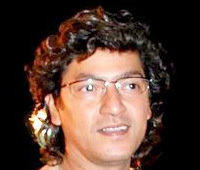 Bollywood
composer Aadesh Srivastava says he is embarrassed to walk on the
streets of the
US
after Oscar-nominated 'Slumdog Millionaire' because 'they have
started calling Indians slumdogs'. Bollywood
composer Aadesh Srivastava says he is embarrassed to walk on the
streets of the
US
after Oscar-nominated 'Slumdog Millionaire' because 'they have
started calling Indians slumdogs'.
'I'm
so upset. They've started calling Indians 'slumdogs', just like
'coolie' was a 'slang' in
Britain
. Now in the
US
I feel slumdog is a 'gaali' (slang) for Indians. Mumbai has
given me everything,' Srivastava told.
'To see
the city being shown as a place of dirt, filth and crime only is
very humiliating. Even I can make a film on child
prostitution and paedophilia. But
it won't get Oscars because I am not a 'gora' (white),' added
the composer.
Refer
to Survivors
Network of those Abused by Christian Priests
The film
was lauded in the West, but it has been criticised by some in
India
for showing its ugly side by concentrating on grinding poverty.
'What
right does the director have to show Mumbai as a slum? Now we
are considered a slum city in all parts of the world. Humlog
kahin mooh dikhane laayak nahin rahe (we're unable to show our
face anywhere),' said Srivastava, who watched the movie in
Los Angeles
this week.
Srivastava applauds fellow composer Rahman's music in the movie,
but says he'd never be part of a film that makes
India
look like a slum. 'I'm so upset. It's a disgusting movie. Being
an Indian it was doubly humiliating to be watching the film with
Americans. Even if Steven Spielberg asked me to compose music
for a film that makes fun of
India
, I won't do it,' he said.
Being a diehard Amitabh Bachchan fan, Srivastava is appalled by
the way the Big B is shown in the film. 'I puked when I saw that
kid smeared in shit asking for Bachchan saab's autograph. What
the f...k was that? Does Danny Boyle know what Bachchan saab
means to us Indians? Who would dare approach him like that?
'We
applaud people who come to our city and spit in our faces!' he
said.
(source:
They've
started calling Indians 'slumdogs': Aadesh Srivastava
- musicindiaonline.com).
India
:
Poverty, and clichés slumdog millionaire – By Francois
Gautier
 Why,
as a film Slumdog Millionaire, which conveys a negative image of
India - slums, exploitation, poverty, corruption, anti Muslim
pogroms – meeting the so successful in the West? Why,
as a film Slumdog Millionaire, which conveys a negative image of
India - slums, exploitation, poverty, corruption, anti Muslim
pogroms – meeting the so successful in the West?
There
are several answers:
1. When the missionaries began to evangelize India, they quickly
realized that Hinduism was a religion that was not only
practiced by a huge majority, but it was deeply rooted in the
mentality of Indians. They therefore decided to blacken the
'defects' of the Hindu religion, by multiplying by one hundred:
caste, poverty, child marriage, superstition, sort of widows,
sati ... Today, these stereotypes persist and focus on the
'image we have of
India
.
2. We, Westerners continue to suffer
from a superiority complex in relation to peoples of the Third
World in general and
India
in particular. Sitting in front of our television
time information, a steak frites before us, we like to feel
sorry for the misery of others, it flatters our ego. That is why
books such as the City of
Joy Dominique Lapierre
, which give the impression that
India
is a vast slum, or a film Slumdog Millionaire, deftly handling
the half-lies, have a such impact.
3. In this film, the enemies of
India
join hands. Today, billions of dollars that gullible
parishioners give to charity used to convert the poorest in
India
. Once converted, they are taught to hate their culture, their
religion, thus creating an imbalance in the Indian psyche.
Islamic fundamentalism ruthlessly hounds also against
India
, as demonstrated by the recent bombings in Mumbai. Indian
communists are in power in three states, made alliance with the
Adventists (and other radical Protestant sects) and the
fundamentalist Muslims against Hindus. And finally, the
over-Americanization also seriously social and cultural capital
of
India
. Slumdog plays on all these pictures of a misleading way.
4.
Closer to home, in France, French Indian, played by researchers
in South Asia of CNRS, and its affiliates such as EHESS,
has often been the vehicle for misérabilisme: caste,
poverty and of 'denial': the 'Hindu fundamentalism'. Can be done
most glaring contradiction? Hinduism has shown throughout its
history a remarkable tolerance to the Christians of Syria, Arab
merchants, the Parsees of Zoroaster, the Jews of Jerusalem,
persecuted at home, to settle in
India
and 'practice their religion freely. At the beginning
of the film, Jamal's mother has throat cut by Hindu fanatics.
But it is the Muslims who slaughter live a Daniel Pearl and
broadcast the film on the internet - never the Hindus. Riots in
India
are always initiated by the Muslims: the anti-pogroms in
Gujarat
were triggered because 59 Hindus, including 36 women and
children, were burned as in dogs in a train by a mob of Muslims.
5. And finally, it is true that the Indians, because they have
been colonized for so long (unlike the Chinese) do not have a
lot of national pride and are sometimes even proud of being
criticized. Today much of the intellectual elite of
India
has lost touch with its cultural roots as well as spiritual and
only look to the West to solve its problems, ignoring its own
tools, which are very old and possess infinite wisdom . It is
the eternal history of the colonized become more sectarian than
the settlers.
How
else that Slumdog Millionaire, which literally defecating on
India
from the first frame (a child who plunges into a sea of crap to
get an autograph of Amitabh Bacchan), is a tobacco? Some scenes
from the film are, however, in the perverted imagery of director
Danny Boyle, because we can not find them in the book by Vikas
Swarup, an Indian diplomat, whose film is based. The hero of the
film (which is not Muslim, but many religions: Ram Mohammad
Thomas) does not pass his childhood in
Bombay
, but in a Catholic orphanage in
Delhi
. Jamal's mother is not killed by "Hindu fanatics' in the
book, but she abandons her baby, of unknown religion in a
church. Jamal torture is not a television presenter, but an
American who wants the Russian who bought the television rights
of the game. The scene of tears three children abandoned in the
rain is also not in the book. Jamal and his heroine from
colliding when they are teenagers and they live in an apartment
and not in a slum.
(source:
India
:
Poverty, and clichés slumdog millionaire – By Francois
Gautier).
Slumdog
and Western Narcissism
“Slumdog
Millionaire” belongs to the genre of movies like “city of
joy”, “fire” and “Mr and Mrs Iyer.” It is another
reinforcement of the western “manifest
destiny” or “white-man’s-burden”
view of India – the constructed image of the “other” that
the narcissistic civilization that is the “west” needs in
the process of defining its own self.
Colonized
peoples in all cultures and all times in history, (whether
politically colonized or remaining colonized at the
psychological level after the political colonization has ended)
must be constructed in terms that the colonizer can comprehend
and control: in the case of India and Hindus — as irrational,
obscurantist, superstitious, primitive, divisive, territorial,
violent, destructive — and therefore, poverty-ridden,
downtrodden, immoral, corrupt — and therefore — in the
ultimate analysis, unfit for self-determination or self-rule.
This basic
process of imagining the other remains the foundation for
present-day economic-cultural imperialism via “manifest
destiny” as it was during the euro-colonial era via the
“white-man’s-burden.”
Therefore
— as was in the days before the age of electronic media, when Katherine
Mayo pioneered this whole process by her “Mother
India,” followed by a truckload of works to the same ultimate
aim and purpose – the film medium, with a more instant and
wider reach and many times more visual, verbal and vital effect,
must be put to full use – either by the west itself,
represented by likes of Dominique
lapierre, Richard Attenborough, or — now — Danny
Boyle, or by the “native informants” of the west
— the purchased cultural prostitutes in the form of Deepa
Mehta, Aparna Sen, Buddhadeb Bhattacharya and the
like. And the “money” used for the purchasing are typically
“critical acclaims”, “awards”, “reviews” and
“film-festival-entries.”
(1) The
slum — the foremost basic ingredient, complete with
lepers, beggars, naked urchins, goons, horribly amputated
sub-human humans begging by singing Surdas or Meera bhajans
(read: in the name of Hinduism) etc. – must be first used in
liberal amounts.
(2) Muslims
= the victims and Hindus =
unprovoked aggressors;
(3) Muslims
= secular and suffering and Hindus = the powerful hostile
majority;
(4) Authorities
(policemen) picking on Muslims = Hindu = Hindutva misrule and
minority oppression;
(5) Riot
victims = always Muslims (to be shown as always in
panic or running mode) – thereby successfully reinforcing
Hindu India into a hostile, savage jungle where minority lambs
and sheep have to spend their entire lives constantly running
and trying to hide;
(6) Christian
nuns = benevolent rescuers, selfless servers and constantly in
the risk of getting raped anytime. “Confirming”
that Hindu-majority
India
can have no decent human rights performance, and Christianity
(read: western helping hand) has no welcome or appreciation from
the barbarians;
(7) Blue-bodied
Rama = Hindu icon = inspiration
behind the violent, fanatical, irrational, insensitive,
dehumanised Hindu; inspiration behind “Hindu communalism”
(the Sangh parivar — Rama connection established) = a dark
(”blue” — as also in Kali) symbol that can even turn a
pre-teen kid into a raging bloodthirsty hate-filled fanatic.
Bombay
police = the authority, the ruling power, the law-keeper of
Hindu India = always picking on the Muslims = intolerant and
suspicious of help from outside = helps the Hindu fanatics with
the power of their uniforms, therefore making the prevalent
law-and-order situation, human rights records and civic/public
life and insecurity of minorities under Hindu majority rule
“very obvious”;
(9) The
Christian church = the
white, Christian first-world western “helping-hand” trying
to make things better for the Hindu masses, trying to rescue,
humanize and enlighten them, but constantly hounded by the
hostile, savage heathens, who cannot go on with their evil if
the church is allowed to flourish and people are made
“aware” and “emancipated”;
(10) Amnesty
International = another form
of the white, Christian, first-world western hand, extended to
the downtrodden dehumanized Hindu India, but which is not
allowed by the authorities, law-keepers and the public (the
powerful and unrestrained Hindu majority) to do its work for the
poverty-ridden heathen Hindus in peace, but is constantly
harassed and forced to try to work under very “challenging and
hostile conditions.”
With these
ingredients — the essential ‘masalas,’
the great Indian feast of cow-caste-curry
(to use the phrase coined by Rajiv
Malhotra) is served before the champagne-caviar-and-red-carpet
circuit at
Cannes
film festival.
Refer
to Survivors
Network of those Abused by Christian Priests
(source:
Slumdog
and Western Narcissism - india-forum.com).
Watch
The
Truth about our "Secular" Indian Media
Slumdog
just reinforces all the old stereotypes
We all
knew Danny Boyle would get the award, having portrayed
India
negatively, projecting
the slums and drains of Bharat, the inhuman behaviour of the
police and highlighting the brothels of Mumbai.
After
all, it’s this aspect of India that’s been adored by
phirangs in the past, who term India as the country of
snake-charmers and elephants, refusing to believe that it is at
par today with any other country in the areas of IT, science and
technology, fashion and beauty care as well.
Is
it not an irony that for greater exposure of the already known
talent of our films, we needed Slumdog? Couldn’t we have
managed it without exhibiting the negative-side of our story?
The answer is “NO”.
So,
when we are celebrating the laurels of our achievers, we should
also ponder the negativity of the film.
Those who saw the film would think
of
India
as a country of dirt and filth, ridden with poverty, where
violence and deceit are the key to success and where girls are
often taken to brothels.
For
the recognition of a very few in the outside world, we have
allowed outsiders to portray, not the other side, but the wrong
side of Bharat. A
senior officer of the tourism ministry confided that
India
has been shown as a country where youngsters are so crazy that
they would not give a second thought in jumping into a pit of
night soil just to see Amitabh.
(source:
Slumdog
just reinforces all the old stereotypes
- By Anita Saluja).
Top
of Page
Bishop,
mend thyself! - On Dalit Christians
Shri
Joseph Pulikkunnel, the eminent scholar and Director
of Indian Institute of Christian Studies, is known for his
maverick views on social issues especially those pertaining to
Christianity. He has sent us a copy of his "Open Letter to
the Protesting Bishops". In this letter he unveils the
duplicity of Bishops and the chemistry behind their demand for
reservations for the so-called Dalit Christians. "It was
with the false hope of an egalitarian status within the
'Christian community that once "depressed classes" (Dalits)
agreed to convert to Christianity. " Pointing an accusing
finger towards the clergy for the so-called Christian Dalits'
oppression he writes,
"You are
playing politics with the poor Christian 'Dalits'."
Following
is the text of his letter.
Dear
Bishops,
 It is
reported in the newspapers that your Graces, and Lordships have
graciously comedown to the earth in New Delhi, in a protest, march for equal rights for "Dalit"
Christians. I am happy to know from media photos that many of
you, clad in Roman royal dress, thereby distinguishing yourself
from the common people, graced the occasion with a Royal touch.
It is heartening to know that at least now, Your Lordships have
learned that there are "Dalits" in the Christian
community. "Dalits" mean
persons who are being persecuted and oppressed. It is
reported in the newspapers that your Graces, and Lordships have
graciously comedown to the earth in New Delhi, in a protest, march for equal rights for "Dalit"
Christians. I am happy to know from media photos that many of
you, clad in Roman royal dress, thereby distinguishing yourself
from the common people, graced the occasion with a Royal touch.
It is heartening to know that at least now, Your Lordships have
learned that there are "Dalits" in the Christian
community. "Dalits" mean
persons who are being persecuted and oppressed.
When
your Graces And Lordships, and your predecessors converted
Dalits from the Hindu Society, the main attraction offered to
them was that there was no caste discrimination in the Christian
society and that they would be treated equally as brothers in
Christ. It was with this false hope of an egalitarian status
within the Christian community that the poor Dalits converted
themselves to Christianity. If they are still dalits, the
question is who has been oppressing them of late.
When
the father of the Constitution provided for the Dalits'
reservation Hindus, who formed the vast majority, of the
population, accepted in principle the reservation for Dalits.
They were surrendering the equality of opportunity enshrined in
the Constitution in favour of the, Dalits, as a compensation for
the ill-treatment their forefathers did to that community.
 Here
it may be remembered that this charitable disposition was not
shown by the white Christians towards the black Christians in America. Here
it may be remembered that this charitable disposition was not
shown by the white Christians towards the black Christians in America.
If
there are Dalits in the Christian community the responsibility
to compensate for their oppression is vested in you, for your,
hierarchy itself was responsible for ordering and maintaining
the social discrimination in the Christian community. The
question is whether you addressed yourself in the past to the
problems of the converted Christians-your "beloved"
sheeps-who had been living for more than 100 years as
Christians? If you make a solemn heart search you can see that
you have done practically nothing for their uplift. If you look
into the yearly income of all the dioceses, parishes,
monasteries and convents of
India
, that would be equal to the budget amount of any state in India. Perhaps this is a random estimation, because nobody knows your
real income, as it is a well guarded secret. If you were to set
apart 10% of your annual income, internal and foreign, for the
newly converted Christians, I am sure all of them would be
having a good house and funds for education. If you were to
reserve just 20% of the job opportunities in your institutions
that are protected by minority rights, I am sure 10 years all
educated "Dalit" could be provided with jobs.
When a
group of "Dalits" and others who wanted to present a
memorandum to you at the conference of the All
India Bishops held in Vadavathoor, Kottayam, Kerala a
few years back you called in police protection. If converted
Christians are "Dalits" today, certainly you are the
oppressors. You cannot reasonably put the blame on anybody else.
Had you ever cared for their economic uplift with the huge
amount of money at your command, they would never have been an
oppressed lot.
You
were more interested, in the number game increasing the number
of Christians in the census reports.
You converted the Dalits by
pouring water on their heads and now you wash your hands of the
responsibilities and recommend the mercy of the state, bailing
them out with the Hindu Dalits. You have taken over the condemned leprosy of
caste system on the Christian society and unashamedly own it.
You are playing politics with the poor Christian "Dalits".
You know by your muscle power and vote-bank mechanism can obtain
concession from the government by creating social tension in India; you are using your money power to that end.
(source:
Bishop,
mend thyself! - On Dalit Christians - By Joseph
Pulikkunnel - organiser.org). Refer
to It
happens only in India - By S L Byrappa
Top
of Page
The
UK
Booker “Pee on
Pagan” Award
Pampering
Self Conceit of the West?
Translated
from Dainik Jagaran. This is
a nice article about the farce that goes by the name of English
writing in
India
. Some Indians have caught on to the trick of making money from
the rich Westerners by pissing on their own land and culture.
Literature
up for Sale - By S Sharma
Long
back, well-known Hindu writer Narendra Kohli translated a story
written by Khushwant Singh and sent it to a Hindi publication.
Its editor returned it with the comment that “We are not into
the habit of publishing this kind of low-quality literature.”
Actually, the glamour and prestige that has become
associated with the English language in
India
often manages to obscure the ugly reality of its English
writers. The truth is that the kind of stuff our English writers
churn out is carefully crafted by them
not to serve the taste of Indians but of foreigners.
The English writers of
India
get acceptance and approval from the Westerns only if they
affirm through their work a strange and twisted kind of image
about
India
that the foreigners love to promote.
 Recently,
Arvind Adiga has been given
the Booker Prize, the
UK
’s most popular literary award, for his book “The
White Tiger.” Adiga received the prize money of
about one hundred thousand US dollars because the Booker panel
seems to have been mightily impressed by his story about a
killer servant. According to the head of the panel Michael
Portilo, after reading the novel, his beliefs about
India
have changed and he got to know about the “real
India.” Let us see what this “real India
” is that Adiga’s novel has allegedly revealed. Recently,
Arvind Adiga has been given
the Booker Prize, the
UK
’s most popular literary award, for his book “The
White Tiger.” Adiga received the prize money of
about one hundred thousand US dollars because the Booker panel
seems to have been mightily impressed by his story about a
killer servant. According to the head of the panel Michael
Portilo, after reading the novel, his beliefs about
India
have changed and he got to know about the “real
India.” Let us see what this “real India
” is that Adiga’s novel has allegedly revealed.
Presenting
a distorted and perverted shape of India.
In
the beginning of the novel, its hero Balram says: “Before
starting a story, there is a tradition in our country to kiss
some god’s arse. But which god’s arse? There are many
options. Muslims have only one god. Christians have three. But
we Hindus have three crore and sixty lakh gods, any of whose
arse we can choose for kissing.” This way, it has been alleged
that instead of reciting mantras or slokas such as Saraswati
Vandana, Mangla-charan or Ganpati Vandana, the only
tradition Hindus have before starting any work is to “kiss
some god’s arse.” Now tell
me, which Indian-language publication will publish this kind of
trash even if it gets translated?
Our
English writers in their greed for awards, prize money and
Western approval vend a distorted and perverted shape of
India
.
Indian
citizens should be under no illusion about the
“achievements” of Indian English writers in receiving
Western awards. There is a major role of lobbying by agents in
securing these. But the main thing is that many English writers
do a kind of “formula writing” that is tailor-made
to attract the Westerners and pamper their self-conceit. The
kind of strange facts and spin about
India
that they portray in their writing are clearly not meant for
consumption by the Indians. These are actually meant to lure
foreign personalities who hold the key to Western awards and
prize money. This tendency of our English writers has been
scrutinized in detail by M. Prabha in
her book “The
Waffle of the Toffs: A Socio Cultural Critique of Indian Writing
in English.” According to her,
English writing in
India
is a purely commercial business that is run by a small but
incestuous group of Indian con-artists.
Their output has absolutely no originality or creativity.
Instead, it is deliberately stuffed with “saleable”
material.
“Time”
magazine has carried a two-page report about Arvind
Adiga bagging the Booker prize. Nothing has been said in it
about the literary quality of Adiga’s book except that it
reveals the real face of Indian poverty, shows how meaningless
all talks about economic development and advancement of India
actually are and proves how competent Adiga’s agent is that he
got him this award. But even the Times report calls the book a
commercial success, not a literary one. The only comment it
makes about the plot and writing style of “The White Tiger”
is that these are about the success of a killer servant. Is this
the alleged “reality of
India
” that has been revealed? Even
today in
India
, English is the language of the elite who account for a mere
one or two percent of the population. There is a negligible
number of Indians who use English as a medium of thinking and
self-expression. It
is not without reason that most of Indian English writers such
as Vikram Seth, Salman Rushdie,
Arundhati Suzanne Roy, Amitabh Ghosh, Farukh Dondhi, Jhumpa
Lahiri and so on live in either
England
or America.
All
present day Indian writers writing in English come from
affluent, well-connected and influential families, which, as in
the hypothesis propounded above, makes all their writing
essentially insignificant. All the male novelists who count are
the products of places like
Doon
School
, St. Stephen's College,
Oxford
and
Cambridge
.
Even
those who live in
India
also have an eye permanently cocked toward the West. In other
words, these people never consider other Indians as their
readers and neither do they write for Indian society or readers.
This is why English writers lack quality as well as diversity.
Some people may get fooled by media coverage, royalties and
awards, but such English writing is never meant for Indians.
There
seems to be some kind of conspiracy of silence about “Waffle
of the Toffs” as this scholarly work never gets mentioned
anywhere and hardly any references are available to it online.
It seems the pack of English Writers and journalists of
India
have closed ranks to give this work a quite burial.
(source: The
UK
Booker “Pee on
Pagan” Award
- indianrealist.com and
Preserve
of the affluent -
thehindu.com).
Top
of Page
The
Nexus of Christism, Islamism, and Maoism in
India
The
"secular" media
have created a terrible inferiority
complex among the Hindus.
Proselytizing
Christism, Marxism, and Jihadi
Islamism are totalitarian and rigid
empire building political dogmas for invasion, expansionism,
plunder, oppression, exploitation, and destruction of
"non-believers" and their traditional cultures.
These
"closed" systems compete and oppose one another in
many parts of the world. However, in India
they seemed to have become strange bedfellows and have made an
unholy alliance against Hindu systems of philosophy and
pluralistic spiritual traditions. Their use of a veneer of noble
values, political philosophy, falsely presented secularism, and
beliefs about equality in human existence, and dualistic
perspectives conceal their closed dogmas that are often taken
for granted as benign and even pious when it comes to religions.
Watch
NDTV
& CNNIBN Defending Antinationals & Terrorists and
Intellectual
Terrorism and Subversion in polity – By Radha Rajan
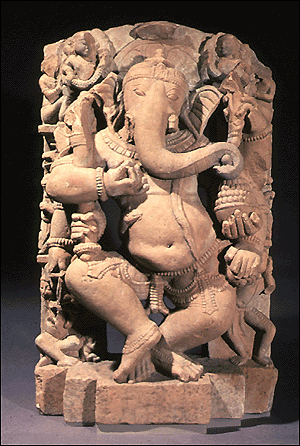

The
"secular" media
have created a terrible inferiority
complex among the Hindus.
Proselytizing
Christism, Marxism, and Jihadi
Islamism are totalitarian and rigid
empire building political dogmas for invasion, expansionism,
plunder, oppression, exploitation, and destruction of
"non-believers" and their traditional cultures.
These
"closed" systems compete and oppose one another in
many parts of the world. However, in
India
they seemed to have become strange bedfellows and have made an
unholy alliance against Hindu systems of philosophy and
pluralistic spiritual traditions.
The goal of this axis is to
eliminate Hindus and Buddhists from political power from
Fiji,
Nepal,
Bhutan,
Burma,
Indonesia,
Thailand,
Malaysia, and
Sri Lanka, and eventually from India.
***
We
are unaware of their hidden agendas and ulterior motives. Our
politicians lump them as "religions" to be given all
concessions in a secular country or respect them as political
systems, communities, or parties needing special representation
in a democracy to win the vote banks for the UPA
(Indian National Congress) and inadvertently or
knowingly accord them status and opportunities for expansion.
Hindus
forget the Christists', Islamists', and Communists' past
history, their track record of deception and violence, their
current designs, and future plans for wiping out Hindu majority.
The word "Hindu" is abhorred and vilified in their own
country and Hindus are hated by their own brothers who pride
themselves as "secularists" though going to the same
temples and offering same prayers as the other Hindus, but
feeling ashamed to say they are Hindus in their own country.
The
"secular" media
have created a terrible inferiority
complex among the Hindus by
focusing on the shortcomings and evils of Hindu society as if
other societies do not have their defects and social evils at
all. By promoting such anti-propaganda against Hindus
the media and the UPA Government have facilitated creation of a
criminal nexus against Hindus, Sikhs,
Buddhists, Jains in India but this axis is also
operating around the world.
The goal of this axis is to
eliminate Hindus and Buddhists from political power from
Fiji,
Nepal,
Bhutan,
Burma,
Indonesia,
Thailand,
Malaysia, and
Sri Lanka, and eventually from India.
(source:
The
Nexus of Christism, Islamism, and Maoism in India
- By Dr. Babu Suseelan Haindava Keralam).
Top
of Page
In
The Twilight of Life, A Newborn Love for
India
The Will to be different...
Robert
Brayon (61), an American citizen, was cremated on the
banks of the Saryu river in
Bageshwar according to Hindu rituals. Instead of
being laid to rest, it was Brayon's wish to be cremated
like Hindus.
Brayon was cremated at the confluence
of the Saryu-Gomti rivers in Bageshwar this morning. His last
rites, according to his Will, were performed by Mr Anand Singh
Negi, his landlord. Brayon had left Rs 20,000 for his cremation
and an additional Rs 5,000 for Shanti Paath (rituals for the
soul's peace). The American had passed away in Hotel Prakhar of
Haldwani on Monday. Brayon, who was suffering from blood cancer,
had come to Haldwani for treatment in
Susheela
Tiwari
Memorial
Hospital
here. On his death police recovered the Will and sent a copy of
it to the US Embassy which immediately approved his cremation.
“We received the fax from the embassy approving of his
cremation and immediately thereafter sent his body to Bageshwar,
where he was residing,” said Mr Bhatt, PRO SSP Nainital.

The
Saryu river at Bageshwar. In
The Twilight of Life, A Newborn Love for
India
Watch
Introduction
to Hinduism video - By Hinduism Today
***
“As
stated in the Will, Mr Negi performed Brayon's last rites like a
member of his own family,” said Chandan Parihar, an eyewitness
to the cremation in Bageshwar. The duo enjoyed a very good
relationship, he said in his statement to The Statesman. Brayon
had been living in Mr Negi's house as a tenant for the past five
years.
Brayon
had come as a tourist from
New York
a few years back. But when he came to
Kosani at Bageshwar he was so mesmerised by the beauty of the
place that he decided to stay back. The American extended his
visa again and again as he did not want to return home at the
twilight of his life. He developed a liking for Indian
culture, particularly Hinduism. Convinced
that he would not live long in view of his disease and
deteriorating health, he made his Will some time ago to ensure
that he was cremated like a Hindu. Brayon's wife Theodora EV and
his sisters Martha and Helene, who live in New York, have been
informed of his demise and cremation as per his Will, but they
have not turned up as yet, said Parihar.
(source: The
Will to be different... - By
Swati R Sharma
- thestatesman.net).
Top
of Page
Demolished once for all:
Aryan Invasion Racist Theory
This
fraudulent history has been lapped up by upper caste elite
Indians, as their racial passport to
Europe
. Such has been the demoralization of the Hindu mind, which we
have to shake off through a new factual account of our past.
***
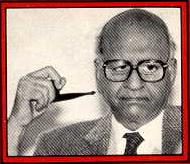 Girilal
Jain (
- 1933) doyen of Indian journalists and editor of The
Times of India from 1978-1988, was
a passionate crusader of the Hindu cause. Author of
The Hindu Phenomenon, he has
observed in his
masterful review of Shrikant G.
Talageri's ‘Aryan Invasion
Theory and Indian Nationalism,’
published in 1993 thus: Girilal
Jain (
- 1933) doyen of Indian journalists and editor of The
Times of India from 1978-1988, was
a passionate crusader of the Hindu cause. Author of
The Hindu Phenomenon, he has
observed in his
masterful review of Shrikant G.
Talageri's ‘Aryan Invasion
Theory and Indian Nationalism,’
published in 1993 thus:
“An
unknown Indian has taken on proponents of the Aryan
invasion/migration theory, demolished their case, and
established that northern India is the original home of the
Aryans and the Indo-European family of languages. The importance
of this remarkable achievement cannot be exaggerated. In course
of time, it can compel the revision of the history not only of
Indian but also world civilization.”
Since then, Talageri, a not-so-unknown Indian now, has
come up with two more works. His ‘The
Rigveda: A Historical Analysis’ (2000) established
that Vedic Aryans were inhabitants of the area to the east of
Punjab, traditionally known as Aryavarta; that the region of
Saptasindhu formed the western periphery of their activities and
that the Aryans migrated from the east to the west within India
and beyond it. For this, he relied solely on a detailed analysis
of the Rigveda.
His latest book, “The
Rigveda and the Avesta: the Final Evidence,”
seeks to prove conclusively beyond all reasonable doubt that
India was the original homeland of the Indo-European family of
languages, that the Rigvedic people were settled in areas around
and to the east of the Sarasvati river in at least the third
millennium BCE if not earlier, that the proto-Iranians who later
became Zoroastrians were settled in the areas to the west of the
Vedic Aryans, and that both started expanding westward around
that period.
As
the name of the book suggests, Talageri collects, collates and
compares a massive amount of evidence from the Rigveda and the
Avesta and also marshals undisputed recorded facts from
Mesopotamian history about the Mitanni and the Kassites to
support his conclusions. He relies on non-controversial data
such as names of people, animals and places, and on the
provenance and numerical frequency of their occurrences, rather
than subjective interpretations of esoteric texts.
We teach our children even today as
settled facts that nomadic Aryans invaded/migrated to India
around 1500 BCE, destroyed the Indus Valley culture and began
what is known as the Vedic Age, and produced Rigveda around 1200
BCE. However, this is only a theory, and an extremely weak one
at that.
That there is not a shred of evidence
for it in either the ancient literature or archaeology, that it
is based on nothing more solid than some striking similarities
among the Indo-European languages, that there is an overwhelming
body of solid evidence against it, and that even the linguistic
data supporting it can be better explained by an alternative
opposite theory, has not daunted its proponents who are deeply
entrenched in the academia, media and, worst of all, in
politics.
Originally cooked up by 19th
century European scholars to
serve the interests of India’s colonial masters, the theory
has now been appropriated by current political ideologies whose
sole purpose is to keep India weak, divided and confused. It is
used to deepen and exploit regional, linguistic and racial
cleavages in Indian society, deny nativity and originality to
Hindu civilization, and justify later invasions: if Aryans came
from outside, how can the Hindus cavil at Muslim or European
invaders?
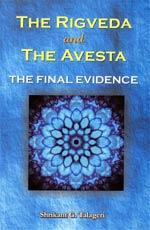 This
is not the first time that the Aryan Invasion Theory has been
disproved. It has been demolished several times over in the
past. Talageri’s specialty is that he uses only objective,
non-controversial and verifiable data from ancient texts to
support his conclusions. Talageri’s point of departure is the
internal chronology of the Rigveda. The Rigveda, the oldest book
in the world and the most primary source of knowledge about
ancient India, consists of 1028 hymns divided in ten Books, or
Mandalas. The composition of these hymns, their collation and
compilation in the present form, must have been a gradual
process stretching over a vast geographical expanse, spanning
several centuries if not millennia, and involving generations of
seers, kings and other actors. This
is not the first time that the Aryan Invasion Theory has been
disproved. It has been demolished several times over in the
past. Talageri’s specialty is that he uses only objective,
non-controversial and verifiable data from ancient texts to
support his conclusions. Talageri’s point of departure is the
internal chronology of the Rigveda. The Rigveda, the oldest book
in the world and the most primary source of knowledge about
ancient India, consists of 1028 hymns divided in ten Books, or
Mandalas. The composition of these hymns, their collation and
compilation in the present form, must have been a gradual
process stretching over a vast geographical expanse, spanning
several centuries if not millennia, and involving generations of
seers, kings and other actors.
That
argument can be simply stated. Rigveda and Avesta have a lot in
common—names of people, animals, meters, geography. However,
the Early Books of Rigveda have very little in common with
Avesta, while the Middle Books have a little more. But it is the
Late Books of Rigveda that have a lot in common with Avesta,
pointing to a period of contemporary development.
Apart
from names and name-elements, there is the evidence of the
development and use of meters used in various hymns of the
different Books. The earliest hymns in the Avesta, the Gathas,
composed by Zarathustra, use the six-line Mahapankti meter,
which is used only in the Late Books of the Rigveda. On this
parameter also, the evidence points to the same conclusion: the
common development of the joint Indo-Iranian culture represented
by these two sacred books took place in the period of Late Books
of Rigveda. The Early and the Middle
Books of Rigveda belong to a period which is older than the
period of the development of this joint culture.
The
geographical evidence of Rigveda is very clear and unambiguous.
It shows that the Vedic Aryans, in the period of the Early and
the Middle books, were inhabitants of interior parts of India,
to the east of river Sarasvati and were only just expanding into
and becoming acquainted with areas further west. The
geographical horizon of the Rigveda extends from (at least)
western Uttar Pradesh in the east to eastern and southern
Afghanistan in the West. Let us divide it in three regions: the
eastern region comprising the Sarasvati and areas to its east,
mainly modern Haryana and western UP; the western region
comprising the Indus and areas to its west, mainly the Northwest
Frontier Province of Pakistan, Afghanistan and contiguous areas
of southern Central Asia; and the central region comprising
Saptasindhu or Punjab between the Sarasvati and Indus.
The eastern region is clearly known to the whole of the Rigveda.
Copious references to the rivers such as Sarasvati, Drshadvati,
Hariyupiya, Yavyavati, Ashmanvati, Yamuna, Ganga, places such as
Ilayaspada, Kikata, and animals such as elephant, buffalo,
peacock and spotted deer are scattered all over the Rigveda, but
particularly in the Early books. In
sharp contrast, the western region is totally unknown to the
Early Books, only very newly familiar to the Middle Books, but
quite familiar to the Late Books. The western places (except a
solitary reference to Gandharva in a late hymn), animals, lakes
and mountains are totally unknown to the Early as well as the
Middle Books, and exactly three rivers are mentioned in Book IV,
which represents the western-most thrust of the Vedic Aryans in
the Middle period.
The late books, on the other hand, are strewn with references to
rivers such as Sindhu, Amitabha, Rasa, Svetya, Kubha, Krumu,
Gomati, Sarayu and Susoma; places such as Gandhari, mountains
such as Arjikya and Mujawat, lakes such as Saryanavat, and
animals such as Bactrian camel, Afghan horse, mountain sheep,
mountain goat and boar.
Most
interesting are the references to the central region—the
Saptasindhu or Punjab between Indus and Sarasvati. Very
significantly, the Nadi Sukta lists the rivers from the east to
the west. Book VI, the oldest book, does not know any of the
five rivers of Punjab. The second oldest book, Book III,
mentions only the two easternmost rivers—Vipas (Beas) and
Sutudri (Sutlej). The third oldest book, Book VII, mentions
Parushni (Ravi), the third river from the east, with reference
to the Battle of Ten Kings in which the non-Vedic enemies figure
as western people of the fourth river Asikni (Chenab). Even the
phrase Saptasindhu first appears in the Middle Books.
As
Girilal Jain had observed,
“if it can be established
that the movement of the users of the Indo-European speech in
India in ancient times was from the east to the west and not
vice-versa, the invasion/migration theory, as it has been
propounded, cannot stand.”
This
makes the Rigvedic Age contemporaneous with the Indus Valley
culture. Far from being the destroyers
of Harappa and Mohenjodaro, Vedic Aryans turn out to be the
architects of those great cities. This
is what Girilal Jain meant when he said that in course of time
Talageri’s research can compel the revision of the history not
only of Indian, but also world civilization.
(source: Demolished
once for all: Aryan Invasion Theory - By Virendra
Parekh - vijayvaani.com). Refer to chapter on Aryan
invasion theory (AIT) and
First Indologists and
European Imperialism.
Refer
to Did
the Vedas get Written around 1200 BC? Says Who? -
indianrealist.com and The
Alleged Massacre at Mohenjo-daro - indianrealist.com. Watch
video - The
Myth of Aryan invasion theory - Part I and Part
II and Part
III and Myth
of Aryan Dravidian Divide and Dwaraka
- A Lost City of Lord Sri Krishna.
Refer
to Communist
Historians: The Enemy within -
indianrealist.com.
Top
of Page
The
Imperialist History of India
A Mythical India?
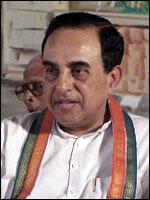 What
is the gist of this British imperialist-tailored Indian history? What
is the gist of this British imperialist-tailored Indian history?
In
this history, India is portrayed as the land “conquered”
first by the ‘Dravidians’, then by the ‘Aryans’, later
by Muslims, and finally by the British. Otherwise, everything
else is mythical. Our history books today exhibit this obsession
with foreign rule.
For
example, even though the Mughal rule from Akbar to Aurangzeb is
about 150 years, which is much shorter than the 350
year rule of the Vijayanagaram empire, the history
books of today hardly take notice of the latter. In fact
the territory under Krishna Devaraya’s rule was much larger
than Akbar’s, and yet it is the latter who is called “the
Great”. Such a version suited the British rules who had sought
to create a legitimacy for their presence in India.
Furthermore,
we were also made to see advantages accruing from British rule,
the primary one being that India was united by this colonialism,
and that but for the British, India would never have been one
country. Thus, the concept of
India itself is owed to the plunder of colonialists. On the
contrary, there was always as India which from north to south,
thought of fundamentally as one country. Just
as Hinduism exists from ancient days despite a lack of a Church,
Book, or Pope, Hindustan too existed from time immemorial but
without the parameters of a modern state. The invading Muslims
and the British on the contrary tried to disrupt that unity by
destroying the traditional communication channels and
educational structures.
It is this foreign
version that makes
us out to be foreigners in our own land.
The Aryan-Dravidian divide in the history taught in schools and
universities is purely a conception of foreign historians like Max
Mueller and has no basis in Indian
historical records. This fraudulent history had been lapped
up by north Indians, and by south Indian Brahmins, as their
racial passport to Europe. Such was the demoralization
of the Hindu mind, which we have to
shake off through a new factual account of our past.
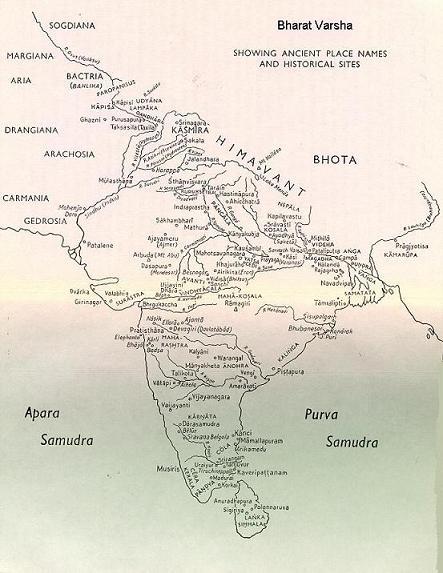
Bharat
Varsha
In
this Imperial history, India is portrayed as the land
“conquered” first by the ‘Dravidians’, then by the
‘Aryans’, later by Muslims, and finally by the British.
Otherwise, everything else is mythical. Our history books today
exhibit this obsession with foreign rule.
Even though the Mughal rule from Akbar to Aurangzeb is
about 150 years, which is much shorter than the 350
year rule of the Vijayanagaram empire, the history
books of today hardly take notice of the latter. In fact
the territory under Krishna Devaraya’s rule was much larger
than Akbar’s, and yet it is the latter who is called “the
Great”.
***
The
accepted history of no country can however be structured on
foreign accounts of it. But Nehru and
his Leftist cronies did just that, and thus
generations of Indians have been brainwashed by this falsified
history of India. The time has come for us to take
seriously our Puranic sources
and to re-construct a realistic well-founded history of ancient
India, a history written by Indians about Indians. Such a
history should bring out the amazing continuity of a Hindu
nation which asserts its identity again and again. It should
focus on the fact that at the centre of our political thought is
the concept of the Chakravartin
ideal – to defend the nation from external aggression
while giving maximum internal autonomy to the janapadas. A
correct, defalsified history would record that Hindustan was one
nation in the art of governance, in the style of royal courts,
in the methods of warfare, in the maintenance of its agrarian
base, and in the dissemination of information. Sanskrit
was the language of national communication and discourse.
In particular, it was not Hindu submission as alleged by JNU
historians that
was responsible for our subjugation but lack of unity and
effective military strategy.
(source: Fraudulent
history of India - By Dr.
Subramanian Swamy - indianrealist.com and Falsification
of Chronology in India’s History - By Dr. Subramaniam
Swamy - indiarealist.com). Refer
to Thus
Spake Professor Michael Witzel:
A
Harvard
University
Case Study in Prejudice?
and Hindus
Under Siege - By Dr.
Subramanium Swamy
p. 1 - 20.
Refer
to Hindus
Under Siege - By Dr.
Subramanium Swamy and Hindus
laud Virginia Education Department for curriculum revision
showing Hinduism appropriately
Reject
this anti-Hindu education and history
“Language
is the distillation of hundreds, if not thousands of years of
experience of a collective... So when the language disappears
you're really throwing away that whole library of knowledge.’
- Rachel
Nez, Navajo speaker
***
Apart from
de-Hinduising Hindus, Macaulayan education has distorted Hindu
religion and history. As per this education, Hindus never
resisted any foreign aggression, and they do not have any
glorious history. This education suppresses how Hindus valiantly
fought invaders for several centuries, and defended their
religion and motherland.
Sanskrit
which is the best, sweetest and divine language (bhashasu mukhya
madhura divya geervaan bharati) has been driven out of Indian
schools and colleges by Macaulay’s education. With the
exception of Tirukkural which is in Tamil, almost all ancient
Hindu scriptures like Vedas,
Upanishads, Ramayan, Mahabharat are in
Sanskrit.
The
UPA Government (headed by Manmohan Singh and Sonia
Gandhi) has succeeded in persuading more state governments to
accept the NCERT texts. A report on Monday (January 5, 2009)
said 12 more state governments have accepted to teach NCERT
texts in their schools.
Glorification
of Invaders
In his book The Story of Civilization: Our Oriental Heritage,
Will Durant (1885-1981), the American historian, calls Muslim
rule in
India
as the bloodiest story in history.
Glorification
of Invaders
***

Sonia Gandhi
and PM Manmohan Singh
The
UPA Government (headed by Manmohan Singh and Sonia Gandhi) has
succeeded in persuading more state governments to accept the
NCERT texts.
Marxists’
interpretation of Indian history is motivated, fictional,
anti-Hindu, self-righteous and objectionable. Inspired by their
anti-Hindu agenda, these sham historians fabricate history to
defend the actions of Muslim invaders.
***
As against this, history books issued by National
Council of Educational Research and Training, and written by
Marxists, glorify Muslim rule in Hindu Bharat; and downgrade
Hindu heroes like Prithviraj Chauhan, Maharana Pratap and
Chhatrapati Shivaji. These books falsify history and denigrate
Hinduism. As per these books, Ramayana and Mahabharat are mere
fictions; and Ram and
Krishna
did not exist.
Apart from acting as academic cheerleaders for terrorists, many
leftist historians are deliberately distorting history to make
it compatible with Marxism. They support the discredited Aryan
Invasion Theory, and deny the existence of ancient river
Saraswati.
Marxists’
interpretation of Indian history is motivated, fictional,
anti-Hindu, self-righteous and objectionable. Inspired by their
anti-Hindu agenda, these sham historians fabricate history to
defend the actions of Muslim invaders and rulers like Muhammad
bin Qasim, Mahmud Ghazni, Mohammad Gouri, Feroz Tughlak,
Allauddin Khilji, Taimur, Bahmanis, Babar, Aurangzeb, Nadir
Shah, and Ahmadshah Abdali. They suppress the killings of
millions of Hindus, and destruction of thousands of Hindu
temples by Muslim invaders over the centuries.
They reject the existence of glorious Hindu past. They dub their
detractors as communal, and downgrade genuine historians. And
for presenting anti-Hindu fiction as history, these fake
historians are rewarded with national and international awards,
honours and acclamations.
(source:
Reject
this anti-Hindu education and history - By
J G Arora).
The
writer is former Chief Commissioner of Income Tax.
Top
of Page
Our
Voice in History
Western
scholars condescendingly set the rules of the games
***
We
don’t quite get it, the first globalized civilization was in
India.
Academic
freedom, private funding and historical research
 “The
Indus
Valley
civilization dwarfed
Egypt
and
Mesopotamia
in area and population, surpassed them in many areas of
engineering and was aggressive in globalization 5000 years
back.” “The
Indus
Valley
civilization dwarfed
Egypt
and
Mesopotamia
in area and population, surpassed them in many areas of
engineering and was aggressive in globalization 5000 years
back.”
These are words from Andrew Lawler’s lead article in
the June 2008 issue of Science
magazine which had Indus Civilization as
the cover story.
Previously
archaeologists believed that Indus people got their ideas from
Mesopotamia and was a civilization without deep roots, but as
per new evidence, Indus evolved from the Neolithic site of
Mehrgarh in
Baluchistan
. Archaeology has also found evidence of occupation in Harappa
dating to 3700 B.C.E and in Farmana in
India
to 3500 B.C.E.
Writing
about the religious beliefs of the Indus people, Lawler mentions
that the proto-Shiva seal has fuelled speculation that the
religious tradition of
Indus
helped lay the basis for Hinduism. While there are questions to
be answered on their language, religion and form of government,
decades of archaeology has changed the image of
Indus
from a xenophobic and egalitarian society to one which was
vibrant and complex.
Though the
article was fairly balanced covering excavations in Harappa,
Baluchistan, and Kot Diji in
Pakistan
and Farmana, Dholavira, Rakhigarhi and Kalibangan in
India
, it had the usual western hatchet job, blaming Indian
archaeologists for using Hindu texts as a guide. This is a
no-no, we are told, because (a) it is inflammatory to the
Pakistanis and (b)
India
has a large Muslim population.
The
article has other issues too. Drought, as a reason for the
demise of
Indus
, is scoffed at while many other reasons, including “change in
a society that they say emphasized water-related rituals” is
offered as an alternative. The western scholars quoted in the
article themselves admit their theories are pure speculation,
but the drying up of Ghaggar-Hakra around 1900 B.C.E
is ignored, since it would involve a reference to the Rig
Veda.
As Western
scholars condescendingly set the rules of the games — a very
different one from that practised in their own research centers
— we need to evaluate what can be done. Whining about
unfairness can be cathartic, but it does not solve the problem.
Different
Standards and Inept Government
We
too should not indulge in speculative archaeology, but first Indian
archaeologists and scholars need to be unapologetic about
knowing the scriptures and using them for clues.
Sadly this
attitude cannot be taken by people who work for government
funded institutions like the Archaeological Survey of India (ASI)
and Universities. The Saraswati Heritage Project was canned by
the government since it was seen as an attempt to push the
antiquity of Indian civilization.
(If these people were around
in 1921, they would have halted archaeology at Mohenjo-daro and
Harappa which pushed the antiquity of Indian civilization by
many millennia).
Recently
the Government of India cut funding for a major Sanskrit program
in schools because - it is getting tad repetitive -
India
has a large Muslim population and there was a fear that it would
instill religious and cultural pride among students. In such an
atmosphere, it would be naive to expect the government
to lead
the battle in understanding our history. Instead of wasting time
writing letters to ministers, we might be better off digging in
our own backyard for Painted Grey Ware.
Colonial politics is still
alive and any divarication is branded as nationalism.

An Inept
Indian government - The Saraswati Heritage Project was canned by
the government since it was seen as an attempt to push the
antiquity of Indian civilization.
If these people were around
in 1921, they would have halted archaeology at Mohenjo-daro and
Harappa which pushed the antiquity of Indian civilization by
many millennia.
***
The second
problem is mentioned in the Lawler’s article itself. Indian
archaeologists have done excellent work, like R.
S. Bisht
in Dholavira and Vasant Shinde
in Farmana, but they are slow to
publish and collaborate. Bisht’s work has revealed
“monumental and aesthetic architecture, a large stadium and an
efficient water-management system”, but has largely been
unpublished. The lack of data from people who had first access
to the location helps in sustaining myths about the
civilization.
Solutions
There is an urgent need to
create institutions where scholarship is free of bureaucracy and
political interference. One such institution — the Indus
Heritage Center — funded by the Global
Heritage Fund is coming up in Vadodara. Besides starting a
Smithsonian class center in
India
, the center also plans to popularize the findings of
Deccan
College
, the Department of Archaeology of Maharaja Sayajirao University
of Baroda and the Archaeological Survey of India.
There have been xenophobic
comments regarding this institution due to the involvement of
western professors, even though the professors don’t believe
in the Aryan Invasion theory. The fear is that they will be
applying western frameworks on our history resulting in
misinterpretation.
But instead of complaining
about west, it is time we adopted some of their techniques for
popularizing history. Building a Smithsonian style museum is an
insuperable problem for the cash strapped ASI
which can barely manage the monuments under its care. The
Indus
Heritage
Center
model where private donors in association with various colleges
build research centers in which native interpretation of history
can happen should be considered. Right now there are few sincere
individuals who are involved in correcting Western biases; their
efforts are exemplary but not sufficient to make an impact.
 Past
many decades of research have found no archaeological evidence
for the Aryan Invasion theory. It has been discredited through
genetic research as well. The demise of
Indus
valley is understood to be due to hydrological changes. Past
many decades of research have found no archaeological evidence
for the Aryan Invasion theory. It has been discredited through
genetic research as well. The demise of
Indus
valley is understood to be due to hydrological changes.
Still, pick
up a book like Karen Armstrong (1946
- ) The
Great Transformation: The Beginning of Our Religious Traditions,
which is used as text book in graduate courses, and you will
find that colonial politics is still
alive and any divarication is branded as nationalism.
One
Indus
Heritage
Center
cannot change such entrenched ideas. To give the megaphone to
differing voices, more Indus Heritage Centers which are
financially secure are required. This dovetails into the larger
debate about the need to free higher education and research from
government control and facilitate an atmosphere where private
capital can provide funding. With such freedom, scholars would
be able to delve into research as they see fit, instead of
surrendering to artificial political fears.
Five
thousand years back our ancestor living in the
Indus
Valley
sailed across the vast
Arabian sea
in reed boats with cotton sails and made the best of the Bronze
age globalized world. It would be a shame, if we did not show
even a fraction of their ingenuity in making our voice heard in
a debate about our history.
(source: Our
Voice in History - By
Jayakrishnan Nair - varnam.org).
Top
of Page
The
Aryan myth in perspective - History, science and politics
From
its inception, this modern concept of "race" was
modeled after an ancient theorem of the Great Chain of Being,
which posited natural categories on a hierarchy established by
God or nature. Thus "race" was a mode of
classification linked specifically to peoples in the colonial
situation. It subsumed a growing ideology of
inequality devised to rationalize
European attitudes and treatment of the conquered and enslaved
peoples. Proponents of slavery in particular during
the 19th century used "race" to
justify the retention of slavery. The ideology
magnified the differences among Europeans, Africans, and
Indians, established a rigid hierarchy of socially exclusive
categories underscored and bolstered unequal rank and status
differences, and provided the rationalization that the
inequality was natural or God-given. The different physical
traits of African-Americans and Indians became markers or
symbols of their status differences.
As
they were constructing
US
society, leaders among European-Americans fabricated the
cultural/behavioral characteristics associated with each
"race," linking superior traits with Europeans and
negative and inferior ones to blacks and Indians. Numerous
arbitrary and fictitious beliefs about the different peoples
were institutionalized and deeply embedded in American thought.
(source: AAA's
Statement on Race).
***
To a historian of science,
there is a remarkable similarity between the attitudes of
theologians in Galileo’s time and of philologists and
anthropologists in our own. They cannot accept the fact that the
very foundation of their discipline—not just the Aryan
invasion theory—has collapsed. Natural history and genetics
have demolished their theories as well as their methods. And
like Galileo’s adversaries, they too have chosen to resort to
politics and propaganda, though the forces they invoke lack the
authority of the Church in Galileo’s time.
A
Racist Myth that refuses to die
When
judged by evidence and logic, the various Aryan theories,
especially the Aryan
invasion theory (AIT) must be regarded one of the
weakest intellectual exercises in recent history— an
intellectual failure of the first magnitude. But if longevity
and capacity for survival are measures of success, then the
Aryan myth—it is hardly a theory—must be counted among the
most successful.
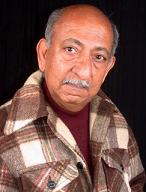 It
is now more than a century since the Aryan Invasion Theory (AIT)
made its way into history books and encyclopedias the world
over, as the basis for the history of ancient
India
and the source of the Vedic civilization. Though linguistic in
origin, the climate in which it evolved—dominated by British
colonialism and German nationalism—ensured that it soon
acquired a political and even biological form, giving rise to
such notions as the Aryan race and the Aryan nation. Government
departments in
British India
like the Anthropological Survey mixed up physical appearance and
character traits and made it a tool of divide and rule. It
is now more than a century since the Aryan Invasion Theory (AIT)
made its way into history books and encyclopedias the world
over, as the basis for the history of ancient
India
and the source of the Vedic civilization. Though linguistic in
origin, the climate in which it evolved—dominated by British
colonialism and German nationalism—ensured that it soon
acquired a political and even biological form, giving rise to
such notions as the Aryan race and the Aryan nation. Government
departments in
British India
like the Anthropological Survey mixed up physical appearance and
character traits and made it a tool of divide and rule.
Because of its European origin and orientation, there were
attempts to shift the origin of the Vedic Civilization and its
language to sources in lands closer to
Europe
. This gave rise to an academic discipline called Indo-European
Studies, devoted to exploring the origin of Europeans, their
language and culture. A major result of this approach has been
to make
India
and its culture including the Vedas to
be of non-Indian origin. The Aryan invasion (or
migration) has been the lynchpin of this discipline.
While the defeat of Nazi Germany
and end of European colonialism
put an end to the political needs of these theories, they have
survived in Western academia because of the heavy investment
that scholars have made in Indo-European studies. Recent
findings in science, particularly in population genetics have
delivered a mortal blow to the Aryan Invasion Theory. This has
led its proponents to resort to propaganda and political
lobbying to save it by overturning scientific and historical
facts.
This campaigning, like during the recent controversy over the
revision of California schools
curriculum, is only the latest manifestation of the
kind of struggle that is waged whenever new discoveries
overthrow old ideas. The most famous of these took place in the
time of Galileo. In the end, the supporters of Indo-European
studies are no more likely to succeed than Galileo’s
opponents, who too had the support
of powerful political and religious interests.
Ultimately, it is truth not personalities that will prevail
though the battle for truth is likely to be prolonged. It is
best to take a long-term view and prepare the ground for a new
generation of researchers.
It [Aryan invasion theory] gave a historical precedent to
justify the role and status of the British
Raj, who could argue that they were transforming
India for the better in the same way that the Aryans had done
thousands of years earlier.
 That
is to say, the British presented
themselves as a ‘new and improved brand of Aryans’
that were only completing the work left undone by their
ancestors in the hoary past. Today it
is sustained by ‘special interests’ rather than special
conditions that no longer exist. These new interests
include political chauvinism in
India
and the survival of Indo-European studies as a discipline in
Western academia. It is only a matter of time before this
vestige of colonial politics disappears from the scene making
way for a more objective approach to the study of ancient
India
. This is already happening. In the interim, the kind of dispute
and controversy witnessed in
California
are only natural. That
is to say, the British presented
themselves as a ‘new and improved brand of Aryans’
that were only completing the work left undone by their
ancestors in the hoary past. Today it
is sustained by ‘special interests’ rather than special
conditions that no longer exist. These new interests
include political chauvinism in
India
and the survival of Indo-European studies as a discipline in
Western academia. It is only a matter of time before this
vestige of colonial politics disappears from the scene making
way for a more objective approach to the study of ancient
India
. This is already happening. In the interim, the kind of dispute
and controversy witnessed in
California
are only natural.
The seriousness of this struggle for survival of this academic
discipline, and its practitioners cannot be underestimated. This
existential fear is what is behind the desperate actions
bordering on the bizarre of some
Western Indologists
, notably the Harvard Indologist
Michael Witzel and his colleagues.
On the scientific side, the emergence of molecular biology and
the growth of population genetics in the second half of the
twentieth century have delivered the coup de grace to this
pseudo-discipline. The story that science has to tell us is very
different from what had been believed for well over a century
(source: The
Aryan myth in perspective - History, science and politics -
By N
S Rajaram). For more refer to
The
Alleged Massacre at Mohenjo-daro - indianrealist.com. Watch
video - The
Myth of Aryan invasion theory - Part I and Part
II and Part
III and Myth
of Aryan Dravidian Divide and Dwaraka
- A Lost City of Lord Sri Krishna.
Refer
to Communist
Historians: The Enemy within -
indianrealist.com.
Top
of Page
Stop
political abuse of History
***
Dr
S.R. Rao is the foremost marine archaeologist, who discovered
the submerged city of
Dwarka
of Sri Krishna, off the coast of Kutch, in Gujarat, which is
considered to be the greatest archaeological discovery in
independent India.
 According to Dr S.R. Rao, SSCP has violated all international
norms and conventions for saving underwater cultural heritage, a
mandatory for every maritime member to “list, preserve and
protect all underwater cultural sites.” According to Dr S.R. Rao, SSCP has violated all international
norms and conventions for saving underwater cultural heritage, a
mandatory for every maritime member to “list, preserve and
protect all underwater cultural sites.”
How
did you discover the city of
Sri Krishna
?
There was a modern building that was obstructing an ancient
temple. It was then we decided to demolish the modern building.
Underneath we found an ancient temple which led to subterranean
steps that led to steps covered with mud. When we got them
cleaned up, they led to passage that led to the seacoast and a
port, which when probed led to the greatest discovery in the
archaeological history—the discovery of submerged Dwarka city.
On one side of the city was four kilometers long wall with a
complete port and storage area, warehouse, and weighing stones
that are completely intact for holding the ships from drifting
away.
Are
there any international conventions to save underwater heritage?
I represented
India
and drafted the UNESCO charter in the convention for saving the
underwater heritage. When I last checked, only six nations had
signed the treaty.
India
as a responsible member of UNESCO must sign this convention as
we have the richest reserves in marine archaeology and signing
the convention will help get international funds allocated to
“list, preserve and protect underwater cultural heritage”.
As a responsible member of the United Nations India must sign
the UNESCO charter for preservation of our underwater heritage
and
India
should not shy away in this regard.
Can
you explain the full details of the convention that you chaired?
Yes. I have the journal of marine archaeology volume 7 and 8
pages 66 and 68 published in 1988 which state among other things
definition of underwater heritage, list them and describe ways
and means to preserve and protect them. The rate of erosion by
violent sea is so aggressive that when we excavated in Poompuhar
we found brick walls of ancient city mentioned in Tamil
literature.
What
caused the destruction of the city?
Right from Ennore near Chennai if you travel down
south, Mahabalipuram, Tarangambadi to Poompuhar, this belt has
been historically known for violent seas, cyclones and sea
erosion. We have experienced one of the most violent seas. A
temple can be found taken away by the sea in Ennore, and another
Shiva temple can be found submerged at Tarangambadi. The rate of
erosion is not what it was even 8 to 10 years ago, it is very
rapid. Off the coast of
Poompuhar
four km wide into the sea the entire city mentioned in
Silapadigaram was located and also a long brick wall of the port
mentioned in the Tamil classic. I myself have been diving for
over 15 years in the underwater expeditions off the coast of
Gujarat
, Poompuhar and Mahabalipuram.
The Kannagi statue installed on the seacoast had to be shifted
10 meters by the government to save it from sea erosion some
years ago. If this being the case it is Ram
Sethu that is acting as natural
barrier and now saving the southern Tamil Nadu from
the violent sea. If this is damaged all
hell will break loose. (Refer to chapter on Glimpses
XIX).
Poompuhar was a very important
port and was very extensive of Sangam period but got submerged.
What about Ramayana which was even earlier and several thousands
of years older? It is absolutely certain that it is historical
and of mythological importance. The sea in the western coast of
India
is not that violent but the eastern coast has been facing one of
the most violent seas as we have encountered in our underwater
expeditions. Hence this region contains the richest
archaeological heritages of the world.
Some
researchers say there are so many such sites—as much as 20,000
in the world—and what is the definition of a underwater site?
The definition of the underwater cultural heritage should
cover objects of archaeological interest. It should also cover
sites and landscapes which are of great importance for
understanding of our history. If the site of the naval battle of
Salam’s (BC 480) and a recent 100-year-old Titanic (sunken
luxury liner) could be mentioned as landscape sites then the
protection should not only be guided by archaeological and
historical interest but also by the need to preserve information
about a site even if nothing is recovered from it. The chairman
of the international convention stressed on the need to protect
sites of mythological significance to traditional communities as
non-human heritage. Everything dating back from before the 20th
century should be protected. It was also observed that there is
no such thing as a time limit to archaeology.
(source: Stop
political abuse of History - haindavakeralam). Refer
to Did
the Vedas get Written around 1200 BC? Says Who? -
indianrealist.com
Top
of Page
Writing
Politically correct history: Award
diplomacy of the Whites
Evangelical
West's
Neo colonial Sepoys
***
The
wise may arraign or applaud
Wealth may flow in or vanish
as it will,
Death may occur today
or when the epoch ends
The steadfast never stray
from the path of righeousness
- written in Sanskrit by Bhartrihari
in
Nitishatak
***
Romila Thapar’s Kluge Prize

Sir
(Dr) Sarvepalli Radhakrishnan
(1888-1975) was one of the most profound
philosophers of this century,
author and educationalist. In
1926, he was deputed by Calcutta University as the university
delegate to the Congress of the Universities of the British
Empire. He was elected Fellow of the British Academy in 1940,
first Indian to be thus honored.
He succinctly said:
“The West tried its best to
persuade India that its philosophy is absurd, its art puerile,
its poetry uninspired, its religion grotesque and its ethics
barbarous”.
***
The colonial era of Indian history
was an era of historical
myth-making. Innumerable myths were
created and propagated to falsify history with a view to change
Indian psyche and denationalize
Indian identity.
A.
K. (Anthony Kennedy) Warder
is a scholar of Indology, mostly in Buddhist studies and related
fields, such as the Pāli and Sanskrit languages. He has
written 15 books and numerous articles. He currently holds the
title of Professor Emeritus of Sanskrit in the School of East
Asian Studies in the University of Toronto. Writing years after
Independence, he notes:
“The
standard imperialist version of Indian history, worked out
during the colonial period, is now, most remarkably, taken for
granted among modern Indian historians of almost all
persuasions, not least among them the ‘Marxists’ (who in
this respect remain Hegelians; S. A. Dange is an honourable
exception), as well as among academic historians in all other
countries, again regardless of political persuasions.”
(source:
Contending
paradigms of Indian history: Did India lack historical agency?
- By Shivaji Singh).
Refer
to Invading
the Sacred: An Analysis of Hinduism Studies in America
- By Krishnan Ramaswamy, Antonio de
Nicolas and Aditi Banerjee.
Refer to Romila
Thapar's BS - By Seriously Sandeep and Interview
with Romila Thapar - varnam.org.
Romila
Thapar has been awarded the Kluge Prize for Lifetime Achievement
in the Study of Humanity for ostensibly creating “a new and
more pluralistic view of Indian civilization, which had seemed
more unitary and unchanging, by scrutinizing its evolution over
two millennia and searching out its historical consciousness”.
Thapar’s US Congressional acclamation seeks to validate a
blatantly provocative, uni-dimensional and ideologically extreme
view of India’s past, espoused mainly by its Stalinist fifth
column, assorted Islamist Jihadis and militant Christian
evangelists. The Kluge Prize selection committee might have
imposed a simple test on Thapar by requiring her to present
examples of two positive statements that she has composed on the
Hindu past in her entire career. Instead what the decision of
the Kluge committee suggests is racial arrogance, contempt for
Hindu sensibilities and the malign influence of a powerful
Bostonian non-Hindu Indian, infamous for campaigns belittling
Hindu suffering. The award resoundingly reaffirms a deep
American animus against Hindu India that has been a constant
feature of US foreign policy towards it since independence. It
was this vicious hatred and a half-baked strategic calculus that
prompted US support for the perpetration of Pakistan’s
genocide in East Pakistan in 1971.
Stalinist hatchet job of
disinformation on Indian History
This
award will satisfy the evangelical constituency that wishes to
extirpate Hinduism and the Islamic Jihadists who assert
historical legitimacy for their claims to imperial dominion over
India and regularly pursue it by murderous ventures that emulate
Nazi pogroms against Jews and Slavs.
***
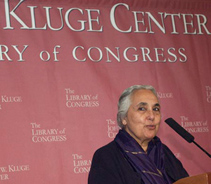


Indian
historian Romila
Thapar, Librarian James Hadley Billington and Billionaire John
Kluge.
Most mainstream Hindus find Romila Thapar’s
interpretation of ancient Indian history grossly disingenuous
and thoroughly objectionable. Indeed a large number of Hindus
regard her as a deeply mendacious enemy of Hindus. Romila Thapar’s infamous patronage of the
discredited Aryan invasion theory always had an Islamist
rationale as well. And she herself also makes a disgracefully cavalier
accusation against the distinguished K. M. Munshi of an attempt
to revive the Hindu Aryan (sic!) past for his endeavours to
restore Somnath Temple.
She loftily declined the native Padma
Bhusan, but a
million dollar prize, effectively the same kind of state award
she found unpalatable, from the racist sponsors of mass murder
is apparently another matter.
It
is no surprise to see that Romila Thaper recieved a Kluge prize
for her work which undermines Hindu Civilization. The
library of Congress librarian, James H. Billington
has impeccable evangelical
credentials
and he had the final say in choosing the awardee. Billington is
on the Board of the Center for
Theological Inquiry (Theology
Today)
and was long time advisor for Theology Today. His daughter Susan Billington
Harper who works for Pew
Charitable Trust
is author of a book on Anglican
Bishop V.S. Azariah. Instead of getting
awed by these awards these awardees should be looked at as neo
colonial sepoys.
***
Most mainstream Hindus find
Romila Thapar’s interpretation of ancient Indian history
grossly disingenuous and thoroughly objectionable. Indeed a
large number of Hindus regard her as a deeply mendacious enemy
of Hindus. She and her genocidal Stalinist associates
studiously and maliciously ignore the immense suffering of
Hindus as a result of successive Islamic invasions and the
brutal rule of violent iconoclasts. It represents an example of
holocaust denial that has been sedulously promoted by British
imperial deceit and US Cold War aims. The indiscriminate killing
of the old, the very young, the systematic rape of girls, boys
and women, the destruction of places of worship (eliminating
most major Hindu temples in north India), mass slavery and loot
are a bitter reality denied, though subsequently echoed in
Constantinople, Buda and countless defeated cities. It
begs the question whether such a prize would have been awarded
to an historian of the Jewish, Christian or Islamic faiths if
the pedagogue was so viscerally repugnant to a significant
number of the faithful of these communities. I think not,
logical profundity and all artifices about intellectual freedom
notwithstanding.
It is only in India that a historian without
adequate command of Sanskrit
can claim expertise on its ancient past right across its entire
length and breadth.

It
is only in India that a historian like Romila Thapar, without adequate command of
Sanskrit can claim expertise on its ancient past right across
its entire length and breadth.
***
Social status is all that counts in feudal India,
a feature on display in virtually every aspect of its social
life and all that is required to silence disbelief. In
a pathetic attempt to apply deep thought to Mahmud of Ghazni’s
invasions of India, Romila Thapar piles one speculation upon
another, fabricating motives and thought processes with abandon.
She writes as if she had been a contemporary of the conqueror,
priests and participants in major historical events over several
centuries. She turns notions of scepticism in judging historical
evidence on their head. Her personal authority becomes the only
referent for increasingly wild assertions! There is no scholar
of ancient Europe or any other part of the world that would dare
advance ludicrous claims to expertise without command of the
relevant languages and usually over a modest geographical
expanse. The likes of Fernand Braudel and Chris Wickham are very
rare indeed and Romila Thapar might wish to consult their
historical oeuvre in penance for a multitude of sins.
A
central purpose of her banal lifetime agenda has been to
legitimise the destruction of Somnath by Mahmud of Ghazni.
According to Romila Thapar, he was motivated purely by greed, a
secular impulse that supposedly erases any iconoclastic
religious rationale. One startling claim she also appears to
make is familiarity with supposedly extant corroborative Persian
and Turkish sources on his lack of religious conviction,
presumably the pre-Kemalist script in which even few
contemporary Turks claim to read, though it is Sanskrit she
really needed to bone up on. Much the same can be said of her
sturdy defence of Aurangzeb’s iconoclasm, asserting secular
political motives for the destruction of the Kashi Viswanath
temple (and countless others) and the erection of a mosque in
its place. Her JNU colleagues indulge in even more bizarre
fantasies, such as imperial sanction against the temple for the
abduction of some local princess though the evidence adduced is
miraculously fictitious. This is the stuff of undergraduate
student union debates and all that she and her execrable
Stalinist JNU colleagues are able to conjure in old age.
There is hysterical denial that any Muslim ruler was ever loyal
to his faith and followed the Prophet’s iconoclastic example.
By asserting robbery as the principal motive in every
significant instance of temples being destroyed they end up in
the unenviable position of having to explain why there is so
much discussion about division of the spoils of conquest in the
numerous wars of Jihad waged by the Prophet himself? The
delicious paradox of this assertion, which dear Romila has not
evidently thought through, is that Islam, if they are correct in
their imputation of robbery as the only significant motive for
its imperial expansion, is merely about theft and the recourse
to the Almighty Allah a ruse! She is proposing, in effect, that
Muslim Jihad against infidels was not inspired by their
religious faith at all and they were only out to rob and
pillage.
But why this extraordinary insight should have
reassured the victims of robbery, murder and mayhem is a matter
she obviously cannot comprehend. Quite clearly, common sense is
at a premium since it would have dictated that religious
motivation and desire for loot have always co-existed in most
imperial expansions.
Romila Thapar’s infamous patronage of
the discredited Aryan invasion
theory always had an Islamist
rationale as well. By maintaining, on the basis of grotesque
colonial historical misrepresentation, and its subsequent
validation by the Nazi ideologue Alfred Rosenberg, that
contemporary Hindu upper castes were invaders she sought to
grievously injure the legitimacy of India’s entire Hindu past.
What she was effectively arguing was that racist
invaders had subjugated indigenous Indians in the
past and casteist Hinduism was their ideology. By inference,
later Islamic invasions were no more remarkable since they were
merely successors to a well-established pattern of invasions. Of
course, for India’s venal Stalinists Islam represented
liberation since it was monotheistic and preached equality. That
it guaranteed sexual slavery for women and death (enslavement
after every conquest) to those who resisted conversion to Islam
was a quirk in the prescription of Islamic equality that escaped
tortured Stalinist logic. Even now contemporary India heaves
with the distorted logic of this colonial historical
intervention, which is being used to justify social pogroms
against alleged upper caste oppressors no matter how deprived
many of them may be and by communities that wield significant
economic and political power in India now. Truly, such
deep-rooted malice underpinned the eventual extermination of
European Jewry. The fact that the Aryan invasion theory lies in
tatters has only prompted the devious reworking of its original
formulation by her. The blatant Islamist and Christist
demonization of alleged upper caste oppression has now been
artfully re-phrased by transmuting invasion into immigration, a
parallel to the historic libel against Jews of poisoning wells,
to renew the charge of illegitimacy against upper caste
villains.
She breezily speaks of truth in
historical writing, imagining that all her critics are fools who
cannot conceivably be aware of a well-worn professional
discussion on the contestable nature of historical truth and
partisanship in historical scholarship. Some of them are also
familiar with the work of historians of greater professional
distinction than Romila Thapar and infinitely superior
intellectual integrity, who have written rather differently on
ancient and medieval India.. In her case, what stands out
resoundingly, again and again, is a determination to vindicate
every aspect of Muslim rule over Hindus and celebrate their most
egregious crimes or ignore them altogether with breathtaking
impudence?
In this context, it is not
ancient India in which she proclaims expertise, but any period
requiring the usual Stalinist
hatchet job of disinformation. And
it is for this highly politicised defence of Islamic rule over
India that a Christian America, steadfast friend of Islamic
Jihad against it, is rewarding a sworn enemy of the Hindu
people. Mahmud, Timur, Aurangzeb, Nadir
Shah and the Abdali killers
ought to feel refreshed with the taste of the blood of hundreds
of thousands of Hindu men, women and children even as they find
an honourable place at Allah’s table.


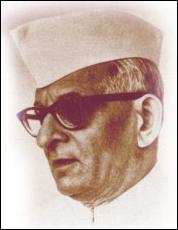
Eminent
Historians R C Majumdar, Sir
Jadunath Sarkar and K M Munshi.
Such is the audacity of Thapar and these second-rate
Stalinists that profound ontological and epistemological
differences with historians of the stature of R. C. Majumdar and
Sir Jadunath Sarkar are evaded by merely accusing them of
communal Hindu methodology.
The eight volume History of India, as told by its
own historians, compiled by Eliot and Dowson, is also damned by
imputing partisan motives though their contents are not
uniformly damaging to Islam, yet highlight enough evidence of
despoliation to prompt their blanket denouncement by India’s
fifth column. And she herself also makes a disgracefully
cavalier accusation against the distinguished K. M. Munshi of an
attempt to revive the Hindu Aryan (sic!) past for his endeavours
to restore Somnath Temple.
***
Such is the audacity of Thapar and these second-rate
Stalinists that profound ontological and
epistemological differences with historians of the stature of R.
C. Majumdar and Sir Jadunath Sarkar are evaded by
merely accusing them of communal Hindu methodology. The eight
volume History of India, as told by its own historians, compiled
by Eliot and Dowson, is also damned by imputing partisan motives
though their contents are not uniformly damaging to Islam, yet
highlight enough evidence of despoliation to prompt their
blanket denouncement by India’s fifth column. And she herself
also makes a disgracefully cavalier accusation against the
distinguished K. M. Munshi of
an attempt to revive the Hindu Aryan (sic!) past for his
endeavours to restore Somnath Temple.
Yet, these fifth columnists
never detect such base motives in the reams of diabolical
contemporary Islamic and Christian hate literature used
incessantly to insult Hindu sensibilities in their own homeland.
This is a tradition that dismisses those who disagree with them
as communal, the pronouncement of an auto da Fe to paralyse
them.
Her alleged expertise on ancient India is a badge
deployed for typically cynical Leftist aims of aggrandisement,
marked by opportunistic alliances and complicity in genocide
that has usually ended in historical oblivion. But much blood
will first be spilt and on a scale that would make any
bloodletting specifically sponsored by Hindus, with all the
enormous caveats that signification ought to imply, a few mere
commas compared to the respective histories of genocide wilfully
engaged in by Islam and Christianity. Romila
Thapar belongs to the cynical tribe of Indian Stalinists who
thrive by self-righteousness, which in the Indian context bears
a familial resemblance to the racial supremacy that Europeans
once openly declared and now quietly assert.
Basically, it is divide-and-rule by mobilising every division
and fissure amongst the non-whites to their advantage and the
use of sophisticated media brainwashing techniques that
simultaneously affirm equality while ensuring racial hierarchy.
The noble campaign against tradition and ignorance melds
effortlessly with the depravity of the masters of the universe,
eagerly delivering incendiary tonnage on Afghan wedding parties
and Iraqi schoolchildren. But the clamorous natives are forever
at the door, resentful, gross and uninitiated in the mores of
cosmopolitan sophistication. And their imperfect command of the
English language is a weapon used against them, to criminalize
their ignorance and question their humanity.
But nothing can be allowed to stand in the way of progress, the
logical summit of which the great theorists Mark
Horkheimer (1895 –1973) and Theodor W.
Adorno noted was ascended in the gas
chambers of the same civilisation that produced
Goethe and Beethoven.
The sordid outcome of the Kluge prize
for Romila Thapar is an attempted validation of the intellectual
genocide against Hinduism. And the Indian Stalinist
anti-colonial rant evaporates the moment their aircraft
approaches the American shoreline. As a fully paid up
member of India’s deracinated upper crust, Romila
Thapar loftily declined the native Padma Bhusan, but
a million dollar prize, effectively the same kind of state award
she found unpalatable, from the racist sponsors of mass murder
is apparently another matter.

Dr.
Sarvepalli Radhakrishnan (1888-1975)
was one of the most profound philosophers of this
century, author and educationalist.
The real high-minded tradition
examining the Hindu past represented by the noble
efforts of many like Sarvepalli Radhakrishnan were not
on the Kluge radar.
***
The real high-minded tradition
examining the Hindu past represented by the noble
efforts of many like Sarvepalli Radhakrishnan were not
on the Kluge radar. It will satisfy the evangelical
constituency that wishes to extirpate Hinduism and the Islamic
Jihadists who assert historical legitimacy for their claims to
imperial dominion over India and regularly pursue it by
murderous ventures that emulate Nazi pogroms against Jews and
Slavs. It is Romila Thapar who is their intellectual mentor and
Kluge has emphatically joined the same genocide chorus. The
con-joining of the name of historian Peter Brown for the Kluge
prize on the same occasion is a cause for mourning since this
great scholar has done so much to advance our understanding of
the ancient world, with insight that testifies to profound
scholarship and elegance that is enviable.
(source: Romila
Thapar’s Kluge Prize – By Dr. Gautam Sen -
vigilonline.com). Dr.
Gautam Sen Taught for more than two
decades and at the London School of Economics and now writes on
international political economy.
Top
of Page
Endorsing
Racist Aryan Invasion Theory: Award
diplomacy of the Whites
Indian
historian Romila Thapar gets 2008 Kluge Prize
Sir
Vidiadhar
Surajprasad Naipaul
(1932 - )
Nobel Laureate, was born in Trinidad into a family of Indian
origin is known for his penetrating analyses of alienation and
exile. Writing with increasing irony and pessimism, he has often
bleakly detailed the dual problems of the Third World: the
oppressions of colonialism and the chaos of post-colonialism.
His grandfather had emigrated there from India as an
indentured servant.
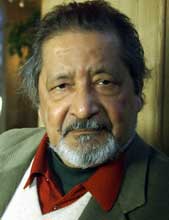 He
is the author of several books including Beyond
Belief: Islamic Excursions Among the Converted Peoples, India:
A Wounded Civilization,
Among
the Believers: An Islamic Journey,
India:
A Million Mutinies Now. He
is the author of several books including Beyond
Belief: Islamic Excursions Among the Converted Peoples, India:
A Wounded Civilization,
Among
the Believers: An Islamic Journey,
India:
A Million Mutinies Now.
He
has observed:
“
India
has been a wounded civilization because of Islamic violence:
Pakistanis know this; indeed they revel in it. It is only Indian
Nehruvians like Romila Thapar who
pretend that Islamic rule was benevolent. We should
face facts: Islamic rule in
India
was at least as catastrophic as the later Christian rule. "
"The
Christians created massive poverty in what was a most prosperous
country; the Muslims created a terrorized civilization out of
what was the most creative culture that ever existed.”
***
Indian
historian Romila Thapar was Thursday conferred the
2008 Kluge Prize by the United States Library of Congress for
lifetime achievement in the Study of Humanity. Emeritus
professor of history at the
Jawaharlal
Nehru
University
in
Delhi
,
India, Thapar is the seventh recipient of the award. She will share
the prize money of USD 1 million with Peter Robert Lamont Brown,
professor of history at
Princeton
University
.
 Since the last decade or so (ever since the BJP emerged as a
serious contender for ruling India), the Westerners have adopted
a calculated strategy to raise the profile of all Indian
communist fellow travellers and make them famous or respectable
by giving them awards on one pretext or another. Their objective
is to ensure that the national discourse in
India
remains dominated by leftists and communists (as it has been
since the time of J.L. Nehru) and is not allowed to veer toward
the right end of the spectrum. Showering awards on Indian
leftists and communists, and thereby increasing their importance
within
India
, is how they are achieving this. The award diplomacy of the
Whites has become more shrill and blatant in the last five years
or so. It is as if they are almost in a panic.
Since the last decade or so (ever since the BJP emerged as a
serious contender for ruling India), the Westerners have adopted
a calculated strategy to raise the profile of all Indian
communist fellow travellers and make them famous or respectable
by giving them awards on one pretext or another. Their objective
is to ensure that the national discourse in
India
remains dominated by leftists and communists (as it has been
since the time of J.L. Nehru) and is not allowed to veer toward
the right end of the spectrum. Showering awards on Indian
leftists and communists, and thereby increasing their importance
within
India
, is how they are achieving this. The award diplomacy of the
Whites has become more shrill and blatant in the last five years
or so. It is as if they are almost in a panic.
To be
eligible for Western awards, Indians have to meet some
essential conditions: (i) You should be a certified ‘Jholawala’
(leftist / commie fellow traveller) or a part of the
fully Anglicised Indian elite which looks outside the
borders of
India
for inspiration. (ii) You should be hostile to Hinduism and
any kind of native nationalism, and nurse a rabid hatred of
so-called “Hindu nationalists.” (iii) All your works should
be in English. (None of the Indian languages is recognised by
the Gora sahibs.) (iv) You should actively sympathise with
Indian naxalites or Maoists and agree with their ideology, if
not their methods.
There is a
whole battalion of such much-awarded brown specimens
running around in India, from looney leftists such as Praful
Bidwai to “historians” such as Romila Thapar to writers such
as Arvind Adiga and Suzanna Arundhati Roy
(who never mentions her Christian first name) to alleged social
activists such as Sandeep Pandey to Maoist sympathisers such as
Binayak Sen to a gang of Indian communists residing in the
US and operating from American universities, such as Angana
Chatterji.
Show
me an Indian leftist / fellow traveller and I will show you the
Western award he / she has received. Most of these people are in
the area of humanities (the den of communists anywhere in the
world). They are full-time commentators on everything happening
under the sun. They are also writers, historians and social
activists. Some of them carry nonsensical designations such as
“facilitator of inter-faith dialogue” or hide behind labels
of human rights which give them a wide leeway to operate.
Most
of the leftist Elite Indians chosen for these awards are
self-alienated from the salt of the land.
They are
seditious and hostile to the idea of
India
as it exists today. They have contempt for democracy and call it
“tyranny of the masses” or “majoritarianism.” Instead,
they are working toward their vision of
India
shedding democracy and becoming some kind of utopia built upon a
foundation of Marxist “egalitarianism.” They inhabit a
cuckoo-land that exists only in their own minds. This suits the
Whites just fine, thank you.
So
what is the reason behind this recent marriage of Whites
with Indian fellow travellers? What are the Westerners trying to
achieve with nurturing Indian communists in American
universities and raising their profile by showering awards on
them almost every month? The real motive is quite sinister. It
is to push
India
toward a Maoist takeover. Sounds radical? It won’t if
you consider what has happened in
Nepal
, how the
Nepal
king was taken out and who got arrested for air-dropping
truckloads of arms over Purulia. Through
the Maoists, the CIA wants to cook the goose of a rising
India
which may pose a threat to the hegemony
of Western civilisation in another 30 years or so,
while the church wants to use Maoists to purge vast tracts
of
Central India
of Hinduism and eliminate Hindu religious leaders operating in
these areas. The Maoist belt running from Andhra Pradesh to
Orissa to Chattisgarh to Jharkhand to Bihar to
Nepal
is actually a Christian belt of recent
converts who are being quietly radicalised by the
Church and CIA, according to their time-tested strategy of “first
convert and then arm the converts.”
Americans
have already practised in
Latin America
this strategy of engineering Maoist revolutions to destablize
peaceful countries. Now, it seems they have begun to use
the same strategy for
India
. Westerners are scared of
India
becoming a militarily strong capitalist country grounded in
Hindu nationalism. At no cost will they allow this to happen.
Their solution is to push
India
toward a domination by the leftists and communists.
 The
latest Romila Thapar award has a history behind it. Most Indians
of non-leftist persuasion were enraged when she was
appointed the first holder of the Kluge
Chair in Countries and Cultures of the South at the Library of
Congress. A campaign was run against her by such
Indians and a petition
signed by hundreds of people was sent to the Library
of Congress. Promptly, some fellow travellers such as Praful
Bidwai (he is also much awarded by the whites) jumped
to her defence. He even graced the rabidly leftist “Frontline”
magazine with an article about the issue. The
latest Romila Thapar award has a history behind it. Most Indians
of non-leftist persuasion were enraged when she was
appointed the first holder of the Kluge
Chair in Countries and Cultures of the South at the Library of
Congress. A campaign was run against her by such
Indians and a petition
signed by hundreds of people was sent to the Library
of Congress. Promptly, some fellow travellers such as Praful
Bidwai (he is also much awarded by the whites) jumped
to her defence. He even graced the rabidly leftist “Frontline”
magazine with an article about the issue.
The
Americans feigned ignorance about the whole matter and denied
having received the signed petition against Thapar’s
appointment. Now, five years later, Romila Thapar has been given
this Western award. Whom are
the Americans fooling? We understand what they
are trying to do to
India
. Indians should learn to flush their Western awards down the
toilet and be wary of people in their midst who owe their fame
and prominence only to these awards.
(source:
Awards
diplomacy of the Whites- indianrealist.com).
Top
of Page
Vatican owes us an apology
His Majesty the king has ordered that there shall be
no Brahmins in his land and that they should be banished.”
“In the name of his
Majesty I order that no Hindu can or shall perform
marriages…”
“The marriages of the
supplicants are superstitious acts or functions which include
Hindu rites and ceremonies as well as cult, adoration and
prayers of Hindu temples…”
“I order that no
Hindu temples be erected in any of the territories of my king…
and that Hindu temples which already have been erected be not
repaired…'
***
Anybody familiar with the brutalisation
of Hindu customs and practices, indeed Hindu faith
and belief, could mistakenly believe these extracts have been
taken from royal decrees issued during Muslim rule. The
harshness with which suppression is prescribed in these decrees,
the callous disregard that is advocated for the other’s
sentiment, the cruelty that is so palpable in both thought and
action, suggest that these
firman could have been issued by one of the “shadows of
god” who ruled this land, laying to waste Hindu lives and
temples.
But these are not extracts from firman issued by the Mughal
court of, say, Aurangzeb. They have been taken from firmans
issued by the Portuguese who ruled
Goa
and recognised no religion other than Christianity as the
legitimate means of communion with god. It was no secular rule
that they imposed, but a ruthless system of pillage disguised as
trade and a cruel administration for whom Hindus were nothing
more than “supplicants” to be crushed into submission or
exiled into oblivion.
Torture
Chambers of the Holy Inquisition
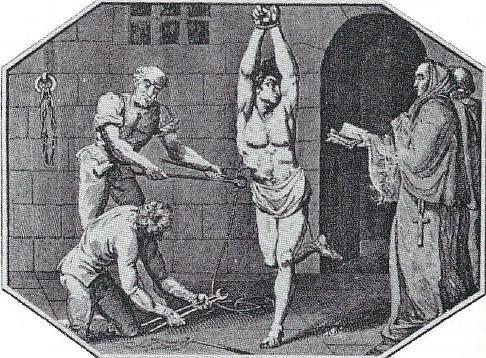
The
Holy Inquisition in India. Horrors inflicted on Hindus.
***
The
horrors inflicted on Galileo Galilei by
the Inquisition — the
Vatican
has now admitted that the Church was wrong and Galileo was right
— are well known. Not that well-known, and tragically so, are
the horrors inflicted by the Goa Inquisition. Every child reads
about Galileo’s trial and how it is symbolic of the triumph of
science over faith. But there is no reference — indeed, all
reference is scrupulously avoided — to the brutal attempts of
the Church to stamp out Hinduism in the territories controlled
by the Portuguese in
India
.
And this silence is not because there exists no evidence: There
exist, in full text, orders issued by the Portuguese Viceroy and
the Governor. There exist, in written records and travelogues,
penned not by the persecuted but by the persecutors, full
details of the horrors perpetrated in the name of Christ. Hindus
who dared oppose the persecution were punished, swiftly and
mercilessly. Those who were fortunate, got away with being
banished. The less fortunate had their property seized and
auctioned — the money was used, in large measures, for
furthering proselytisation. The least fortunate were forced to
serve as slave labour on the galleys that transported loot from
Indian shores to Portuguese coffers.
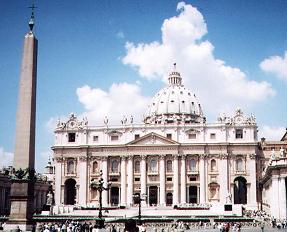 Viceroy
D Constantine de Braganca issued an order on April 2,
1560, instructing that Brahmins should be thrown out of
Goa
and other areas under Portuguese control. They had a month's
time to sell their property — it is obvious who gained from
such distress sale. Those found violating the viceregal order,
it was declared, would have their properties seized. Another
order was issued, this time by Governor Antonio Morez Barreto,
on February 7, 1575, decreeing that the estates of Brahmins
whose "presence was prejudicial to Christianity" would
be confiscated and used for "providing clothes to the New
Christians".
Viceroy
D Constantine de Braganca issued an order on April 2,
1560, instructing that Brahmins should be thrown out of
Goa
and other areas under Portuguese control. They had a month's
time to sell their property — it is obvious who gained from
such distress sale. Those found violating the viceregal order,
it was declared, would have their properties seized. Another
order was issued, this time by Governor Antonio Morez Barreto,
on February 7, 1575, decreeing that the estates of Brahmins
whose "presence was prejudicial to Christianity" would
be confiscated and used for "providing clothes to the New
Christians".
The attitude
of the Portuguese administrators in India and the Church
hardened over the years, to a point where each fiat, each
decree, each order, each letter, became an instrument of
religious persecution. The Third Concilio Provincial — a
gathering of bishops and other clerics — met in 1585 to
review, among other things, the progress of converting the
“heathens” to the “only faith”. The Concilio adopted a
resolution which said, ‘His Majesty the king has on occasion
ordered the Viceroys and Governors of India that there should be
no Brahmins in his lands, and that they should be banished
therefrom together with the physicians and other infidels who
are prejudicial to Christianity, after taking the opinion of the
Archbishop and other religious persons who have experience in
the matter. As the orders of His Majesty in this regard have not
been executed, great impediments in the way of conversion and
the community of New Christians have followed and continue to
follow.”
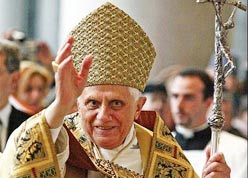 One
can quote from many other orders, resolutions and instructions
that resulted in the hideous Vatican-backed Goa Inquisition. The
details are not unknown to most of us; they are definitely well
known to the
Vatican
. The reason I have raised the issue of the Goa Inquisition is
two-fold. One
can quote from many other orders, resolutions and instructions
that resulted in the hideous Vatican-backed Goa Inquisition. The
details are not unknown to most of us; they are definitely well
known to the
Vatican
. The reason I have raised the issue of the Goa Inquisition is
two-fold.
First,
Pope Benedict XVI
should bear in mind the horrors inflicted on Hindus in the name
of Christianity before he berates them for being intolerant
towards Christians. Second, the
Vatican
owes an apology for the crimes committed during the Goa
Inquisition; it must apologise and repent for its misdeeds
against Hindus and gross attempts to stamp out Hinduism. Not to
do so would amount to continued endorsement of the crimes and
the unfair practices of missionaries.
Ten years ago, the
Vatican
issued a 14-page document, ‘apologising’ and ‘repenting’
for not doing enough to save
Europe
’s Jews from the Holocaust. While it is
common knowledge that Pope Pius XII did not feel particularly
appalled by Hitler’s ‘final solution’, the Vatican claimed
in its 1998 document that he was unaware of the concentration
camps, the mass slaughter, the gas chambers and the furnaces.
The document, understandably, failed to impress Jews who have
made it clear that Pope Benedict XVI is not welcome to visit
Israel unless he offers an unqualified apology and makes public
documents of that period which are now stored in the Vatican’s
archives. The
Vatican
may have eliminated the phrase “perfidious Jews” from its
liturgy and Pope John Paul II may have made it fashionable for
the Pontiff to refer to Jews as “older brothers”, these are
seen as no more than meaningless, insincere gestures.
The purpose of securing an apology for the Goa
Inquisition is not to belittle the
Vatican
, but to drive home the point that it cannot seek to occupy the
moral high ground till such time it has apologised and atoned
for the sins committed against Hindus. If the
Vatican
can say sorry to others, there is no reason why it cannot say
sorry to Hindus.
Their
faith is no less than those of the Book.
(source:
Vatican
owes us an apology - By Kanchan Gupta - dailypioneer.com).
Refer
to chapters on European
Imperialism and First
Indologists. Refer
to Idol
desecration in Goa
- By Yadnesh
Sawant
and Christian
Saints for Sale - By C I Isaac - vijayvaani.com
Top
of Page
Godhra
report says train carnage a conspiracy
The
Nanavati Commission report probing into the Godhra
train carnage was tabled in the Gujarat Assembly on Thursday
amid high drama.
The
Nanavati report says the incident of burning S-6 coach of
Sabarmati Express on February 27, 2002, was a pre-planned
conspiracy and not an accident.
The
first part of the report gave a clean chit to Gujarat
Chief Minister Narendra Modi saying there was no
evidence of the role of CM and any
Gujarat
minister in this case. It also added that there was no evidence
of them having not been able to provide protection, relief or
rehabilitation to any riot victim.
The
report also said that 140 liters of petrol was purchased as the
part of conspiracy to burn the bogey.
The
report says Raza Kurkur and Salim Panwala had purchased petrol
on the night of February 26 to be used in burning the bogey of
Sabarmati Express.The conspiracy was hatched at Aman guest house
and meant to spread terror in the area, the report adds.
Doors
of S-6 and S-7 bogey were forcibly opened and a person called
Hassan Lalu threw objects which were burning inside the bogey,
according to the report. It also said that Molvi Umarji planned
the entire conspiracy. Others named in the conspiracy are
Shaukat Lalu, Imran Sheri, Rafique Batuck, Salim Zarda, Jabbir,
Sheraj Bala.
The
hypocrisy of the Congress-UPA and Left leadership of India.
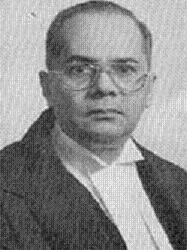
Justice
Girish Thakorla Nanavati (1935 - )
Not
bothering to so much as study a report written by a former judge
of the Supreme Court, not caring to go into specific arguments
and pointing out logical inconsistencies or flaws, the Congress-UPA
and Left leaderships have trashed Justice Nanavati's assessment.
They have questioned the honesty and credibility of Justice
Girish Thakorla Nanavati, but offered no reasons for doing so.
Such hit-and-run tactics could be expected from the familiar
bunch of left-liberal activists who have made a career of
Gujarat
bashing.
The
same Justice Nanavati inquired into the anti-Sikh violence
following the assassination of Mrs Indira Gandhi in 1984.
***
"It
had been conclusively established that Nanavati Commission was a
commission, UC Banerjee Committee was just a committee not
a commission,” he added.
As the report was being tabled, Congress legislators staged a
walkout in the Assembly.
Meanwhile,
spokesperson of
Gujarat
government and also the Health Minister
of the state Jai Narayan Vyas said,
“The
report has clearly gone into details, analysed all the evidences
and has come to the conclusion that there was no failure of
machinery as far as maintenance of law and order is
concerned."
***
Godhra
Commission report gives Modi clean chit
The
Sabarmati Express coach-burning was a 'pre-planned conspiracy',
a probe panel has said also giving a clean chit to Gujarat Chief
Minister Narendra Modi and the state police in the subsequent
post-Godhra riots that claimed over 1,000 lives.
Retired
Justice Akshay Mehta was the other member of the
Nanavati Commission.
"There
is absolutely no no evidence to show that either the Chief
Minister or any of the ministers in his council or police
officers had played any role in the Godhra incident," said
the report of Justice G T Nanavati, a former Supreme Court
judge, that went into the train burning incident.
(source: Godhra
report says train carnage a conspiracy
and
Godhra
Commission report gives Modi clean chit).
Insulting
Justice Nanavati
Congress/Left cussedness
In
rejecting the Justice GT Nanavati Commission report that
inquired into the Sabarmati Express fire at Godhra and the
violence that followed in
Gujarat
in February-March 2002, the Congress and its UPA allies, as also
the Left, have acted with expected
cussedness.
Without
going into an analysis of the Nanavati report, it is worth
commenting on the perverse responses it has drawn from those
politically opposed to the Gujarat Chief Minister.
Not
bothering to so much as study a report written by a
former judge of the Supreme Court,
not caring to go into specific arguments and pointing out
logical inconsistencies or flaws, the Congress-UPA and Left
leaderships have trashed Justice Nanavati's assessment. They
have questioned the honesty and credibility of Justice
Girish Thakorla Nanavati, but
offered no reasons for doing so. Such hit-and-run tactics could
be expected from the familiar bunch of left-liberal
activists who have made a career of
Gujarat
bashing -- and who have, indeed, said that Justice Nanavati has
not "inspired much confidence". That it comes from
mainstream parties that are running the Union Government is
alarming. Consider the hypocrisy. The same Justice Nanavati
inquired into the anti-Sikh
violence following the
assassination of Mrs Indira Gandhi in 1984. On the basis of that
Nanavati report, two Congress leaders, Mr
Sajjan Kumar and Mr Jagadish
Tytler, were put in the
dock. Mr Tytler was even forced to resign from the Union
Government. The Congress accepted the report, as did the UPA
allies and the Left. The cabal of professional civil rights
activists hailed Justice Nanavati's dogged pursuit of the truth.
In
Delhi
, he was a heroic judge; in
Gujarat
, he is an untrustworthy charlatan!
There was a time in
India
when a judicial Commission of Inquiry had a certain sanctity.
It was left free of politics and its findings were debated,
discussed, disputed and disagreed with -- but not debunked
wholesale.
(source: Insulting Justice
Nanavati - dailpioneer.com Edit page September
25 2008).
Refer
to Dial
CPM Brinda and Teesta for cash-for-false-affidavits
Top
of Page
Nomenclature
terrorism
The
ELM and the pseudo-seculars in
India
have a sworn duty: that of cultural extinction of the native
civilization of this country.
The
recent fuss about alleged “Hindu terrorists” has entertained
me hugely because all the usual suspects played their expected
roles to perfection. The pseudo-secular media had a field day
insinuating that Hindu terrorism is as major a problem in
India
as is Mohammedan and Christist terrorism. The UPA forgot its
axiom that “terrorism has no religion”, and joyously crowed
about “Hindu terrorists”. The BJP was apoplectic in its
attempts to distance itself from the alleged “Hindu
terrorists”.
Meanwhile,
some actual – not imagined — terrorism activity has been
going on in Kerala, where at least 300 people have been
recruited by Mohammedan fundamentalists to wage war on the
Indian
State
. Newspaper reports suggest that at least 96 young men from
Kerala, who were given military training by SIMI, are at large.
16 of them are in Kashmir, the others in
Bangalore
or Kerala, according to Intelligence Bureau reports. Apparently
there are special instructions in Malayalam in SIMI jungle camps
held all over the country, for the poor dears are not so
proficient in Urdu/Arabic. These young men were dispatched to
Kashmir
with simple instructions: kill Indian soldiers and facilitate
infiltration by the Pakistanis. Terrorism has now become just a
job.
So
much so that so-called “spiritual advisers” (“paymaster”
may be a more accurate designation) are out there recruiting
known gangsters, converting them and sending them off to
Kashmir
. A particular gang of Christist criminals in
Cochin
has apparently supplied several converts who made the trek to
Kashmir
: including one Verghese aka Yasin who took a bullet in his head
from the Indian Army and had to be identified from his
fingerprints.
All
this is ironic: Kerala has long been a supplier of manpower and
womanpower – first it was the clerks and petty shopkeepers all
over India, as well as a lot of soldiers; then it has been
nurses, next construction labor and professionals for the
Persian Gulf and America, and most recently, Christist padres
and nuns for the conversion industry and as gastarbeiter
for the shrinking seminaries of Europe. I
guess it is but a small step to terrorism as a profession. As
Adi Sankara said in a slightly different context some centuries
ago, “udara nimittam bahu krta vesham” (one wears various
roles to satisfy that despotic stomach).
And
then there’s the news about serial blasts in Manipur and –
as I write this – in
Assam
, that have killed large numbers of innocent people. There are
all the other blasts – there have been so many we begin to
lose count – in Ahmedabad, Bangalore, Delhi, etc. etc. etc.
– where the perpetrators unambiguously let it be known that
they were Mohammedans inflamed by religious fundamentalism and
jihad.
Christist
terrorists have been running rampant in the Northeast for some
time: their modus operandi
is a little different – they prefer the AK-47 and they
generally target specific individuals. They
have ethnically-cleansed 45,000 Reang tribals from Mizoram for
refusing to convert; they shot respected litterateur and
patriot, Bineshwar Brahma in Guwahati; they shot Hindu priest
Shanti Tripura in his own temple; and most recently, they shot
Swami Lakshmananda in Orissa (let’s not
kid around about this: even the alleged Communist terrorist who
was trotted out, suitably incognito, on TV to exonerate
Christists admitted that most of his flock were Christists).
Not
to mention that almost the entire top echelon of the dreaded Tamil
Tigers are Christists, and the non-Christists
mysteriously suffer “accidents” or are captured by the Sri
Lankan Army or “commit suicide”. Velupillai Prabhakaran,
Anton Balasingham, et al are all Christists. So was Dhanu, the
suicide bomber who blew up Rajiv Nehru Gandhi. There is reason
to believe that the so-called Maoists in
Nepal
are also crypto-Christists, especially some of their top brass.
Of
course, none of this qualifies for the “religious terrorism”
moniker as far as the lovely English-Language Media and the UPA
are concerned. Their sound and fury is reserved for some poor
Hindu nun who is, by the power of “truth by repeated
assertion”, subjected to an electronic lynch, deemed a
terrorist and subjected to tejovadham.
This is to be expected, as the ELM and
the pseudo-seculars in
India
have a sworn duty: that of cultural extinction of the
native civilization of this country. Once you understand this
axiom, their baffling acts are self-consistent in a certain
bizarre frame of reference.
Whether
the pseudo-seculars do this for money, or they have been
brainwashed by the predatory State, is not entirely clear. But
then it doesn’t matter, does it, since the end result is the
same?
And
this deliberate use of nomenclature terrorism – the use of
insinuation to demonize and to create defensiveness – is a
purely Goebbelsian propaganda tactic.
I tried a little experiment on the pseudo-seculars some years
ago by returning the favor. I started referring to their
ideology as Nehruvian
Stalinism. Their immediate knee-jerk
reaction was to label me a Hindu fundamentalist, Hindu fascist
etc. Which I was prepared for: I told them, fine, maybe I am all
that, but you, you are Nehruvian
Stalinists.
I
got the reaction I expected: when the tables were turned, the
pseudo-seculars did exactly what they expect others to do under
their attacks. They got defensive, they labored to explain why
they were not Stalinists, and how different Nehru was from
Stalin. They grew increasingly exasperated as I kept insisting
that Nehru was a lot like Stalin: the personality cult, the
imperiousness, the purges, the heavy-industry fetish, etc., and
how Jawaharlal was merely a little less effective in his
ruthlessness.
Happily,
I got a few pseudo-seculars into an absolute tizzy denying these
allegations; they practically foamed at the mouth. I had
succeeded – I had got them to play on my terms, on the playing
field I defined; instead of protesting that I was not a fascist,
I had changed the terms of reference and forced them to defend
their cherished shibboleths. It was good to watch them squirm.
That,
I submit, is the way to play this game. Hindus
should not bother to try and prove that they are not terrorists.
We should say “Yes, there must be Hindu terrorists, just like
you guys are Communist terrorists, or Christist terrorists, or
Mohammedan terrorists. Any questions?” If
they continue to blather, one might hint darkly of caches of
AK-47s and RDX.
It
is evident that the pseudo-seculars are cowards and bullies, and
this will shut them up. Only, gentle reader, I suggest you be
careful in your choice of words, just in case somebody has a
hidden camera– make veiled threats, where you cannot be pinned
down to anything specific. And occasionally mutter knowingly
about some atrocity perpetrated by the Christist or Communist or
Mohammedan terrorists, and insinuate that you have certain
“friends” and you know where the pseudo-seculars live. You
know, the kind of thing the Mafioso say in those gangster
movies.
Nomenclature
terrorism is a game two can play, and the sinister Nehruvian
Stalinists can be – as in the quaint phrase they use – hoist
on their own petard.
(source: Nomenclature
terrorism - By Rajeev Srinivasan - haindavakeralam.com).
Top
of Page
Godhra:
The True story
What
transpired then, in the Indian press? Let’s imagine a coach of
French pilgrims coming back from
Lourdes, burned alive.
***
Godhra,
a city of the
Indian
State
of
Gujarat
, was the lead story in all Indian newspapers on February
27th-28th, 2002. A shattering piece of news: 58 Hindu pilgrims
had been burned alive in a train. “57 die in ghastly attack on
train” ran the Times of India’s headline; “Mob targets Ramsevaks [Devotees
of Rama] returning from Ayodhya”; “58 killed in attack on
train with Karsevaks [volunteers]” (The
Indian Express); “1500-strong mob butcher 57 Ramsevaks
on Sabarmati Express” (The
Asian Age). But the BBC’s announcement had a very
different tone: “58 Hindu ‘extremists’ burned to death”
… or Agence France
Press on March 2nd: “A train full of Hindu
‘extremists’ was burnt.”
A
deluge of anguished news followed about a “Muslim genocide”:
“Mass killings of Muslims in reprisal riots” (NYT,
March 5th), “The authorities … share the prejudices of the
Hindu gangs who have been busy pulping their Muslim neighbours”
(The Observer, March 4th). We were told that Narendra Modi, Chief
Minister of Gujarat, intended to eradicate Muslims from the
State — more than 9% of
Gujarat
’s population, in other words five million people. We read
that the police was conniving in the mass slaughter and did
nothing to prevent it. Narendra Modi was compared to Hitler, or
Nero. We shuddered reading the reports describing rapes and
various horrors, supposedly inflicted on Muslims by Hindus.
Today,
six years later, with the noises and cries of the wounds having
fallen silent, what emerges from those events? What are the
facts?
At
7:43 A.M. on February 27th, 2002, the Sabarmati
Express rolled into the Godhra station, fortunately with
a four-hour delay, in broad daylight. This train transported
more than 2,000 people, mainly karsewaks
on their way back to Ahmedabad after participating in the Poorna
Ahuti Yagya at Ayodhya, a ritual at the
traditional birthplace of Lord Rama.


Godhra
carnage
What
transpired then, in the Indian press? Let’s imagine a coach of
French pilgrims coming back from
Lourdes
, burned alive.
Strangely,
instead of clearly, straightforwardly condemning the act, the
Indian English-language press tried to justify it: “Pilgrims
provoked by chanting pro-Hindu slogans” (they were not slogans
but bhajans, or devotional songs, ending with “Jai
Sri Ram” (Victory to Sri Rama). “It’s because they
were returning from Ayodhya, where they asked for the
reconstruction of a temple at the traditional birth place of
Rama; this offends the feelings of the Muslims.” In sum, the
victims, roasted alive, were guilty.
***
As
it pulled out of the station, the train was pelted with stones
and bricks, and passengers from several bogeys were forced to
bring down their windows to protect themselves. Someone pulled
the emergency chain: the train came to a halt about 100 metres
away from the platform, surrounded by a large crowd of Muslims.
The railway police managed to disperse the crowd, and the train
resumed its journey.
Within
minutes, the emergency chain was simultaneously pulled again,
from several coaches. It halted at about 700 metres from the
station. A crowd of over 1,000 surrounded the train, pelting it
with bricks, stones, then burning missiles and acid bulbs,
especially on the S-5, S-6 and S-7 coaches.
The
vacuum pipe between coaches S-6 and S-7 was cut, thereby
preventing any further movement of the train. The doors were
locked from outside. A fire started in coach S-7, which the
passengers were able to extinguish. But the attack intensified
and coach S-6 caught fire and minutes later, was in flames.
Passengers who managed to get out of the burning compartment
were attacked with sharp weapons, and stoned. They received
serious injuries, some were killed. Others got out through the
windows and took shelter below the coach.
Fifty
eight pilgrims were burned alive, including twenty-seven women
and ten children. The whole attack lasted 20-25 minutes.
What
transpired then, in the Indian press? Let’s imagine a
coach of French pilgrims coming back from
Lourdes
, burned alive.
Strangely,
instead of clearly, straightforwardly condemning the act, the
Indian English-language press tried to justify it: “Pilgrims
provoked by chanting pro-Hindu slogans” (they were not slogans
but bhajans, or devotional songs, ending with “Jai
Sri Ram” (Victory to Sri Rama). “It’s because they
were returning from Ayodhya, where they asked for the
reconstruction of a temple at the traditional birth place of
Rama; this offends the feelings of the Muslims.” In sum, the
victims, roasted alive, were guilty.
(source: Godhra:
The True Story - By Nicole Elfi - jaia-bharati.org). Refer
to NGOs,
Teesta Setalvad spiced up
Gujarat
riot incidents: SIT and Setalvad
in dock for 'cooking up killings' and
Teesta,
It hit your face
Gujarat riot myths busted
The
Narendra Modi baiters among NGOs on Monday suffered a
major setback when a Supreme Court-appointed special
investigation team (SIT) charged a leading activist, Teesta
Setalvad, with adding morbidity into the post- Godhra riots in
Gujarat
by “cooking up macabre tales of killings”.
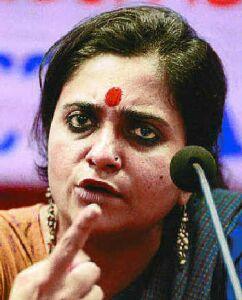 

The
so-called human rights activist, Teesta Setalvad her
partner and husband Javed Anand - Co-editor, Communalism
Combat and Secretary, Citizens for Justice and Peace
—
who paraded the Gujarat riot victims before the Supreme Court
and claimed they had been denied justice — suffered
embarrassment on Monday after a Special Investigation Team (SIT)
gave sufficient grounds for the apex court to doubt the
authenticity of incidents highlighted by her NGO Citizens for
Justice and Peace.
SIT headed by former CBI director R K Raghavan
said “many incidents were cooked up, false witnesses were
tutored to give evidence about imaginary incidents, and false
charges levelled against the then Ahmedabad police chief P C
Pandey”.
Referring
to another instance that exposed the Citizens for Justice and
Peace’s much ‘trumpeted’ charges, Rohtagi said the SIT
investigation found untrue allegation
about a gangrape of a pregnant woman Kauser Bano, whose stomach
was allegedly pierced by sword and her foetus killed.
Refer
to Why
is Teesta Setalvaad not behind bars? and Gujarat
Riots: The True Story: Busting the Media Myths and
Tehelka
Exposed and Teesta,
It hit your face.
Refer to NDTV
Even the instance of dumping of bodies into a well at Naroda
Patiya and a charge of the police allegedly shielding accused
persons in murder of a British national was found to be untrue,
Rohtagi said. Firing a salvo at the NGO,
Rohtagi
said, “It is clear from the report
that the
horrendous allegations made by the NGO were false.
Cyclostyled affidavits were supplied by a social activist and
the allegations made in them were untrue,” he added, with an
obvious reference to Setalvad.
(source:
Gujarat
riot myths busted - By Abraham
Thomas - dailypioneer.com and Setalvad
in dock for 'cooking up killings'
- economictimes.indiatimes.com and
NGOs,
Teesta Setalvad spiced up
Gujarat
riot incidents: SIT). Refer to Profile
of Anti-India activist
Also refer to Gujarat
riots - Isn't
it about time that every thinking citizen of Bharat came
together and forced the offending media— CNN-IBN,
NDTV, AAJ TAK, Hindu, Telegraph, Hindustan Times, Times of
India, Indian Express, Rajdeep Sardesai,
Sagrika Ghosh, Pranay Roy, Prabhu Chawla, etc.
to apologize and mend their ways? Refer to NDTV
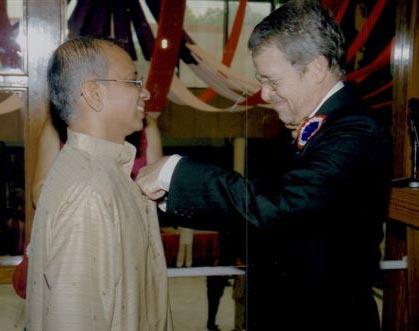
The
Mind of a Slave.
Father
Cedric Prakash, photographed here receiving the Chevalier
de la Legion d’ Honneur Award from the French
Ambassador in New Delhi on 14th July 2006, is well known in some
circles as a resolute defender (?) of "human rights"
in Gujarat. In the Mail Today of May 8, 2009, page 9, he is
quoted as saying: (Narendra) Modi cannot nurture prime
ministerial dreams unless he is acceptable to the Western (?)
world.
***
The Mind of
a Slave
Fr. Cedric
Prakash, photographed here receiving the Chevalier de la Legion
d’ Honneur Award from the French Ambassador in New Delhi on
14th July 2006, is well known in some circles as a resolute
defender of "human rights" in Gujarat.
In June, a
delegation from the United States Commission on International
Religious Freedom (USCIRF) is scheduled to visit India. The team will travel to
Gujarat
and Orissa. Fr Prakash had testified before USCIRF in June 2002
after the
Gujarat
riots. The idea of a
US
body investigating religious freedom in
India
is a bit disturbing. Fr
Prakash's take on the subject is, however, fascinating.
In the
Mail Today of May 8, 2009, page 9, he is quoted as saying:
(Narendra)
Modi cannot nurture prime ministerial dreams unless he is
acceptable to the Western world.
Fr.
Prakash does himself proud with such an honest articulation of
his beliefs.
(source:
Pumpkin
Republic - By Swapan Dasgupta). Refer
to The
USCIRF in
India - By Radha Rajan
***
UNCIRF
– will it visit convents where nuns are raped?
- By Hilda Raja
The
UPA government’s unprecedented step of inviting the
United States
Commission on International Religious Freedom (UNCIRF) to
visit
Gujarat
and Orissa is not only disturbing,
but also portents greater harm to the harmony and unity of the
country.
It
exposes
India
to international policing which has ramifications on the
integrity and sovereignty of the nation. Today it can be a
Commission; why not later an army for the purpose of protecting
minorities? The basic premise is the same.
It
is invasion - be it territorial, social or religious.
No matter which area, invasiveness of any kind cannot be
accepted. What is the role of the Congress-led UPA government?
Does it not stand indicted for impotency to curb violence?
It cannot abdicate responsibility and obligation to
protect minorities and rein in State governments. If this is
logically followed, the accused is the Congress–Manmohan Singh
- proof of his political weakness. Which country would tolerate
such invasion and interference in its internal affairs? Are we
bonded to the
USA
? No patriotic Indian, irrespective of religion, would accept
the policing of this nation by outside agencies.
Can
the Catholic Bishops Conference of
India (CBCI) and the
INDIAN
Churches
which objected to such invasiveness nine years ago now make a
U-turn? In the course of five years, what is the persecution
witnessed in
India
. Brahmin Pundits killed in hundreds and chased away from
J&K under ethnic cleansing has not raised international
concerns. The furore caused by wrongful reporting of the rape of
five nuns in Jhabua was set right when the nuns themselves gave
interviews stating it had nothing to do with religion. Indeed,
the culprits were converted tribals.
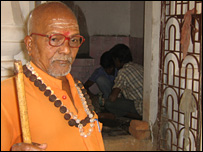 In
Orissa, the massacre of Swami
Laxmanananda and his disciples led to clashes in
which Christians and Hindus were equally victims. The infamous
Gujarat riots are being investigated by the Special
Investigation Team, but earlier versions and gory stories of
brutality, rape and massacres narrated by activist Teesta
Setalvad were found faked, cooked up, witnesses and statements
doctored; hence the Supreme Court rejected the bundle of lies. Against
this backdrop, Congress allowing UNCIRF to enquire into violence
against minorities is political in intent and has everything to
do with further dividing the people on religious grounds. In
Orissa, the massacre of Swami
Laxmanananda and his disciples led to clashes in
which Christians and Hindus were equally victims. The infamous
Gujarat riots are being investigated by the Special
Investigation Team, but earlier versions and gory stories of
brutality, rape and massacres narrated by activist Teesta
Setalvad were found faked, cooked up, witnesses and statements
doctored; hence the Supreme Court rejected the bundle of lies. Against
this backdrop, Congress allowing UNCIRF to enquire into violence
against minorities is political in intent and has everything to
do with further dividing the people on religious grounds.
Will
UNCIRF be allowed to enter
Pakistan
or any Islamic country where there is discrimination against
minorities?
Congress
and Christian churches seem to conspire against Hindus. This
is evident when one looks at the pre-election scenario. Church
double-speak has exposed its ulterior motive - nine years ago
(Sept 2000) CBCI described as “unwarranted” the proposed
hearing on religious freedom in
India
by UNCIRF, and distanced itself from John Dayal, saying he was
attending it in his individual capacity. It is relevant to
recall what Christian MPs felt then. They acknowledged the need
to curb the influence of fundamentalists over the community and
the Church. By deposing before the US panel, Dayal has given
Hindu extremist groups valid reason to doubt the integrity of
the community and ‘we could just be inviting Hindu extremist
backlash’ rued Patty Ripple Kyndiah, who added that the antics
of John Dayal is against national interest. Former Speaker P.A.
Sangma endorsed Kyndiah, ‘This is our internal problem. We are
capable of solving it’.
What has changed in nine years? The number of churches built has
increased more than hundred fold. Christian institutions are
given all financial assistance, Christians have occupied
hundreds and hundreds of acres of promboke land on which
they quickly erect a shack and a cross - for further
constructing pucca buildings, both commercial and religious.
Thus occupying the land, they acquire assets, evade tax, and
even electricity charges.
It
is in the national interest to survey the status of Churches
property-wise and cash-wise. When in so-called Christian
countries churches are closing down, here in
India
churches are annually increasing in number. Even in
Italy
, churches are empty but here churches are full every Sunday and
the pulpit is used even against the government, but goes
unchallenged. From a poor country like
ours, money flows to
Rome
, from congregations working for the poor and destitute in
India
, money flows to
Vatican
. Are these signs of a persecuted church? The flow of money to
churches and church-allied ‘development organizations’ has
trebled in the last five years, on Government of India records.
Is this a sign of a church under duress?
Why should money from here go to Rome/Vatican? One
is first an Indian - for one cannot change one’s nationality
but can change one’s religion.
The
power games of the powerful have torn nations apart by war
followed by famines leading to total destruction and subjugation
of people. Interference in our internal affairs must be seen in
wider perspective. Invasiveness of any kind in the affairs of a
sovereign country means two things - the supervisory role of the
invasive country/organization and the subjective, subservient
level of the interfered country. We have a democracy and a
Constitution which has stood us well. Except for some
aberrations brought by vest interests, the people have always
been able to overcome this and to set the tone and tenure for
harmonious unity.
India
is the only country in the world which has opened its arms to
all religions and all people and thus become the cradle of world
religions. Fringe Christian churches have been misusing Freedom
of Religion for proselytizing, poaching on other churches as
well, and creating social tensions. One is not judged by one’s
religion, but will be judged by the measure of love one has
lived with and the Truth one has upheld.
PS: Would the Church permit UNCIRF to visit the convents which
have reported rapes, sexual violations, murders and oppression
of women (nuns).
(source: UNCIRF
– will it visit convents where nuns are raped?
- By Hilda Raja
- vijayvaani.com).
The
USCIRF in India
"In
passing this Act on International religious Freedom the U.S is
basing its case on the noble founders of the nation, on 'the
pillars of our nation' - a nation that was built on the blood
and sweat of genocide and slavery – both of which were
practiced in the name of the Christian faith!!"
The
U.S has set several precedents post September 11 – precedents
worthy of emulation. The right to
revenge, the right to pre-emptive strikes when faced with
threats to national security, the right to demonstartive
nationalism/protectionism. The U.S must ask itself why other
religious minorities in
India
, the Parsis, the Sikhs, the Buddhists and Jains never face the
problems that Christians and Muslims in
India
face at the hands of 'Hindu extremists? Why did the
normally gentle Hindus take to extremism? Why did the U.S carpet
bomb
Iraq
and
Afghanistan
? National security is threatened not only when our borders are
threatened by foreign invaders in conventional war but when our
homes, communities and societies are threatened by religious
invaders and terrorists. Christian missionaries and Islamic
terrorists threaten Hindus and Hindu society. The right to
revenge is as much the prerogative of Hindus as it is of the
U.S.
So USCIRF or ABCDEF, the U.S cannot preach to
India
what it has never practiced. Enough of this impertinence USCIRF.
Care for your backyard before you venture into other nations.
Refer
to A
Little Matter of Genocide - By Ward Churchill.
And
one more thing, this constant harping on rising Hindu extremism
threatening the secular, democratic fibre of the country and all
that crap. The
Indian
State
is democratic and secular. The Indian nation is not. The Indian
nation like most nations of the world, is religious. And the
rich diversity and pluralism which you keep harping about, it
has existed for over two thousand years, when the first
Christian and Muslim missionaries/traders/invaders begin to
appear in our country, not because of the USCIRF or the U.N or
the Indian Constitution or the Human rights industry. It
has existed for centuries because the nation was Hindu. The
Hindu thought is assimilatory not exclusivist like the Abrahamic
faiths. And it is this nation which is being
threatened by the missionary activities of the Christian
fundamentalists and the secessionist activities of Islamic
fundamentalists. The Hindus have survived 600 years of Muslim
barbarism, 200 years of savage colonialism. We survived violent
partition in 1947, and we are living through the problems in
J&K and the North-east. Hindus have the right to exist, the
right to protect their faith, the right to territory, the right
to protect and defend their women and children, the right to
revenge and the right to pre-emptive strikes against their
aggressors.
"
(source:
The
USCIRF in
India - By Radha Rajan). Refer
to Fantasies
of the Master Race: Literature, Cinema, and the Colonization of
American Indians
-
By Ward Churchill
Top
of Page
Modi
exoneration: A slap in the face of secular brigade
Call
Narendra Modi a communalist, a Hindu fundamentalist or a fascist
and our intellectuals would joyfully agree. Clear him of charges
of genocide and there will be proverbial snarls. Our
intellectuals and secularists are so accustomed to accept the
portrayal of Modi as a vicious Muslim-hater that when a report
was submitted to the Gujarat Legislative Assembly clearing him
of all charges of complicity in the post-Godhra riots cries of
‘no, no!’ could be heard in the editorial columns of our
newspapers.
 An
example is The Indian Express (September 27). “Compromised
individuals and governments cannot set up commissions of enquiry
and then expect the world to hail these as impartial and
true”, the paper pontificated. The report in question was
submitted by the one-man Nanavati Commission. It happens to
contradict reports of a commission chaired by another judge UC
Banerjee. If the Justice Banerjee report condemned the
Gujarat
government and Narendra Modi, the Justice Nanavati Commission,
at least in the first of its two-part report has totally
exonerated Modi and his government. As the Express put it:
“Both reports reflect a polarised society and it is clear that
the Nanavati Commission has been selective and partisan in its
findings as probably the hurriedly set-up Banerjee Committee.”
Probably? Why probably? Justice Banerjee submitted his report
hurriedly. Justice Nanavati has taken five years to submit his
report. Can we call it ‘hurriedly’? Justice Nanavati has
named names. An
example is The Indian Express (September 27). “Compromised
individuals and governments cannot set up commissions of enquiry
and then expect the world to hail these as impartial and
true”, the paper pontificated. The report in question was
submitted by the one-man Nanavati Commission. It happens to
contradict reports of a commission chaired by another judge UC
Banerjee. If the Justice Banerjee report condemned the
Gujarat
government and Narendra Modi, the Justice Nanavati Commission,
at least in the first of its two-part report has totally
exonerated Modi and his government. As the Express put it:
“Both reports reflect a polarised society and it is clear that
the Nanavati Commission has been selective and partisan in its
findings as probably the hurriedly set-up Banerjee Committee.”
Probably? Why probably? Justice Banerjee submitted his report
hurriedly. Justice Nanavati has taken five years to submit his
report. Can we call it ‘hurriedly’? Justice Nanavati has
named names.
The report says that the people who set fire to coach S-6 of the
Sabarmati Express bought 140 litres of petrol prior to its
arrival at Godhra, this has never been challenged. What were
those 140 litres of petrol meant for? To brew tea? To make hair
oil? If Justice Nanavati were to say that the sun rises in the
east in
Gujarat
, our secularists would demand that he provide evidence. The
Times of India (September 27) also finds it hard to accept that
there can be truth in Justice Nanavati’s report. But to prove
how secular it is the paper argues that “even if the Nanavati
Commission is correct…. that can’t be taken to justify the
days of carnage and breakdown of public order that followed”.
Obviously it
is okay to damn the Modi government through a report provided by
a Justice commissioned by Lalu Prasad. We live and learn. In the
matter of religious conversions again, many of our newspapers
are remarkably silent one suspects because criticising the
Church would amount to supporting Hindutva. Not a single
newspaper so far has made a deep study of how many Protestant
missions are functioning in
India
, how many churches have been built in recent years and how many
conversions have taken place. Interestingly, internet shows that
one Amrita Singh has written a strong piece in The Times of
India (September 7) exposing the doings of missionaries. Amrita
Singh is quoted as saying: “One of the most effective church
planting agencies working in
India
is the
US
-based AD 2000 and Beyond Movement. It is impressively organised,
having mapped the whole of
India
by caste and identifying those most likely to be receptive to
their message.” AD 2000 lists nine Indian tribes as Priority
I, because they are so poor and deemed most likely to convert.
The names of the nine tribes are enumerated. And there is more
of this kind. Is the UPA government aware of all this? Is it
taking any measure to handle large-scale invasion of evangelists
into
India
?
 Does
anyone know how much money is pouring in, how much is
distributed and how many conversions take place? According to
Amrita Singh, a forecast made by the World
Religious Council plans to increase the Christian
population to 125 million by the year 2050. The present
population is 25 million. Maybe the World Council is
exaggerating. Maybe it is all a joke. But equally maybe, it is
all true. Is this permissible? Or is the UPA government going to
tell us that the Constitution clearly lays down that propagation
is permissible under the Constitution and if anybody wants to
change his religion of his own free will he is free to do so? Does
anyone know how much money is pouring in, how much is
distributed and how many conversions take place? According to
Amrita Singh, a forecast made by the World
Religious Council plans to increase the Christian
population to 125 million by the year 2050. The present
population is 25 million. Maybe the World Council is
exaggerating. Maybe it is all a joke. But equally maybe, it is
all true. Is this permissible? Or is the UPA government going to
tell us that the Constitution clearly lays down that propagation
is permissible under the Constitution and if anybody wants to
change his religion of his own free will he is free to do so?
We need some clarification here.
Christian churches—especially Protestant churches—are hell
bent on conversions on a large scale. Our secularists will say
that is all very well. We are heading for trouble.
Churches will be attacked and all Hindus will be blamed. Our
Constitution is used to damn us and that is the worst part of it
all. It doesn’t help to be idealistic which our
constitution-makers were. What is being
planned by the evangelists is “a silent invasion” entirely
within the law. Poor people are literally
“bought”, not forced, to become Christians. And isn’t that
within the law? How dare anybody doubt it? One suspects that all
this activity has the benevolent approval of the president of
the Congress—secular—party.
(source: Modi
exoneration: A slap in the face of secular brigade -
oragniser.org).
Top
of Page
Chandrayaan
a tribute to nation’s genius and Aryabhatta
Chandrayaan: the
Sanskrit word for "moon craft"
In the early
hours of Wednesday,
India
created history by successfully launching Chandrayaan-I, the
first Indian spacecraft destined for the moon.
India
thus became one of the elite group of six countries to have sent
a mission to Earth’s closest celestial companion; if the
mission succeeds, we shall be one of four countries to have
accomplished this feat. Hours before Chandrayaan’s launch from
Sriharikota in Andhra Pradesh, the numerous scientists who have
toiled for many months to make the mission a success completed
the final set of drills, the most important of which was to fill
the engines of the powerful PSLV-CII launch vehicle with liquid
propellants and pressurised gas. Luck too was on the side of the
scientists as they could not have asked for better launching
conditions after worries about rain and lightning. Since the
Apollo 11 mission in 1969 that saw American astronauts Neil
Armstrong and Edwin Aldrin become the first men to walk on the
Moon, many countries have aspired to replicate that ‘giant
step for mankind’ but few have actually dared and even fewer
succeeded in doing so. Since then there have been several moon
missions, mostly unmanned, that have been carried out by several
countries, both singularly and in collaboration. So much so that
today sending a surveillance mission appears to be somewhat
tame. But if one looks at the fact that there are only three
other countries that have the technical prowess to successfully
carry out such a mission, then
India
definitely has reasons to be proud. The launch of Chandrayaan,
therefore, is of great significance for the nation and a feather
in the cap of all scientists who have been associated with it.

India
created history by successfully launching Chandrayaan-I, the
first Indian spacecraft destined for the moon.
India
thus became one of the elite group of six countries to have sent
a mission to Earth’s closest celestial companion.

Although
Chandrayaan has been made possible with the help of
international cooperation, the mission is essentially a tribute
to
India
’s inherent genius — and Aryabhatta.
***
The
Moon has long been an object of mystery, veneration and
fascination not just in
India
but the world over. It has also found its way into many works of
fiction and travellers’ tales. This mission provides an
exciting opportunity to unravel some of the Moon’s deep
secrets. There have been other Moon missions before but none has
explored it in as great a depth and over such an extended period
of time as the Indian scientists propose to do. This unmanned
lunar exploration spacecraft, which will orbit the moon about a
100 km above its surface, has high resolution sensing equipment
that will survey the lunar surface over two years and try and
explore its mineral composition and, most importantly, try to
find out whether water and helium deposits exist. The polar
regions of the moon are of special interest as they are the most
likely places where water might be found.
The Chandrayaan mission constitutes an important scientific
study because apart from expanding our knowledge about the Moon
it is hoped that it will also help confirm the theory about its
origin. The mission will also shed considerable light on the
genesis of our planet and the solar system. These significant
scientific findings will, in the long run, help us in managing
our planetary resources better. No less important is the fact
that a mission of this scale will also add considerably to our
scientific and technological capabilities, inspiring the next
generation of scientists to scale even greater heights. Although
Chandrayaan has been made possible with the help of
international cooperation, the mission is essentially a tribute
to
India
’s inherent genius — and Aryabhatta.
(source:
Chandrayaan
a tribute to nation’s genius and Aryabhatta
- dailypioneer.com Edits
- Thursday,
October 23, 2008).
Top
of Page
Fly
Me to the Deity
AN
unmanned spacecraft from
India
— that most worldly and yet otherworldly of nations — is on
its way to the moon. For the first time since man and his
rockets began trespassing on outer space, a vessel has gone up
from a country whose people actually regard the moon as a god.
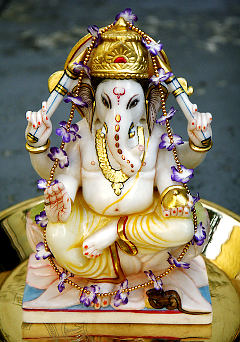 The
Chandrayaan (or “moon craft”) is the closest India has got
to the moon since the epic Hindu sage, Narada,
tried to reach it on a ladder of considerable (but insufficient)
length — as my grandmother’s bedtime version of events would
have it. So think of this as a modern Indian pilgrimage to the
moon. The
Chandrayaan (or “moon craft”) is the closest India has got
to the moon since the epic Hindu sage, Narada,
tried to reach it on a ladder of considerable (but insufficient)
length — as my grandmother’s bedtime version of events would
have it. So think of this as a modern Indian pilgrimage to the
moon.
As it
happens, a week before the launching, millions of Hindu women
embarked on a customary daylong fast, broken at night on the
first sighting of the moon’s reflection in a bowl of oil.
(This fast is done to ensure a husband’s welfare.) But
reverence for the moon is not confined to traditional Indian
housewives.
The Web
site of the Indian Space Research
Organization — the body that launched the
Chandrayaan — includes a verse from the Rig
Veda, a sacred Hindu text that dates back some 4,000
years:
“O
Moon! We should be able to know you through our intellect,/ You
enlighten us through the right path.”
One is
tempted, in all this, to dwell on the seeming contradiction
between religion and science, between reason and superstition.
And yet, anyone who has been to
India
will have noted also its “modernity of tradition.” The
phrase, borrowed from the political scientists Lloyd and Susanne
Rudolph, might explain the ability of devout Hindus — many of
them, no doubt, rocket scientists — to see no
disharmony between ancient Vedic beliefs and contemporary
scientific practice.
The Hindu
astrological system is predicated on lunar movements: so the
moon is a big deal in astrology-obsessed
India
. That said, the genius of modern Hinduism lies in its comfort
with, and imperviousness to, science. A friend tells me of an
episode from his childhood in
Varanasi
, the sacred Hindu city. Days after Apollo 11 landed on the
moon, a model of the lunar module was placed in a courtyard of
the most venerable temple in the city. The Hindu faithful were
hailing man-on-the-moon; there was no suggestion that the
Americans had committed sacrilege. (Here, I might add — with a
caveat against exaggeration — that science
sometimes struggles to co-exist with faith in the
United States
in ways that would disconcert many Indians.)

“O
Moon! We should be able to know you through our intellect,/ You
enlighten us through the right path.”
Devout
Hindus no
disharmony between ancient Vedic beliefs and contemporary
scientific practice. Science
sometimes struggles to co-exist with faith in the
United States
in ways that would disconcert many Indians.
***
Of course,
the Chandrayaan is also a grand political gesture — space
exploration in the service of national pride. This kind of
excursion may provoke yawns at NASA, but judging from
round-the-clock local coverage it has received, the mission has
clearly inflamed the imagination and ambition of Indians. Yes,
even moon-worshipping ones.
(source:
Fly
Me to the Deity - By Tunku Varadarajan - nytimes.com).
Top
of Page
The
End Of American Capitalism?
The worst
financial crisis since the Great Depression is claiming another
casualty: American-style capitalism.
Since the
1930s,
U.S.
banks were the flagships of American economic might, and
emulation by other nations of the fiercely free-market financial
system in the
United States
was expected and encouraged. But the market turmoil that is
draining the nation's wealth and has upended Wall Street now
threatens to put the banks at the heart of the
U.S.
financial system at least partly in the hands of the government.
 The Bush
administration is considering a partial nationalization of some
banks, buying up a portion of their shares to shore them up and
restore confidence as part of the $700 billion government
bailout. The notion of government ownership in the financial
sector, even as a minority stakeholder, goes against what market
purists say they see as the foundation of the American system. The Bush
administration is considering a partial nationalization of some
banks, buying up a portion of their shares to shore them up and
restore confidence as part of the $700 billion government
bailout. The notion of government ownership in the financial
sector, even as a minority stakeholder, goes against what market
purists say they see as the foundation of the American system.
"People around the world once admired us for our economy,
and we told them if you wanted to be like us, here's what you
have to do - hand over power to the market," said Joseph
Stiglitz, the Nobel Prize-winning economist at Columbia
University. "The point now is that no one has respect for that kind
of model anymore given this crisis. And of course it raises
questions about our credibility. Everyone feels they are
suffering now because of us."
***
"An open, competitive and liberalized financial market can
effectively allocate scarcer resources in a manner that promotes
stability and prosperity far better than government
intervention,"" Henry Paulson, the U.S Treasury
secretary said in
Shanghai
in March 2007. This year it sounds like a big joke given the
fact that both the
United States
and
UK
government s are nationalizing banks and financial institutions
in order to avoid a complete meltdown of their financial system.
This money will come from
U.S.
taxpayers, most of whom are ordinary workers. It amounts to
taking around $2500 U.S. dollars from every
U.S.
citizen - and giving it to the banks and finance companies. This
money could have been used for health care, for improved
education, for scientific research, for social welfare program;
for environmental protect; or other socially useful purposes.
Instead these are going to support a false doctrine. The media
is not telling us the real reason behind the crisis that is as
serious as 1930"s crash of the share market in USA if not
more so due to the globalization of finance in these days of
electronic fund transfers and interdependency of the financial
institutions in major capitalist country. What is at stake is
the Anglo-American liberalized economic system promoted since 1980"s, which accepts
only the free market and a privatized economy without public
ownership.
Meanwhile, it looks like the U.S.
administration is now doing exactly what it always advise the
developing countries not to do - not to subsidize the domestic
economy via negative real interest rates or wider fiscal
deficit. At the same time, international financial institutions
such as the IMF are expressing support for U.S.
authorities, while they were always very critical against
similar policies of any developing countries. There is one rule
for the rich and another for the poor.
Greed
is Good:
Another factor that has contributed to the crisis is the greed
of the corporate managers of these financial institutions.
Getting intoxicated by the creation of the virtual money using
bets on the financial futures they have rewarded themselves
astonishing salaries which sometime higher than national incomes
of most countries.
Forbes magazine listed 587 individuals and family units worth $1
billion or more. The combined wealth of these billionaires
reached $1.9 trillion. The wealth of these few hundred people
exceeds the gross domestic product of the world"s 170
poorest countries combined, and equals nearly 4 percent of the
annual production of the entire world. The world's top
three billionaires alone possess more assets than the combined
Gross National Product of all the least developed countries and
their combined population of 600 million people.
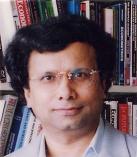 While 1.3 billion people struggle to live on less than $US1 a
day, the world's richest 200 people have their net worth
more than $1 trillion. About 840 million people are
malnourished, and close to one billion find it difficult to meet
their basic consumption requirements. More than 880 million
people lack access to health services, and 2.6 billion people
have no access to basic sanitation. Their needs cannot be
satisfied by the market system when one of the richest countries
of the world cannot satisfy the basic needs of almost one third
of its population using the same market system. While 1.3 billion people struggle to live on less than $US1 a
day, the world's richest 200 people have their net worth
more than $1 trillion. About 840 million people are
malnourished, and close to one billion find it difficult to meet
their basic consumption requirements. More than 880 million
people lack access to health services, and 2.6 billion people
have no access to basic sanitation. Their needs cannot be
satisfied by the market system when one of the richest countries
of the world cannot satisfy the basic needs of almost one third
of its population using the same market system.
After looking at
the experience of
USA
and the
UK
,
India
should learn that the Anglo-American model does not work. They
have failed to lift up the living standard of their own poor and
thus cannot provide any lesson for India.
Anglo-American economics, whether of David Ricardo of 18th
century or Paul Samuelson or Robert Merton of 20th century,
looks beautiful in the virtual world but it is meaningless in
the real world. Our Prime Minister who has learned only a very
diluted form of that economics has no clue how to solve
India
"s perennial problem of poverty with the virtual instrument
of the Anglo-American economics. There was no financial melt
down in the Soviet Union, but every citizens were assured of
adequate housing free of charge where the state used to provide
all utilities, electricity, water, gas, heating, free of charge
as well. Anglo-American model, which depend on the private
mortgage market and the whims of the real estate agents could
not provide adequate housing for everyone. Those who have
attempted to overcome that problem by taking loans which they
could not afford, ended up as both homeless and loan-defaulter
at the end and the Anglo-American financial system that is
supposed to provide efficient market solution to the housing
problem failed miserably at the end of the day.
(source:
The
End Of American Capitalism? - By Anthony
Faiola and
Global
economic meltdown and Swadeshi
A
few political leaders from the capitalist world have the courage to accept the
failure of capitalism, which is full of greed and exploitation. The President of
France and the present Chairman of European Union have recently accepted
the failure of crony capitalism.
J K Galbraith has
disclosed in The Industrial State that monopoly in capitalist world and
bureaucracy in management in former
USSR
are not different.
The West has been eulogising all the time that laissez
faire has no alternative for smooth economic activities. The state should not
intervene in private sector’s activities for making the economy most
competitive and achieving continuous economic growth. They, however, have
ignored the aspect of economic equality among all the players of the economy.
What we witness today in the developed countries is that big hundreds of
corporations, financial institutions and banks are standing in a queue to beg
financial ‘bail out’ for their own survival.
History
of capitalism has blessed some people who are in minority when compared to the
entire population of the world. This history, however, is tainted with warfares,
oppressions and injustices, holocaust, racism, colonialism, slavery,
exploitation of all kind, economic equality, pollution of water, air, food and
cultures, homelessness, poverty etc. When big corporations control our finances,
media and legislators, our freedom, democracy and the well-preserved
civilisation will be only an illusion.
The
USA
model was marketed as the ideal capitalist model for others to emulate for
removing poverty and achieve all round prosperity. The
USA
and other developed countries have used many tactics and coercive forces on
developing economies for opening their economies and become a part of global
world for sharing the gains of ‘free market’ economies. Marxian economy has
collapsed in early 1990s. It had some of the contradictions what we see in
present day capitalism. It was nothing but the ‘state capitalism’. Monopoly
of all economic activities was centralised in the state. Both systems have created and eulogised classes
of people.
Marxism
has collapsed due to this contradiction. Now it is the turn of capitalism to
collapse. Signals of collapse of capitalism are now clearly visible across the
world The collapse is not going to get restricted to developed countries, but it
would take the developing countries like India along with.
At the time of importing monopoly and exploitative capitalism in to our country,
i.e., around 1990s, there was quite a resistance from some of our experts
against the very capitalistic economic model. This model was imported without
taking the Parliament and the people of this great country into confidence. Many
experts were instead arguing the case for Swadeshi economy. The Swadeshi Jagran
Manch was established for propagating the Swadeshi concept of economy for the
welfare of all. This model was eco-friendly as well as non-exploitative. The
opposition to Swadeshi model of economy was coming from those who believed in
and also taught to their followers and students in colleges the concept of
western capitalism. Whatever form the West was good enough for these
‘experts’. This was the slavery mentality. It is still continuing among the
so-called experts. Some of them also sarcastically called Swadeshi approach a
‘reaction’ to the capitalism and Marxism
Water,
air, ecology, human health and cultural values have suffered serious damages. All
this is happening due to greedy minds of some people in the West who believe in
material satisfaction. By damaging natural resources they feel that they are the
most ‘developed’ people and their nations. Their civilisation has no moral
values, ethics, love and concern for others who live along with them in the same
world. Those who do not believe in such materialistic pleasure but pursue the
path of spiritualism are being called ‘backward’ or poor people. Now the
question that has come up before us is whether we should continue such menace of
consumerism and lose our civilisation’s identity forever. I must say that this
time around the western social leaders have realised that their civilisation is
in the process of demolition as they have reached the plateau of materialistic
happiness. It may be difficult for us to change the attitude and objective of
these so called ‘developed’ people. But we certainly can stay away from them
by aggressively adopting our own values and retaining our thousands of years old
civilisation.
(source:
Global
economic meltdown and Swadeshi - By DG Bokare
- organiser.org).
Top
of Page
Hindu Neel
Kashkari: A Portrait of the $700 Billion Man as a Young Banker
Move over Bobby Jindal - here comes Kashkari
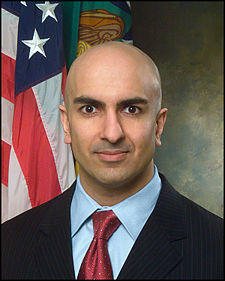 Kashkari, (1973 - ) the 35-year-old interim head of the Office
of Financial Stability, has been the source of great worry. Many
fear he’s too young and too inexperienced to handle the task
of rebuilding the nation’s financial system. Of
course, Kashkari may just have the job for a few months. Paulson
made clear he will appoint somebody and try to get the new
person confirmed in November, and that person would transition
into the next administration. Kashkari, (1973 - ) the 35-year-old interim head of the Office
of Financial Stability, has been the source of great worry. Many
fear he’s too young and too inexperienced to handle the task
of rebuilding the nation’s financial system. Of
course, Kashkari may just have the job for a few months. Paulson
made clear he will appoint somebody and try to get the new
person confirmed in November, and that person would transition
into the next administration.
Forty-five
days isn’t a long period in normal times, but in this crisis
it’s an age. To get a better understanding of him, Deal
Journal spoke to people who knew Kashkari well in his childhood
and during his time at Goldman Sachs to find out the character
and working style of the man who is managing the nation’s
bailout. Here’s the portrait that emerged: Kashkari is smart,
dutiful, detail-oriented, and takes orders well. In the parlance
of investment banking, he is a good “execution guy”: He
leaves strategy to the bigwigs. But if you give him a project,
he will prioritize, delegate and finish it.
These
people report he has an amiable manner and is a good, intent
listener. He doesn’t make waves and never dominates a
discussion; he thinks before he speaks and he lets people
express themselves. He is particularly good at presenting
complicated ideas and leading team projects that depend on
gaining cooperation from others. Those include the Sunrayce
project to build a solar car as well as his work on the space
telescope. “Neel is just plain good, with a high standard of
ethics,” said Dr. Surinder Bhardwaj, a Hindu community priest
who is a close family friend to the Kashkaris in
Ohio
. “This is a responsibility that requires the interest of the
nation as a whole, and requires a very strong base of morality,
which he has.”
Kashkari
comes from a small, tight-knit community of Indian
Hindus in
Ohio
, where his parents had a high profile in the local community.
His mother, a pathologist, was known as a community resource.
“She’s a good listener and helps guide people out of
stressful situations,” said Dr. Bhardwaj. “They are very
compassionate people, his parents, and maybe that’s where
he’s getting his value system from.” Kashkari’s father is
a retired engineer with a bent to public service, particularly
in
West Africa
, where he spearheaded efforts to bring electricity and clean
water to poor villages. Kashkari met his wife, Minal, in college
at the
University
of
Illinois Urbana-Champaign
. They were married in a traditional Indian ceremony in Chicago
where participants remember the bride being carried in on a
festive palanquin and Kashkari, busy even then, taking the time
to put each guest at ease.
(source: Neel
Kashkari: A Portrait of the $700 Billion Man as a Young Banker
- wsj.com).
Top
of Page
False
Gods?
Should we be Worshipping 'mutilated
corpse of a dead Arab stuck on a stick'.
"World
is worshipping false idols like those worshipped by the pagans
of antiquity." -
says Pope
Benedict

Adoration
of Lord Vishnu
***
(Note:
Therefore, the world must worship the true idols: that dubious work of
mythology, the Bible, and the 'mutilated
corpse of a dead arab stuck on a stick'.
At least the Statues worshipped by Pagans never sodomize,
tortured and kill. Or manufacture dubious saints or installed
the notorious Inquisition).
"Has not our modern world created its own idols?" he
said, recalling ancient pagans who worshipped gold and silver
statues. "Has it not imitated, perhaps inadvertently, the
pagans of antiquity, by diverting man from his true end, from
the joy of living eternally with God," he said. "Have
not money, the thirst for possessions, for power and even for
knowledge, diverted man from his true destiny?" he said,
wearing gold, white and red vestments and speaking fluent
French.
Pope
wears Prada and Gucci
The
Pope has been seen wearing Prada shoes and Gucci
sunglasses. the
pope's penchant for wearing luxury designer clothing.
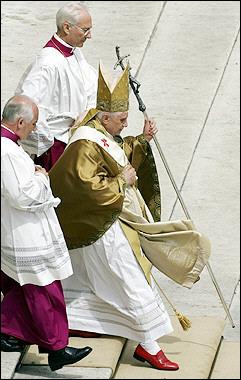
Pope
wearing Prada shoes and Gucci sunglasses.
Pope's
repeated attacks and sermonizing on money and power because,
well, he has lots of money and power.
Besides his affection for
Prada and Gucci, just how frugal is life at the Vatican Palace?
***
Pope's
repeated attacks on money and power because, well, he has lots
of money and power. Besides his affection for Prada and Gucci,
just how frugal is life at the Vatican? Anyone who has ever visited the
Vatican
is no doubt familiar with the luxuries inside and that's only
the section that they allow outsiders to see. I hear it's much
nicer inside and despite the big talk of abstinence for others.
(source: The
Pope wears Prada - newsweek.com).
Top
of Page
The
Indian who made the Big Bang test necessary
Satyendra
Nath Bose (1894 - 1974)
and Western Racism
Of
the three main past and present physicists behind the landmark
proton-smashing quantum physics experiment in
Geneva
on Wednesday, one has a Nobel Prize, the other is waiting to
find out if he has one, and the third never got one. The third
man is the Bose of the ‘Higgs boson’ experiment — Satyendra
Nath Bose. It is Bose after
whom the sub-atomic particle ‘boson’
is named — probably the only noun in the English language
named after an Indian (hence never capitalised).
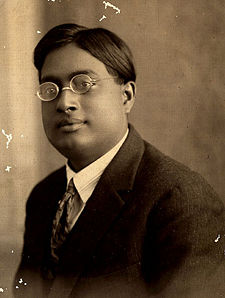

Satyendranath
Bose and Big Bang Experiment.
It
is Bose after whom the sub-atomic particle ‘boson’ is named
— probably the only noun in the English language named after
an Indian (hence never capitalised). “I
certainly do think he deserved the Nobel. When I was researching
my documentary I was outraged that this man was so brilliant,
yet so overlooked, perhaps because of institutionalised racism.
No one gave a damn because he was an Indian."
***
The Large Hadron
Collider experiment in Switzerland
on Wednesday could not have happened without Bose and Albert
Einstein.
In
1924, Bose sent a paper to Einstein describing a statistical
model that eventually led to the discovery of the Bose-Einstein
condensate phenomenon.
The paper
laid the basis for describing one of the two categories of the
elementary particles that make up an atom — one was boson, and
the other came to be known as fermion, after the Italian
physicist Enrico Fermi. Einstein had already won the Nobel in
1921 for services to theoretical physics and the discovery of
the law of the photoelectric effect, and Fermi won it in 1938. Decades
later, in 1964, the British scientist Peter Higgs returned from
a walk in the Scottish mountains to tell his colleagues that he
had just experienced his “one big idea”, which could hold a
clue to how matter in the universe got its mass in the billionth
of a second after the Big Bang.
Higgs
eventually came up with his theory of the Higgs boson, a boson
that gives mass to all other subatomic particles that happen to
interact with it in a ‘Higgs field’. The more they interact,
the heavier they become. And the ones that don’t interact
don’t gather mass. The theory could not only throw further
light on the creation of the universe, but also help explain the
shape of it.
Wednesday’s
experiment at the European Centre for
Nuclear Research (CERN) in Switzerland, where protons
will be smashed against each other at great speed, will be the
first attempt to actually observe the Higgs boson - nicknamed
the ‘God particle’. So far, it is the last undetected
elementary particle, also called a fundamental particle, going
by the standard theory of particle physics. Higgs, who is
professor emeritus at
Edinburgh
University
, is now widely tipped to win the Nobel, particularly if the
Higgs boson is detected.
The first
Nobels for physics in the 21st century went jointly to three
Americans — Eric Cornell, Carl Wieman and Wolfgang Ketterle.
They won it for creating the ‘condensate’ — a new type of
matter — that Bose and Einstein had postulated.
According
to Bose’s grandson Falguni Sarkar, six other physicists have
won the Nobel for work in the area of Bose statistics. However,
34 years after his death, the Nobel continues to elude Satyendra
Nath Bose himself. Sharon Ann Holgate, a British science writer
and broadcaster who made an acclaimed radio documentary on Bose
for the BBC some years ago, said she had no doubt the Indian
deserved a Nobel.
“I
certainly do think he deserved the Nobel. When I was researching
my documentary I was outraged that this man was so brilliant,
yet so overlooked, perhaps because of institutionalised racism.
No one gave a damn because he was an Indian,” she told IANS.
“I was really angry, and wanted to
make him a bit more widely known.” Holgate added.
(source:
The
Indian who made the Big Bang test necessary -
sify.com).
Top
of Page
In Praise of
Lord Krishna - Songs from Bengal
In India, the worship of Lord
Krishna unites reverence with passion, for he appears to mortals
as both God and lover. Songs in his praise are in fact religious
love poems. Above the highest heaven is the dwelling place of
Krishna. It is a place of infinite idyllic peace, where the dark
and gentle river Yamuna
flows beside a flowered meadow, where cattle graze; on the
river's bank sweet-scented trees blossom and bend their branches
to the earth, where peacocks dance and nightingales call softly.
Here Krishna, ever-young, sits beneath the trees, the sound of
his flute echoing the nightingales' call. Sometimes he laughs
and jokes and wrestles with friends, sometimes he teases the
cowherd-girls of the village, the Gopis, as they come to the
river for water. And sometimes, in the dusk of days an eon long,
his flute's summons the Gopis to his side. He is the fulfillment
of all desire. The loveliest and most beloved of the Gopis is
one called Radha.
It is told in ancient Hindu
texts that once, long, long ago, Lord Krishna came to earth, and
with him came all the things and people of his heaven - the
river, the cows, the peacocks and nightingales, and the Gopis
who love him. The story takes place in Vrindavan, in a kind of
micro time, all that is happening eternally in the source, the
heavenly Vrindavan. And, it is said, all this what takes place
in the human heart; the Gopis' love for
Krishna is the love of man for God.
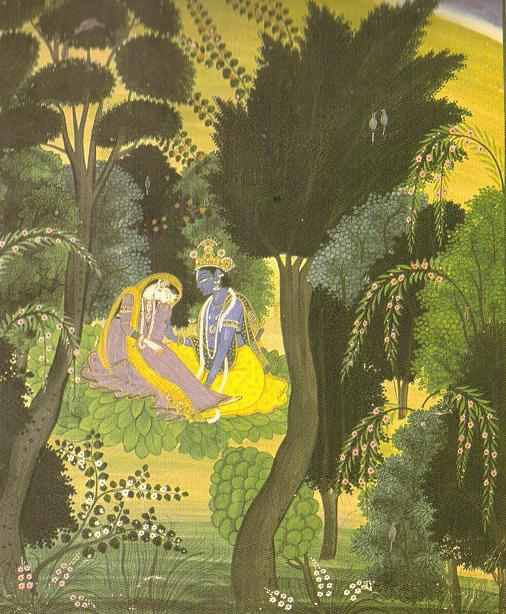
Radha Krishna
in Vrindavan.
The Gopis' love for
Krishna is the love of man for God. The loveliest and most beloved of the Gopis is
one called Radha. Radha longs for utter union
with her divine and emerald-colored (Shyam,
dark-colored) lover
***
It is man's nature to long for
that which is most beautiful: the gentlest of sounds, the most
radiant color, the sweetest scent, his whole body for that which
is most tender and full of grace. The sound of Krishna's flute
is gentlest. His body, glowing like a blue jewel, is most
radiant. His scent is sweetest. And the grace of his posture and
the tenderness of his love are the most soothing, and most
exciting, to the heart which yearns. Radha longs for utter union
with her divine and emerald-colored (Shyam,
dark-colored) lover:
Let the earth of my body be
mixed with the earth
my beloved walks on.
Let the fire of my body be the brightness
in the mirror that reflects his face.
Let the water of my body join the waters
of the lotus pool he bathes in.
Let the breadth of my body be air
lapping his tired limbs.
Let me be sky, and moving through me
that cloud-dark Shyama, my beloved.
(source: In
Praise of Krishna: Songs from the Bengali - Translated
By Edward C Dimock and Denise Levertov p. vii - ix).
Top
of Page
Chinese
'gopi' collects
Krishna
Statues
You could
call Wen Kunrong, a
54-year-old Chinese woman, a devotee of Hindu God Krishna, but
she would rather be called his 'gopi' (consort). She has
collected nearly 20,000 idols of her favourite deity, not just
from across
India
but from different countries. Kunrong,
who runs a restaurant at
China
Town
in eastern Kolkata, is a passionate collector of
Krishna
idols since 1974. Ancestors of many residents in the area
migrated from southern
China
in the 19th century. Kunrong's family has been here for five
generations.
"It
was my 20th birthday and a Bengali friend gifted me a tiny stone
idol of
Krishna
. As soon as I looked into the eyes of the idol I felt a soul
connection with him. It seemed as if I am born for him. Since
then my
Krishna
hunt is on. All I look out for anywhere I go is
Krishna
and I can't control myself on seeing his idol," Kunrong
told IANS.

Krishna
statues
Despite being
a Chinese, every day I read translations of Bhagavad
Gita (a book containing
Krishna
's teachings) and also worship him. Every year during
Janmashtami (
Krishna
's birth anniversary) there is an elaborate ceremony at my
place," Kunrong said.
***
Kunrong
has a collection of 19,366 Krishna idols. I
am too possessive about my Krishna and fantasise myself as Radha
as well as Meera (
Krishna
's famous devotee). Despite being a Chinese, every day I read
translations of Bhagavad Gita
(a book containing
Krishna
's teachings) and also worship him.
Every
year during Janmashtami (
Krishna
's birth anniversary) there is an
elaborate ceremony at my place," Kunrong said.
She has
collected Krishna idols not only from across
India
but also from different countries. "I have collected idols
from almost every corner of
India, including
Delhi
,
Bangalore
,
Hyderabad
,
Mathura
, Vrindaban, Mumbai, Chennai, as well as from
Tibet,
Nepal,
China,
Australia,
America,
Japan
,
Costa Rica
and
Spain
," Kunrong said.
"My
addiction to Krishna has made me want to capture him in all
possible moods and I christen them as I wish - Hanging Krishna,
Angel Krishna, Baby-face Krishna, Flute-less Krishna, Swan-rider
Krishna, Buddha-Krishna, Laddu-Gopal and Makhan-chor Gopal are
some of them," Kunrong said. When it comes to getting a
Krishna
idol, Kunrong makes her pick from roadside stalls to shopping
malls. "Most of the idols I picked up are either from
street hawkers or roadside stalls. Some are from shopping malls
and curio shops as well. And obviously, knowing of my passion
for
Krishna
, I get similar gifts from friends and relatives too. "I
don't go by the price tag while getting a
Krishna
idol. Prices for the idols in my collection range from Rs.10 to
Rs.100,000. I am a single woman and don't have a family as such.
So whatever I earn is for
Krishna
," Kunrong added.
(source: Chinese
'gopi' collects
Krishna
Statues - hindustantimes.com)
Top
of Page
Kailasa
museum in Java, preserving Hindu civilization
As the oldest site of Hindu
civilization on Java, Dieng is often seen by
some people as the location of an ancient Hindu kingdom due to
the lack of information. In reality, no kingdom was ever set up
on this plateau. It was the center of Shiva worship for Hindu
saiwa sect followers during the 7th to 12th centuries.
The presence of this sect is shown through its Hindu
features in the temple complex. For instance,
Arjuna
Temple
within the Dieng complex has the wimana
(bamboo structure design) in
India
while
Bima
Temple
represents the sikhara or
India
's pagoda. One of the inscriptions also refers to
Dieng as Kailasa, which is believed to be the heavenly
abode of Shiva. Kailasa is also the name of a sacred
mountain considered to be the center of the world by local
Hindus.
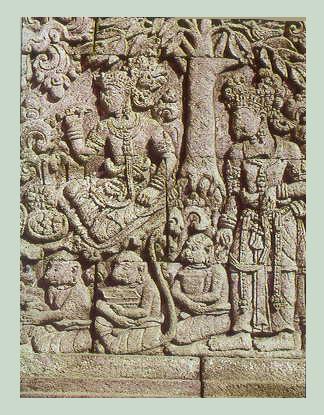

Jave
relief and Bhima temple.
Preserving
Hindu civilization.
***
Sadly, though, the historic value and natural
marvels of Dieng have gone largely unnoticed. People are more
familiar with Borobudur
Temple
and other historic places thanks to their better marketing
systems. In an effort to provide comprehensive information on
Dieng, the Banjarnegara regency administration in cooperation
with archeologists, historians and volcanologists of Yogyakarta's
Gadjah Mada University (UGM) and the Archeological
Heritage Conservation Agency has opened Kailasa
Museum. UGM archeologist Nia Nugrahani said preparations for the
museum had taken place for years, but that intensive studies of
Dieng, involving various disciplines of science, had been
undertaken in the past 22 months.
Themed "Dieng in natural and cultural
history", the studies gathered everything about the zone
from the plateau's formation to the tradition of locals.
"It's like doing a jigsaw to create a Dieng information
system," Nia said. Dieng plateau is the second highest
plateau in the world after
Nepal
. It lies at an altitude of 2,093 meters, where cool air, a
beautiful hilly panorama and diverse flora and fauna can be
enjoyed. When the weather is fine, Dieng is the only place to
watch the glows of the so-called "double sunrise". As
a hilly zone formed out of millions of years of volcanic
activity, Dieng is also naturally endowed with a lake called
Telaga Warna -- named after the different colors it reflects as
rays of sunlight pour over its surface.
(source: Kailasa
museum in Java, preserving Hindu civilization -
jakartapost.com).
Top
of Page
Ramayana
most popular performing art in Bangladesh
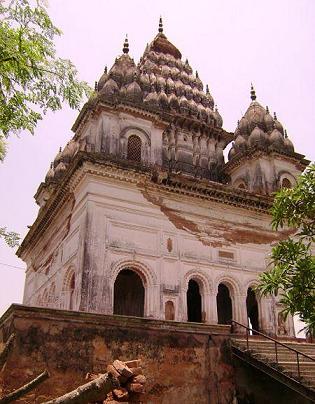 Hindu
temples are more or less distributed all across the
country. Hindu
temples are more or less distributed all across the
country.
The
Kantaji
Temple
is an elegant example of an 18th century temple. The most
important temple in terms of prominence is the
Dhakeshwari
Temple
, located in
Dhaka
. This temple along with other Hindu organizations arranges
Durga Puja and Krishna Janmaashtami very prominently. The other
main
temple
of
Dhaka
is the Ramakrishna Mission.
***
In
the green hinterland of Islamic
Bangladesh
, the Ramayana is the most popular performing art form, says a
leading playwright of the country.
"At least eight versions of the Ramayana, mostly folklore-based
performances, are enacted in the countryside of
Bangladesh
. It is one of the most popular epics in the country, surpassing
even the Mahabharata in its ratings." In Agra
to attend the SAARC (South Asian Association for Regional
Cooperation) Festival of Literature, Zakaria is an Islamic
scholar who has written extensively about the Ramayana and the
performances associated with it. He is attached to the
Bangla
Academy
in
Dhaka
.
"Ramayana in villages of
Bangladesh
is interpreted as a social comment exploring the model
relationship between the husband, wife and the members of the
family. References to Ramayana can often be found in local
folklores that describe filial conduct codes and in domestic
conservations," Zakaria said.
Sita's "Agni Pariksha" (test by fire), for example,
was usually interpreted as the tribulations of the average
Bangladeshi woman, who was subjected to tests both at her
father's home, in-laws' house and in the conservative Islamic
social mosaics of the villages that still frowned upon gender
equality and freedom, explained the playwright.
Zakaria describes the different forms of "Ramayana" in
Bangladesh
in the context of the folk cultures of the districts and history
of the country's performing arts in his book, "Bangladesher
Lok Natak (Popular Theatre of Bangladesh)".
One of the oldest and most widely-enacted folk performances of
the epic is the "Kushtiya Ramayan Gaan", which
originates from Zakaria's native district, Kushtia, home of the
legendary "baul" poet Lalan Fakir.
"Ram Kirtan" is common to Gopalganj in Kushtia.
"It is a secular interpretation of the epic sung and
enacted by one narrator known as the "dohar" or the
"sutradhar" - who acts as the story-teller," the
playwright explained.
The theatrical performance of "Ram Mangal", the rural
folk art form of Kishorganj, flourishes throughout the "bhakti"
belt of Mymensingh district. "Ram Mangal is an invocation
of Lord Rama, an incarnation of Vishnu, performed in the Bhakti
(prayer songs) tradition," Zakaria said.
Bangladesh also pays its tribute to Sita, the princess of
Mithila and the queen of Ayodhya, through the "Chandravati
Ramayan", a 16th century version of the epic scripted by
Bengal's first known poetess, Chandravati. Chandravari Ramayana
is sung by the women of Kishorganj as "geet gaan"
during weddings.(source:
Ramayana
most popular performing art in
Bangladesh - newkerala.com).
Top
of Page
William Wordsworth (1770
- 1850) was a
major English Romantic poet who, with Samuel Taylor Coleridge,
helped launch the Romantic Age in English literature with their
1798 joint publication, Lyrical Ballads.
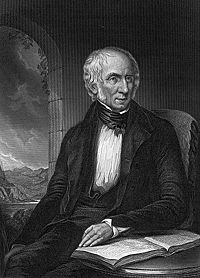
....then,
as the Hindoos draw
Their Holy Ganges from a skiey fount,
Even so to deduce the stream of human life
From seats of power divine; and hope ...
That our existence winds her stately course
Beneath the Sun, like Ganges, to make part
Of a living Ocean."
(source:
The excursion - By William
Wordsworth).
Top
of Page
Hinduism
makes India
a successful democracy : Advani
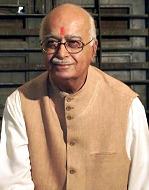 Bharatiya
Janata Party (BJP) prime ministerial candidate LK Advani on
Friday said only Hindu religion allows
secularism and pluralism, making
India
a successful democracy. Bharatiya
Janata Party (BJP) prime ministerial candidate LK Advani on
Friday said only Hindu religion allows
secularism and pluralism, making
India
a successful democracy.
"For
the success of democracy, there should be tolerance for the
other point of view. Intolerance is most visible in religious
matters.
Hindu
polity never accepts theocracy, making us a successful
democratic nation," Advani told a gathering during a book
launch function organised by India
First Foundation.
He
gave examples of theocratic nations to prove that it is only
India
that could support democracy.
"Generals
and others take over nations after independence in theocratic
nations. Look at
Bangladesh
, we gave them a secular nation but they could not sustain that
for long," Advani pointed out. Commenting
on one of the three books released at the function, 'Fateful
Fourth Generation' - a compilation of dynasties of the world
that fell during their fourth generation, Advani laughed and
said, "I will not comment on this for it might create a
controversy, but going by the examples it seems that all the
troubles begin at the fourth generation."
He
said the present United
Progressive Alliance (UPA) government
is "intentionally inactive"
against terrorism.
"We
keep on deceiving ourselves for the sake
of vote bank politics. Why can't we see the obvious
and take action against it. Is it our policy or habit now to
keep deceiving ourselves?" he asked.
(source:
Hinduism
makes
India
a successful democracy: Advani
- ibnlive.com). Refer to Sarah
Palin Linked To Spiritual Warfare Network
Top
of Page
Elephant-shaped
Ganesh Plant, A Small Miracle in New York
Sam Lal, a Hindu who immigrated
from Guyana 30 years ago, found a flower near his garage growing
in the unusual shape of an elephant's head and trunk. At just
about the same time, a back pain that had been hurting him for
months disappeared. "This formation came to heal my
illness," said the 60-year-old Hindu.
Experts at the Queens
Botanical Garden identified the plant as a member of
the amaranth family, which is native to Africa, India and southern
Central America. Horticulturalists at the garden have never seen
an amaranth take an elephant-like shape, garden spokesman Tim
Heimerle said. "For it to have that
long trunk like this is not a natural thing," he
said.


Lal believes
the flower's position - growing through concrete, facing a garage
he converted to a prayer space - is evidence of a connection to
Lord Ganesh, revered as the Remover of Obstacles.
***
Lal believes the flower's
position - growing through concrete, facing a garage he converted
to a prayer space - is evidence of a connection to Lord
Ganesh, revered as the Remover
of Obstacles. Lal knows some people will be skeptical
and insisted he did nothing to sculpt the flower. Experts said
that wouldn't be possible anyway, because the plant is too
fragile. With the fall chill in the air, Lal covers the flower at
night to protect it from cold; amaranths are frost-tender.
"It hurts me to know I'll lose it."
(source: Elephant-shaped
Ganesh Plant, A Small Miracle in New York - hinduismtoday.com).
 Did
you Know Did
you Know
Goddess
Saraswati Statue in
Belfast
Gardens of Northern Ireland
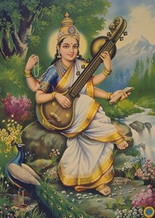 This
is one of the first non-Christian religious artworks in a public
place in
Northern Ireland
and is situated in the Palm House in Botanic Gardens Belfast. This
is one of the first non-Christian religious artworks in a public
place in
Northern Ireland
and is situated in the Palm House in Botanic Gardens Belfast.
ArtsEkta
,
Northern Ireland
first and
only Multi-Ethnic arts organisation, last week unveiled a wood
carving of Saraswati Mata, Hindu Goddess of Arts and Knowledge.
This is one of the first non-Christian religious artworks in a
public place in
Northern Ireland
and is situated in the Palm House in Botanic Gardens Belfast.
The woodcarving was placed in
Belfast
’s Botanical gardens in memory of Vyishnu Somasundram, a young
and dedicated volunteer who worked hard for the community in
Northern Ireland
. He passed away sadly in September 2007 at the young age of 15.
Nisha Tandon, ArtsEkta’s development manager, said, “Vyishnu
was a great asset to
Northern Ireland
’s arts community, a very talented artist and dedicated
volunteer. He will be missed for ever.” Commenting on the
carving, she said, “This is a very appropriate memorial.
Vishnu himself had supported the idea of having this created a
month before his death. He was a Hindu and great artist, the
theme of Saraswati is ideal.”
The Somasundram family came to
Northern Ireland
seeking asylum from
Sri Lanka
. Shortly after Vishnu’s tragic death, asylum was granted.
(source: Saraswati
Statue in
Belfast
Gardens - organiser.org).
Top
of Page
|